

Coca-Cola Branding Strategy and Marketing Case Study
Analysis and examples of coca-cola’s identity, positioning, key messages, tone of voice, brand archetypes, customer benefits, competitors, and marketing content..
Back To The Branding Strategies Homepage
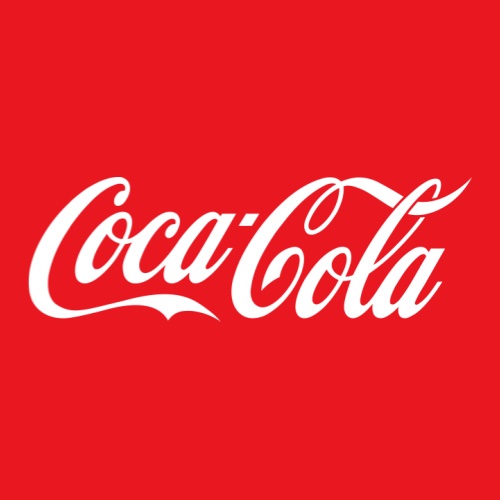
Brand Overview
- Food & Beverage
- Non-Alcoholic
Business Type
Physical Products
https://coca-cola.com
Target Customer
Soft Drink (Soda) Consumers
Primary Need ( Job To Be Done )
Have a classic cola soft drink that delivers a flavor I’ve enjoyed my entire life
Brand Visual Identity & Content
Primary brand colors, brand typefaces, hero content.

Hero Content Type
Content features people, brand messaging, key messages, benefit or feature focus, tone of voice, brand archetypes.
( Learn More About Brand Archetypes )

Everyperson

Brand Positioning ( Elements of Value )
( Learn More About The Elements of Value )
Aspirational
Affiliation & Belonging

Sensory Appeal

Brand Benefits
Enjoy a soft drink that provides a predictable, classic flavor
Connect with a drink that I know will be the same no matter where I am
Feel a sense of nostalgia for a drink that you’ve enjoyed with friends and family your whole life
Competition
Key competitors.
Pepsi, Dr. Pepper , 7-Up, Mountain Dew, Sprite, Fanta, Schweppes, La Croix, Bubly
Get Help Growing Your Brand

Get a 10 page workbook on Purpose, Vision, and Values. Plus resources for Archetypes, Tone, Messaging, and more.
Check your email to confirm your address and receive your workbook!

The Coca-Cola Brand: An Iconic Branding Strategy
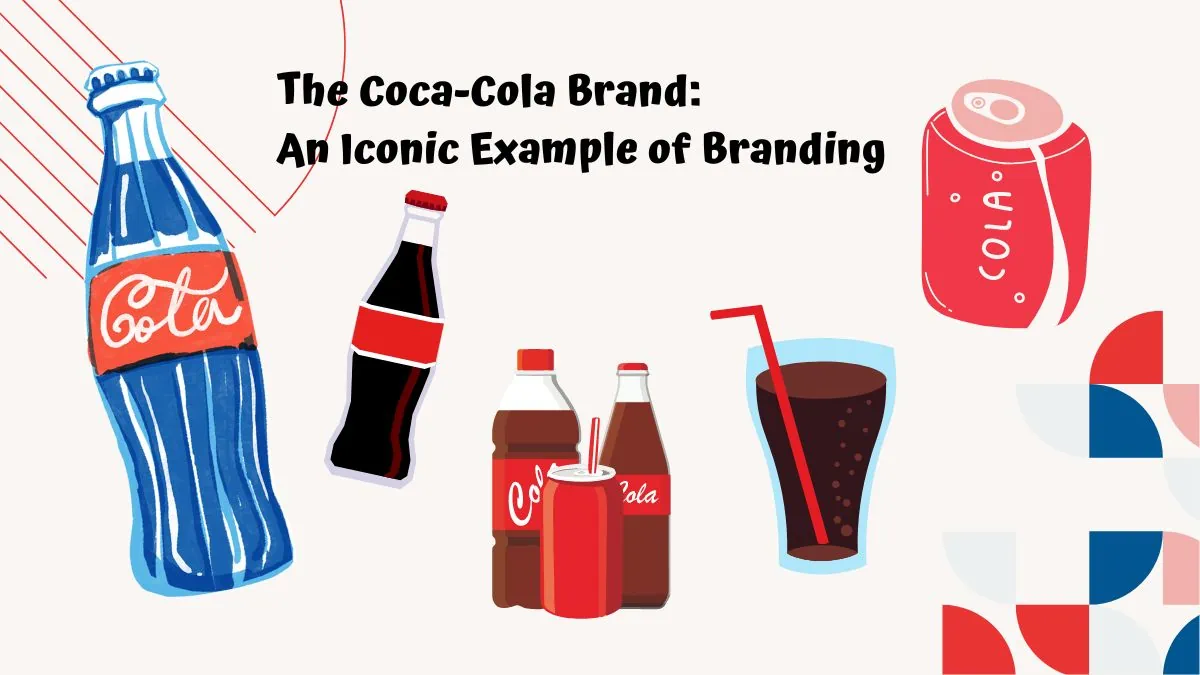
Imagine that you’re in a grocery store, walking down the beverage aisle.
Amidst the myriad of colors and logos, one particular design catches your eye – a familiar red label with a white script that reads: Coca-Cola.
Instantly recognizable, isn’t it? There lies the magic of the Coca-Cola brand.
Coca-Cola is more than just a beverage company. It’s a global brand that symbolizes a lifestyle, an attitude.
A symbol of joy, refreshment, and unity, it’s a brand that has successfully bridged cultures and continents. Its profound success can be credited to more than just its secret formula or famous Coca-Cola products.
The true essence of Coca-Cola lies in its powerful and iconic branding.
The Birth of Coca-Cola Brand
The story of Coca-Cola began in 1886 when a pharmacist named John S. Pemberton concocted a sweet, caramel-colored liquid and mixed it with carbonated water. The result was a refreshing beverage that was initially sold for five cents a glass at the local soda fountain.
The branding of Coca-Cola, however, was the brainchild of Pemberton’s bookkeeper, Frank M. Robinson. Robinson not only named the drink “Coca-Cola” but also designed its now-famous script logo. He believed that the two Cs would look striking in advertising – and he couldn’t have been more right. The Coca-Cola logo has now become one of the most recognized brand symbols globally, laying the foundation of a brand that would become an integral part of popular culture.
The Evolution of the Coca-Cola Logo
From its inception, the Coca-Cola logo has been a cornerstone of the brand’s identity. The logo’s elegant Spencerian script, named after calligrapher Platt Rogers Spencer, has remained largely unchanged since its creation in 1886.
The first major evolution came in 1947 when the Arciform or “fishtail” logo was introduced. It featured the Coca-Cola script inside an arc shape, symbolizing a friendly, dynamic, and approachable brand.
In 1969, the Arden Square logo was introduced, which enclosed the logo inside a red square or rectangle. This design has been modified slightly over the years, but the classic white script on a red background has remained consistent, signifying the brand’s commitment to its roots, while adapting to the evolving marketplace.
The consistency in the Coca-Cola brand identity over more than 130 years is a testament to the power of strong visual branding. It underlines the brand’s ability to evolve with the times, while staying true to its identity – an element crucial to its widespread recognition and appeal.

The Coca-Cola Company Brand Message and Taglines Over the Years
Since its birth, Coca-Cola has conveyed a consistent brand message: sharing, happiness, and refreshment. This message has been amplified through a series of memorable taglines that resonate with consumers worldwide.
Starting with “Drink Coca-Cola” in 1886, the company’s taglines evolved with the changing times and market needs. From “Delicious and Refreshing” (1904), encapsulating the beverage’s unique selling proposition, to “The Pause That Refreshes” (1929), addressing the growing fast-paced lifestyle of the American public.
Perhaps one of the most iconic taglines was “It’s The Real Thing” (1969). Amidst a period of political and social change, this slogan anchored Coca-Cola as a genuine, authentic experience. Later, “Always Coca-Cola” (1993) and “Open Happiness” (2009) further deepened the brand’s association with joy and positivity.
Most recently, “Taste the Feeling” (2016) combines the refreshment of the Coca-Cola drink with the emotional resonance of its brand. Each tagline represents a snapshot of the brand’s evolution, marking its journey as a constant provider of refreshment, joy, and shared happiness.
The Iconic Coca-Cola Bottle Design
The Coca-Cola bottle, colloquially known as the “contour bottle” or the “hobble skirt” bottle, is another cornerstone of the Coca-Cola company’s branding.
Created in 1915 by the Root Glass Company, the bottle design was a response to a challenge set by Coca-Cola: to create a bottle that could be recognized in the dark or even if broken.
The result was a unique, curvaceous bottle, inspired by the ridged shape of a cocoa pod. Its design was not only distinctive but also ergonomic, fitting perfectly in the hand. In 1960, it was registered as a trademark by the U.S. Patent Office – an unusual feat for a commercial package.
The Coca-Cola bottle embodies the brand’s commitment to innovation, uniqueness, and customer experience. Its timeless design remains largely unchanged, making it an enduring symbol of the brand and a classic piece of industrial design. Today, whether you see it on a supermarket shelf, on television, or in a social media post, the contour bottle instantly says “Coca-Cola”.
The Role of Color in Coca-Cola’s Branding
Coca-Cola’s success goes beyond its script logo and unique bottle design.
One cannot discuss Coca-Cola’s branding without mentioning its iconic color – Coca-Cola Red. The brand’s consistent use of this vibrant, energizing shade of red has helped it establish a strong, memorable identity and is the basis of any marketing strategy.
The exact shade of Coca-Cola Red is a closely guarded secret.
However, its ubiquity is undeniable. This specific shade of red, often used in tandem with white, gives Coca-Cola packaging its unmistakable look. Whether on a can, a bottle, or an advertisement, this use of color has helped Coca-Cola create a strong visual identity that stands out in a crowd and immediately brings the brand to mind.
The power of Coca-Cola Red exemplifies the strategic use of color in branding. It underscores how Coca-Cola’s marketing team was able to use a consistent and thoughtful color palette to help the brand establish a unique identity, evoke specific emotions, and create a lasting impression on consumers’ minds.
Coca-Cola’s Brand Identity
A critical aspect of Coca-Cola’s branding success is its well-defined and appealing brand identity.
When you think of Coca-Cola, words like “happy,” “refreshing,” “classic,” and “friendly” come to mind.
This isn’t a coincidence; it’s a result of decades of strategic branding and an unbeatable marketing strategy.
The successful brand identity is characterized by traits such as happiness, optimism, and inclusivity. The brand consistently radiates a positive and uplifting energy, whether through its advertising campaigns, social media presence, or corporate social responsibility efforts.
Through its “Share a Coke” campaign, Coca-Cola demonstrates its friendly, personal, and approachable personality, encouraging consumers to create personal connections over a Coke.
Coca-Cola’s brand personality is also shaped by its commitment to unity and diversity. It regularly produces multicultural and inclusive campaigns, conveying a message of unity in diversity, much like its 1971 “Hilltop” commercial with the famous song “I’d Like to Buy the World a Coke.”
A defined and appealing brand identity is integral to building strong emotional connections with consumers. The world-famous soft drink exemplifies this strategy, fostering a strong emotional bond with its audience that goes beyond the product itself.
Coca-Cola’s Global Branding Strategy
Being a successful brand recognized in every corner of the globe doesn’t happen by accident.
Coca-Cola’s global marketing strategy is a masterclass in understanding your audience and crafting messages that resonate on a universal level.
The principle “think global, act local” beautifully encapsulates Coca-Cola’s global strategy and unstoppable marketing efforts.
Despite being an American company, Coca-Cola has excelled in crafting marketing strategies that resonate with diverse cultures and communities worldwide.
Coca-Cola understands the power of local nuances and taps into this by tailoring its advertising and marketing campaigns to suit local tastes and traditions. For instance, during the Chinese New Year, Coca-Cola releases special edition cans featuring auspicious symbols and messages, while in Brazil, it sponsors the country’s beloved football teams – while still maintaining a consistent brand identity.
By striking a balance between maintaining its universal brand messaging of happiness and refreshment, and catering to local cultures and traditions, Coca-Cola has positioned itself as a global brand that understands and celebrates diversity.
How Coca-Cola Keeps Its Branding Relevant
Maintaining relevance is one of the greatest challenges any brand faces, particularly one with a history as long as Coca-Cola’s. The brand has demonstrated an uncanny ability to evolve with changing consumer tastes, societal shifts, and technological advancements.
Coca-Cola’s ability to stay relevant is largely due to its constant innovation and its ability to listen and respond to its consumers. The company regularly introduces new products and flavors to cater to a broader audience and changing consumer preferences. For instance, in response to the growing health-conscious market, Coca-Cola introduced Coke Zero, a no-calorie version of its signature beverage.
Furthermore, Coca-Cola leverages contemporary platforms and technologies to reach and engage with its audience. The brand maintains a strong presence across various social media platforms, regularly produces engaging digital content, and even dabbles in augmented reality experiences to connect with younger audiences.
Through continuous innovation and a commitment to understanding its consumers, Coca-Cola ensures that its branding stays fresh, relevant, and in tune with the times.
Coca-Cola’s Branding During Crises
Like all global brands, Coca-Cola has faced its share of crises. However, its response to these crises has often been marked by an ability to uphold its brand identity while showing empathy and adaptability.
For instance, during the COVID-19 pandemic, Coca-Cola temporarily halted its advertising campaigns to redirect funds to relief efforts. This included donating to non-profit organizations and providing supply chain support to deliver essential goods.
Also, in its advertisements during this time, Coca-Cola focused on messages of solidarity, hope, and gratitude towards frontline workers. For example, the brand released an ad with white text on a red background that read, “Staying apart is the best way to stay united.”
These actions reinforce Coca-Cola’s brand values of optimism and unity, demonstrating how the brand uses its influential position to contribute positively during crises.
Coca-Cola Marketing Mistakes
Despite its undoubted success, the Coca-Cola brand has also had its share of missteps. These mistakes have provided invaluable lessons not only for Coca-Cola but for the world of marketing as a whole.
- New Coke (1985): Perhaps the most infamous marketing blunder in history, New Coke was the result of Coca-Cola’s attempt to rejuvenate its formula. They replaced the original recipe with a sweeter version, but consumers reacted with such intense backlash that the company was forced to bring back the original as “Coca-Cola Classic” just 79 days later. While it still used a similar formula with high fructose corn syrup, the launch was a flop. The New Coke fiasco taught marketers the importance of understanding and valuing consumer attachment to a product.
- Dasani in the UK (2004): When Coca-Cola introduced Dasani bottled water in the UK, they described it as “pure, still water”. However, it was later revealed that Dasani was essentially treated tap water from a local water supply. The scandal tarnished the brand’s reputation and led to Dasani’s withdrawal from the UK market. This incident underlined the importance of transparency and authenticity in marketing.
- Fairlife Animal Cruelty Scandal (2019): Fairlife, a dairy brand backed by Coca-Cola, faced major backlash after undercover footage revealed animal abuse at one of its supplier’s farms. Coca-Cola faced criticism for not overseeing the practices of its partners, which affected their brand image. The lesson here is the significance of ethical supply chain management in preserving brand reputation.
These instances underscore that even the most successful brands are not immune to marketing mistakes. However, how a brand learns from these mistakes and adapts can significantly impact its long-term success. In each case, Coca-Cola took the criticism, learned, and adapted, reinforcing its position as a resilient and enduring brand.
The Future of Coca-Cola’s Branding
As we look toward the future, it’s evident that Coca-Cola will continue to be a leader in branding. The company’s commitment to innovation and understanding its customers will undoubtedly keep it at the forefront of the branding game.
Coca-Cola’s future branding efforts will likely continue to focus on fostering emotional connections with consumers. The brand is increasingly moving towards digital and experiential marketing strategies, using technology to offer personalized and immersive experiences to consumers.
Sustainability is also an area of focus for Coca-Cola’s future branding. With growing awareness and concern for the environment, Coca-Cola has begun to address these issues in its branding. The company has set ambitious sustainability goals, including a “World Without Waste” initiative, aiming to collect and recycle a bottle or can for each one it sells by 2030.
As consumer values continue to evolve, Coca-Cola’s ability to adapt its branding strategy while staying true to its core identity will be key to its continued success. From its iconic logo and bottle design to its memorable advertising campaigns, Coca-Cola’s branding stands as a shining example for marketers around the world.
Timeline of Important Branding Events for the Coca-Cola Company
1886 – the birth of coca-cola:.
Dr. John Stith Pemberton, a pharmacist from Atlanta, Georgia, created the formula for Coca-Cola. Frank Robinson, his bookkeeper, suggested the name and penned “Coca-Cola” in his unique script that became the iconic logo.
1892 – The Coca-Cola Company was Formed:
Asa G. Candler, an Atlanta-based businessman, took charge and incorporated The Coca-Cola Company.
1915 – The Contour Bottle:
To distinguish Coca-Cola from numerous copycats, the company introduced a unique, contoured bottle designed by the Root Glass Company, becoming a significant part of the brand’s identity.
1923 – The “Pause that Refreshes” Slogan:
Coca-Cola introduced one of its most memorable slogans, “The Pause That Refreshes,” which solidified the brand’s position as a refreshing beverage.
1950 – Coke Goes Global:
Coca-Cola became the first-ever product to appear on the cover of Time magazine. This ushered in Coca-Cola’s global era, expanding to different corners of the world.
1969 – “It’s the Real Thing” Campaign:
Another memorable slogan was introduced, reinforcing Coca-Cola as the genuine and original cola drink.
1971 – “Hilltop” Commercial:
The brand’s global influence was further solidified with the “Hilltop” Coca-Cola ad featuring the iconic “I’d Like to Buy the World a Coke” song, promoting peace and unity.
1985 – The “New Coke” Fiasco:
In an attempt to rejuvenate the brand, the company introduced “New Coke,” altering the original formula. After a consumer outcry, the company reinstated the original formula, rebranding it as “Coca-Cola Classic”.
2006 – “The Coke Side of Life” Campaign:
This global marketing campaign was aimed at rejuvenating the brand’s image, focusing on themes of positivity and joy.
2011 – “Share a Coke” Campaign:
Coke launched this personalized campaign, replacing the brand logo on bottles with popular names, demonstrating a friendly and approachable brand personality.
2020 – COVID-19 Response:
Amid the pandemic, Coca-Cola paused its advertising, redirected funds to relief efforts, and released ads focused on unity and positivity.
2023 – Towards Sustainability:
Emphasizing environmental consciousness, Coca-Cola has set ambitious goals under the “World Without Waste” initiative, aligning its brand with sustainable practices.
Throughout its history, Coca-Cola has continued to evolve while staying true to its core brand values of happiness, refreshment, and unity, remaining a timeless global icon.
Coca-Cola vs Pepsi: The Branding Battle
When we talk about soft drink branding, two names are inevitably at the forefront: Coke and Pepsi. These two brands have been in a neck-to-neck rivalry, often referred to as the “Cola Wars,” for over a century. Their contrasting marketing strategies provide fascinating insights.
Brand Personality
Coca-Cola has always been about tradition, comfort, and nostalgia.
Its branding revolves around unity, happiness, and timeless enjoyment. This is evident from their “Open Happiness” and “Taste the Feeling” marketing campaigns, which offer a warm, feel-good vibe.
Pepsi, on the other hand, positions itself as the choice of the new generation in the beverage market.
Its branding is more about excitement, youthfulness, and being in the ‘now’. Pepsi often uses celebrities and pop culture to appeal to a younger demographic, as seen in their “Pepsi Generation” and “Live For Now” campaigns.
Logo Design
The Coca-Cola logo has remained relatively unchanged since Frank Robinson penned it in 1886. The classic script logo on a red background has become synonymous with the brand. It embodies familiarity, reliability, and a sense of nostalgia for their target audience.
Pepsi’s logo, in contrast, has gone through several changes over the years, reflecting its focus on being modern and current in the soft drinks market.
The circle or “globe” logo that we recognize today came into existence in 1973, and it has been tweaked multiple times since, with the most recent modification in 2008.
Coca-Cola’s contour bottle design is iconic and immediately recognizable, tying into the brand’s emphasis on tradition and continuity. On the other hand, Pepsi’s packaging has seen various changes, aligning with its theme of constant reinvention and freshness.
Advertising Tactics
Both brands leverage emotional storytelling within their marketing efforts, but in different ways.
Coke’s marketing strategies often play on themes of inclusivity, celebration, and shared experiences, such as their famous “Hilltop” ad.
Pepsi, however, tends to focus on the individual, often using famous faces from pop culture in high-energy scenarios, such as the well-known Michael Jackson commercials from the ’80s and more recently their Super Bowl halftime shows.
While both Coca-Cola and Pepsi have had immense success in the realm of branding, their strategies are distinctly different. Coca-Cola banks on its rich history, universal appeal, and sense of familiarity, while Pepsi positions itself as an exciting, ever-evolving brand for the younger, modern consumer. It’s a contrast of timelessness versus trendiness, tradition versus innovation, and each strategy has its unique appeal to different demographics.
Most Successful Ad Campaigns by Coca Cola
1. “i’d like to buy the world a coke” (1971):.
This video ad, commonly known as the “Hilltop” ad, featured a multicultural group of young people on a hilltop in Italy, singing about harmony and hope. The jingle was so popular it was recorded as a full-length song and became a hit on the pop charts.
It solidified the Coca-Cola brand as a product associated with peace, unity, and shared joy.
2. “It’s The Real Thing” (1969):
This campaign reinforced the notion of Coca Cola as the original, authentic cola drink. The slogan, “It’s The Real Thing,” became synonymous with the brand, subtly implying that other brands were merely imitations.
3. “Coke Adds Life” (1976):
This campaign aimed to portray Coca Cola as a key component in life’s enjoyable moments. The tagline was used in various contexts, such as “Coke adds life to…summer fun/weekend living,” etc., positioning the beverage as an essential part of any fun occasion.
4. “Always Coca Cola” (1993):
This versatile campaign had over 30 different commercials covering various aspects of life, all ending with the jingle “Always Coca Cola.” The advertisements showcased polar bears, animation, pop art, and other innovative elements, making it one of the brand’s most diverse and memorable campaigns.
5. “Share a Coke” (2011):
This personalized campaign replaced the Coca Cola logo on bottles with people’s names, encouraging consumers to “Share a Coke” with their friends and loved ones. It not only increased sales but also created a massive social media buzz, demonstrating the power of personalization in marketing.
6. “Taste the Feeling” (2016):
This global campaign shifted focus back to the product, reminding consumers of the simple pleasure derived from having a Coca Cola. It featured everyday moments made better by a Coke, encapsulating the brand’s mantra of universal enjoyment.
Coca-Cola’s advertising success lies in its ability to tap into the emotions of its audience, crafting memorable campaigns that resonate on a global scale. Their commercials don’t just sell a beverage; they sell a feeling, an experience, making Coca-Cola more than just a drink. It’s a part of our culture, our shared memories, and our everyday moments of joy.
What’s the Future Like for the Coca-Cola Brand?
The Coca-Cola brand has seen more than a century of changes, adapting and evolving while staying true to its core values. But what does the future look like for this iconic brand? As we gaze into the crystal cola bottle, a few trends emerge.
Firstly, in a world increasingly conscious of health and wellness, Coca-Cola will need to continue innovating to meet changing consumer needs. Their expansion into low and no-sugar options, as well as products like water, tea, and coffee, indicates a recognition of this trend and a willingness to diversify.
Secondly, sustainability is more critical than ever. Coca-Cola’s 2020 vision includes a commitment to water stewardship, sustainable packaging, and climate protection. Embracing a greener image won’t just be good for the planet but also for their brand reputation in an environmentally conscious marketplace.
Thirdly, digital innovation will play an ever-larger role. With social media and online advertising becoming increasingly dominant, Coca-Cola will need to continue its creative use of these platforms. The success of their digital-first campaigns like “Share a Coke” demonstrates their ability to connect with the digital generation effectively.
Lastly, personalization and local appeal will be key. Coca-Cola has always had a knack for global appeal and will always remain relevant. As markets become more diverse, Coke will need to balance its universal brand image with the ability to resonate on a personal, individual level.
In conclusion, Coca-Cola’s future looks promising. The company is over a hundred years old and is not slowing down its market share any time soon.
Yes, challenges lie ahead, as they do for any brand.
But if the past is any indication, Coca-Cola is adept at turning these challenges into opportunities. The brand that taught the world to sing, the real thing that added life to our happiest moments, is poised to continue its legacy of innovation, resilience, and universal appeal.
Because, no matter what changes the future brings, there’s always Coca-Cola.
Submit a Comment Cancel reply
Your email address will not be published. Required fields are marked *
Submit Comment
Is Your Business Being Found Online?

Free Digital Marketing Report ($150 Value)
The Beginner’s Guide to Amazon PPC Advertising
Competitive intelligence: the ultimate guide to gaining a strategic advantage in business, skills that transform competent developers into outstanding ones, the inbound advantage: how b2b inbound marketing fuels sustainable growth, why deleting old tweets matters for your business image, streamlining social media success: a guide to choosing the best free scheduling tools simplifying digital marketing strategies, conquering the digital landscape: unpacking the role of digital marketing companies, customer engagement and relationship building: fostering loyalty through interactive events, read more articles about business..

Gaining strategic advantage and outsmarting competition has become vital for business success in an increasingly complex global landscape. With rapidly evolving technology shifts, market expectations, and regulations, organizations need practical approaches leveraging...
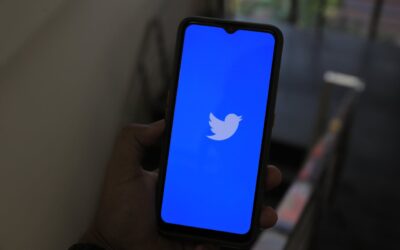
In today's advanced digital world, a business's social media presence is a cornerstone of its brand image. As time gets trendier and people's tastes get more advanced, your social media, like Twitter, needs to get an upgrade, too. Deleting old tweets may...

In today’s competitive landscape, businesses are constantly searching for innovative ways to foster loyalty among their customers. One of the most effective strategies involves creating experiences that not only engage consumers but also build long-lasting...

Optimizing Your Restaurant’s Operations: From Newsletter Software to Equipment Acquisition
Running a restaurant involves more than just creating a menu and serving food. It's about crafting a unique experience, engaging with customers, and managing operations seamlessly to ensure the best possible service. Technology and effective strategies are cornerstone...

7 Game-Changing Steps to Register Your Small Business for Marketing Dominance
You have a brilliant business idea. A product or service that will change lives, disrupt industries, and leave a lasting impact. But before you can unleash your vision upon the world, there's a crucial step you can't afford to overlook: properly registering your small...

Unveiling the Pillars of Sustainable Business Competitive Advantages
A competitive edge is vital for any business seeking long-term success and profits. In today's rapidly evolving marketplace, companies must identify and leverage unique advantages that set them apart from rivals. Sustainable competitive advantages are strengths that...
Coca-Cola Marketing Case Study
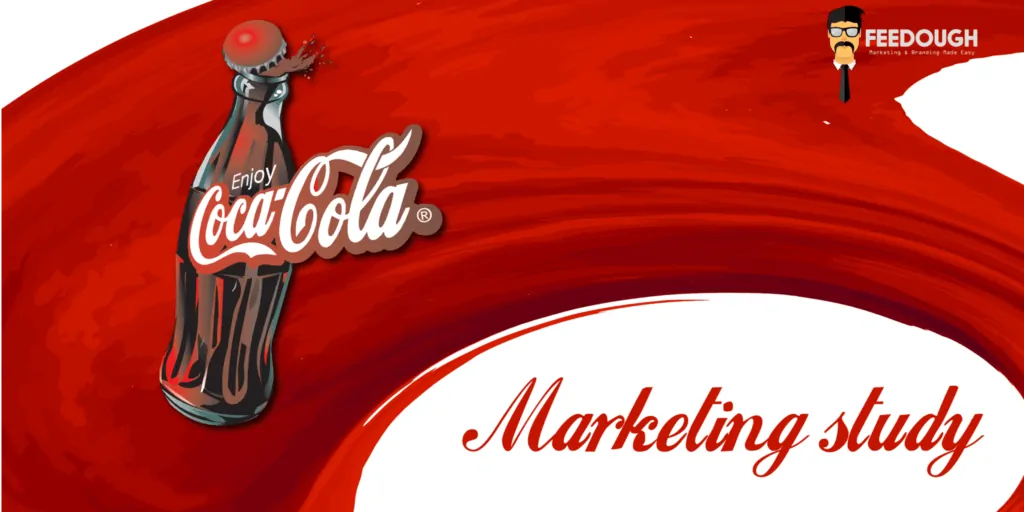
From the star ‘Coca-Cola’ drink to Inca Kola in North and South America, Vita in Africa, and Thumbs up in India, The Coca-Cola Company owns a product portfolio of more than 3500 products . With the presence in more than 200 countries and the daily average servings to 1.9 billion people, Coca-Cola Company has been listed as the world’s most valuable brand with 94% of the world’s population recognizing the red and white Coca-Cola brand Logo . Moreover, 3.1% of all beverages consumed around the world are Coca-Cola products. All this because of its great marketing strategy which we’ll discuss in this article on Coca-Cola Marketing Strategy .
Coca-Cola –
- has a Market capitalization of $192.8 Billion (as of May 2016).
- had 53 years of consecutive annual dividend increases.
- with the revenue of over $44.29 billion, is not just a company but an ECONOMY.
The world knows and has tasted the coca cola products. In fact, out of the 55 billion servings of all kinds of beverages drunk each day (other than water), 1.7 billion are Coca-Cola trademarked/licensed drinks.
Marketing history
Market research in the beginning.
It all started 130 years ago, in 1886, when a Confederate colonel in the Civil War, John Pemberton, wanted to create his own version of coca wine (cola with alcohol and cocaine) and sent his nephew Lewis Newman to conduct a market research with the samples to a local pharmacy (Jacobs pharmacy). This wasn’t a new idea back then. The original idea of Coca wines was discovered by a Parisian chemist named Angelo Mariani.
Pemberton’s sample was sold for 5 cents a glass and the feedback of the customers was relayed to him by his nephew. Hence, by the end of the year, Pemberton was ready with a unique recipe that was tailored to the customers taste.
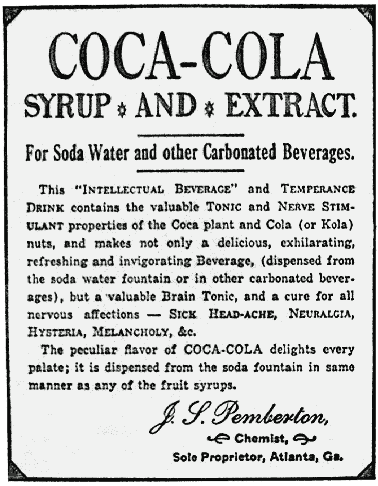
Marketing Strategy In The Beginning
Pemberton soon had to make it non-alcoholic because of the laws prevailing in Atlanta. Once the product was launched, it was marketed by Pemberton as a “Brain Tonic” and “temperance drink” (anti-alcohol), claiming that it cured headaches, anxiety, depression, indigestion, and addiction. Cocaine was removed from Coke in 1903.
The name and the original (current) Trademark logo was the idea of Pemberton’s accountant Frank Robinson, who designed the logo in his own writing. Not changing the logo till date is the best strategy adopted by Coca-cola.
Soon after the formula was sold to Asa G Candler (in 1889), who converted it into a soda drink, the real marketing began.
Candler was a marketer. He distributed thousands of complimentary coca-cola glass coupons, along with souvenir calendars, clocks, etc. all depicting the trademark and made sure that the coca cola trademark was visible everywhere .
He also painted the syrup barrels red to differentiate Coca-Cola from others.
Various syrup manufacturing plants outside Atlanta were opened and in 1895, Candler announced about Coca-Cola being drunk in every state & territory in the US.
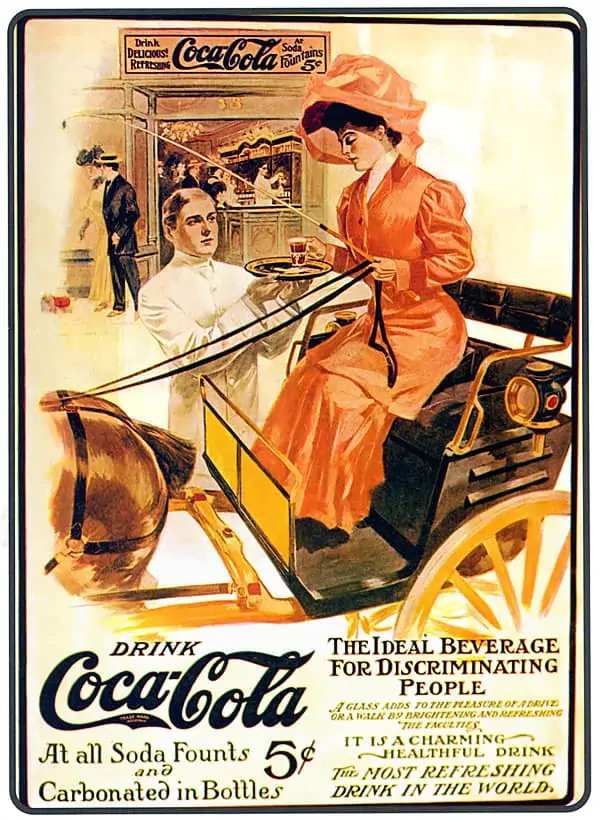
The Idea Of The Bottle
During Candler’s era, Coca-Cola was sold only through soda fountains. But two innovative minds, Benjamin F. Thomas and Joseph B. Whitehead, secured from Candler exclusive rights (at just $1) for bottled coca cola sales.
But Coca-Cola was so famous in the US that it was subjected to imitations. Early advertising campaigns like “Demand the genuine” and “Accept no substitutes” helped the brand somewhat but there was a dire need to differentiate. Hence, in 1916, the unique bottle of Coca-Cola was designed by the Root Glass Company of Terre Haute, Indiana. The trademark bottle design hasn’t been changed until now.
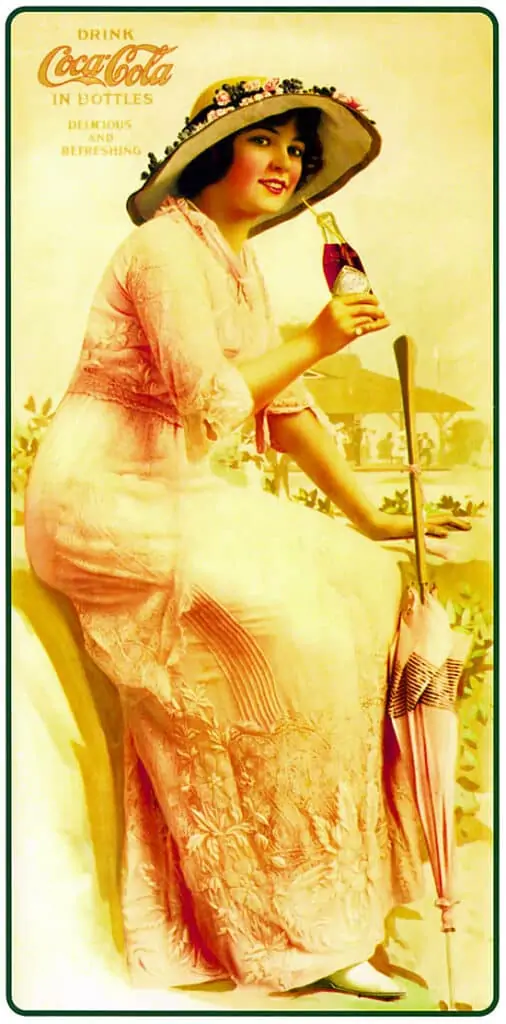
Coca-Cola Worldwide
In 1919, Candler sold the company to Robert Woodruff whose aim was to make Coca-Cola available to anyone, anytime and anyplace. Bottling plants were set up all over the world & coca cola became first truly global brand.
Robert Woodruff had some other strategies too. He was focused on maintaining a standard of excellence as the company scaled. He wanted to position Coca-Cola as a premium product that was worthy of more attention than any of its competitors. And he succeeded in it. Coca-Cola grew rapidly throughout the world.
Coca-Cola Marketing Strategies
The worldwide popularity of Coca-Cola was a result of simple yet groundbreaking marketing strategies like –
Consistency
Consistency can be seen from the logo to the bottle design & the price of the drink (the price was 5 cents from 1886 to 1959). Coca-Cola has kept it simple with every slogan revolving around the two terms ‘Enjoy’ and ‘happiness’.
From the star bottle to the calendars, watches and other unrelated products, Candler started the trend to make Coca-Cola visible everywhere. The company has followed the same branding strategy till now. Coca-Cola is everywhere and hence has the world’s most renowned logo.
Positioning
Coca-Cola didn’t position itself as a product. It was and it is an ‘Experience’ of happiness and joy.
Franchise model
The bottling rights were sold to different local entrepreneurs , which is continued till now. Hence, Coca-cola isn’t one giant company, it’s a system of many small companies reporting to one giant company.
Personalization & Socialization
Unlike other big companies, Coca-Cola has maintained its positioning as a social brand. It talks to the users. Coca-Cola isn’t a company anymore. It’s a part of us now. With its iconic advertising ideas which include “I’d Like to Buy the World a Coke” & “Share a Coke”, it has maintained a special spot in the heart of its users.
Diversification
Coca-Cola, after marking its presence all over the world, took its first step towards diversifying its portfolio in 1960 by buying Minute Maid. It now operates in all but 2 countries worldwide with a portfolio of more than 3500 brands.
Coca-Cola Marketing Facts
- Logo & bottle design hasn’t changed since the start.
- During its first year, Coca-Cola sold an average of 9 drinks a day.
- Norman Rockwell created art for Coke ads.
- Coke has had a huge role in shaping our image of Santa Clause.
- In the 1980s, the company attempted a “Coke in the Morning” campaign to try to win over coffee drinkers.
- In 1923, the company began selling bottles in packages of six, which became common practice in the beverage industry.
- Recently, it was in the news that Verizon acquired Yahoo for around $5 billion which is more or less the same amount the Coca-Cola Company spends on its advertisements.
- The number of employees working with the Coca-Cola Company (123,200 to be exact) is more than the population of many countries.
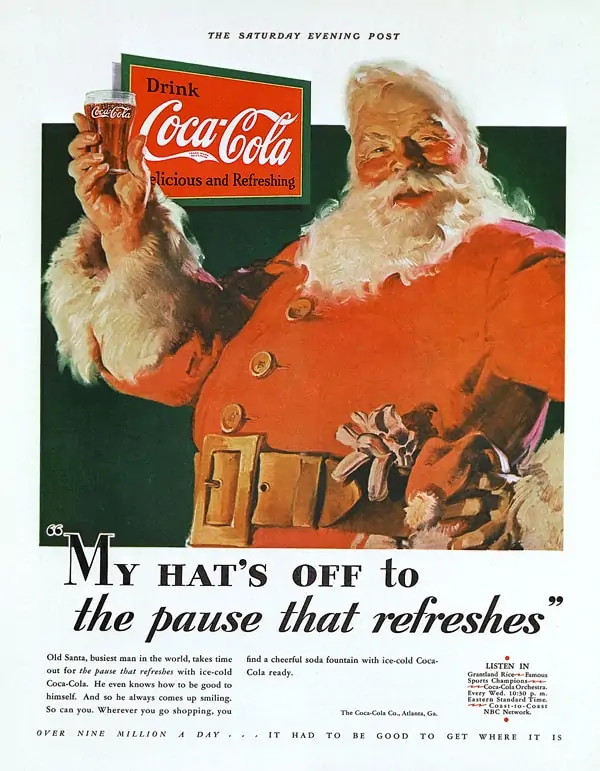
Go On, Tell Us What You Think!
Did we miss something? Come on! Tell us what you think about Coca Cola Marketing Case Study in the comment section.
A startup consultant, digital marketer, traveller, and philomath. Aashish has worked with over 20 startups and successfully helped them ideate, raise money, and succeed. When not working, he can be found hiking, camping, and stargazing.
Related Posts:
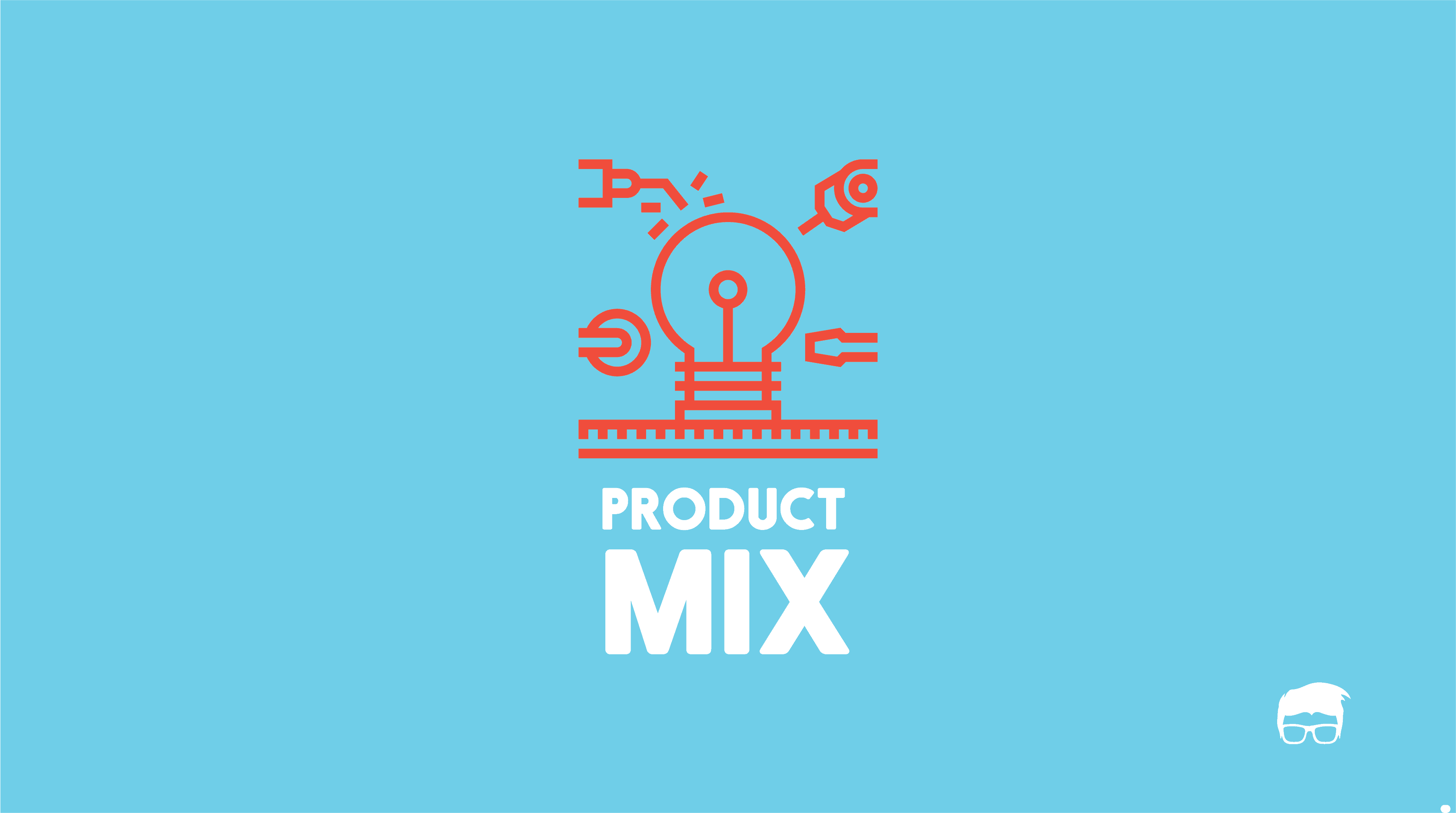

How Coca-Cola became one of the most successful brands in history
Table of contents.
Coca-Cola has an impressive track record of innovation which has helped propel the company to become one of the most successful brands in history. Through skillful advertising efforts, Coca-Cola is widely recognized as a symbol of American culture through its influence on politics, pop culture, and music around the globe.
Key statistics and facts about The Coca-Cola Company:
- Owns 43.7% of the US carbonated soft drinks market
- Net operating revenue of $38.7B
- Present in more than 200 countries and territories
- Employs over over 700,000 along with its bottling partners
- Ranked #93 in the Fortune 500
- Μarket value of $259.77 billion as of February 2023
Who owns Coca-Cola?
There is no sole owner of Coca-Cola as it is a publicly listed company. However, the largest shareholder is Warren Buffett. Read on as we dive into the history of Coca-Cola's owners and much more below!
{{cta('eacab09c-3f45-4c05-84ef-a8bdc5ba474b')}}
The history of The Coca-Cola Company
How it all started.
The story of The Coca-Cola Company had humble beginnings in the late 1800s, in Atlanta, Georgia. Dr. John Pemberton, a local pharmacist, had developed a recipe for a sweet syrup that was originally advertised to cure headaches. It was eventually mixed with carbonated water to create a fizzy drink that was served at a soda fountain in Jacobs’ Pharmacy. The first glass of Coca-Cola was served on May 8, 1886. In the first year, Pemberton served approximately nine drinks per day which were sold for 5 cents a glass.
While the ingredient list today is a highly guarded secret, it is well known that the original version contained extracts from the Coca leaf and Kola nuts for caffeine. The combination of these two ingredients is where the name comes from. Dr. Pemberton’s partner and bookkeeper, Frank M. Robinson, felt that spelling the name with double “C’s” would look better in advertising. So, he scripted out the logo which even today displays Mr. Robinson’s unique handwriting.
Dr. Pemberton didn’t realize the potential of his new product. He took on several partners and sold portions of his business to various owners. Sadly, Dr. Pemberton died just two years after the creation of Coca-Cola. Prior to his death, he sold his remaining interests to an Atlanta businessman, Asa Griggs Candler. Candler knew there was something special about this new product, but little did he know that his $2,300 investment (roughly $67,000 today) would be the start of one of the most powerful brands on the planet.
Birth of The Coca-Cola Company
The Coca-Cola Company was officially founded by Asa Candler in 1892. It didn’t take long for the Coca-Cola product to quickly spread outside of Georgia and across the nation. By 1895, Coca-Cola was being sold in every state of the union. In 1919, the company was sold to Ernest Woodruff. Woodruff's sons would continue to run the company for many years, transforming the company into a major international brand. The Coca-Cola Company was officially listed on the New York Stock Exchange in 1919 under the ticker symbol KO.
International expansion of The Coca-Cola Company
The first export of Coca-Cola was to Cuba in 1899. It wasn’t until the 1920s, that international expansion of the brand began to take off. During World War II, Coca-Cola’s President, Robert Woodruff, wanted to ensure that US service members stationed all over could have the comforts of home and pledged to transport Coca-Cola to the various bases in the European and Pacific theatres on the company’s dime. This introduction of the Coca-Cola product increased international demand. With people all over the world craving a taste of American culture, Coca-Cola began establishing partnerships with bottling companies and distributors all over the world. Today, the brand operates in more than 200 countries and territories.
Early competition
In the early years, Coca-Cola had a lot of competition. In fact, the late 1800s and early 1900s was the most active period in the development of new soft drinks. Some of these companies went out of business or were bought out by other larger companies. However, many of these brands are still in existence today as more novelty brands and hold a very small percentage of the market.
The most prominent competitors to Coca-Cola throughout its history have been Pepsi and Dr. Pepper. They were both created around the same time as Coca-Cola (Pepsi in 1898 and Dr. Pepper in 1885). Over time, these three giants bought up many of the smaller beverage companies. For example, Vernor’s Ginger Ale, Hires Root Beer, and Royal Crown Cola still exist but are now owned by Dr. Pepper.
The Coca-Cola beverage was created in 1886 by Dr. John Pemberton, a pharmacist from Atlanta, Georgia. The recipe was purchased by Asa Griggs Candler and The Coca-Cola Company in 1892. The brand quickly became popular and was sold all over the United States. By the early 20th century, Coca-Cola began a rapid expansion across the globe.
The Coca-Cola system- a global franchise distribution network
The Coca-Cola Company’s rapid expansion around the world can be attributed to its unique franchise distribution system (known as the Coca-Cola System ) that they have operated since 1889. Coca-Cola produces syrup concentrate which is then sold to various bottlers around the world. This helps the company maintain control over its top-secret recipe without the burden of having to run many of the independent bottling facilities.
The Coca-Cola System is a network of over 900 bottling plants that produce 2 billion servings of Coca-Cola every day. The bottlers each hold contracts that allow them to exclusively operate in a predetermined territory. This reduces the need for the competition from multiple companies that sell the same product.
These distributors handle all aspects of the production and distribution process including mixing the syrup with carbonated water and sweeteners, placing the finished product in cans or bottles, and distributing Coca-Cola to supermarkets, vending machines, restaurants, and movie theaters. Although Coca-Cola produces the main syrup, the franchise companies also control the soda fountain business in their territory.
The exception to this model is the North American market where The Coca-Cola Company directly owns most of the bottling and distribution. Outside of the United States, Coca-Cola has continued to encourage the consolidation of its various bottling companies. Over time, Coca-Cola has acquired a percentage of ownership in many of the companies in the Coca-Cola System.
Top 5 independent bottling partners, representing 40 percent of the Coca-Cola System distribution network:
- Coca-Cola FEMSA (Latin America)
- Coca-Cola Europacific Partners, plc (Western Europe, Australia, Pacific, and Indonesia)
- Coca-Cola HBC AG (Eastern Europe)
- Arca Continental (Latin America and North America)
- Swire Beverages (Asia and parts of North America)
Here's an example video from Coca-Cola HBC AG explaining their business model:
The Coca-Cola Company leverages a network of independently owned and operated bottlers around the world. This has enabled the company to quickly expand without having to invest billions of dollars into building facilities and navigating international rules and regulations unique to each region.
Evolution of the Coca-Cola product
The formula for Coca-Cola has undergone a few changes since its creation. Some of these changes were driven by necessity. Some were an attempt to reduce costs or gain market share. While the brand does not make changes often, some have been better received than others.
Removal of cocaine
During the late 19th century, there were many Cocoa-based beverages available on the market. At the time, drugs like cocaine and opium were perfectly legal and used quite frequently for medicinal purposes. Since Coca leaves were used to make Coca-Cola, there were small quantities of cocaine that could be found in the drink.
The public eventually became aware of the addictive properties of these substances, so Coca-Cola was pressured to remove this drug from its list of ingredients. The Coca-Cola Company made steps to gradually phase out sources of cocaine from its production until it was finally eliminated in 1929.

On April 23, 1985, The Coca-Cola Company took a huge risk that shocked the world. They announced that they would be changing the formula of their world-famous soft drink. Despite its massive success, the company had been losing ground to one of its main competitors, Pepsi. Pepsi’s success wasn’t just in the United States. They were quickly expanding into markets that were once considered untouchable. At the height of the Cold War, Pepsi became the first Western product to be permitted in the Soviet Union .
Based on surveys and taste tests, consumers seemed to prefer the sweeter taste of Pepsi-Cola. So, Coca-Cola set out to rework the formula to improve its ability to compete. According to Coca-Cola’s website, their goal was to “re-energize the Coca-Cola brand and the cola category in its largest market, the United States”. After receiving positive feedback from nearly 200k customers in taste tests, New Coke was released to the market.
The public’s response to the new version of their product was outrage. Unfortunately, Coca-Cola miscalculated its customer’s bond with the original brand. Massive protests were staged and the company was flooded with thousands of angry phone calls and letters. The backlash was so fierce that it forced the company to revert back to the old formula after only 79 days on the market, branded as Coca-Cola classic.
This graph demonstrates PepsiCo’s rapid expansion of market share from 1970 to 1990 and subsequent fall.
Coca-Cola Zero Sugar

While Coca-Cola has vowed not to make any changes to its original product, the company plans to update the recipe and packaging for their popular zero sugar variation, Coca-Cola Zero Sugar . The company has been cautious in its promotion of the new version as to not create a blowback like the 1985 New Coke fiasco. Coca-Cola has reiterated that the new version will not be a major overhaul, rather an “optimization of flavors and existing ingredients”. The rollout is expected to hit the US market by August 2021.
Sweetener changed to high fructose corn syrup
Traditionally, the Coca-Cola recipe called for cane sugar as the primary sweetener. During the 1970s, the United States saw a massive increase in corn production. This forced the prices of corn to drop significantly. In addition, corn was heavily subsidized by the US government. This made sweeteners like high fructose corn syrup more affordable.
In an attempt to reduce costs, Coca-Cola slowly started substituting cane sugar for high fructose corn syrup during the 1980s. The transition took place over the course of approximately 5 years.
Today, cane sugar is still used in the production of Coca-Cola in certain regions of the world. The most popular example is Coca-Cola produced in Mexico. This version of Coca-Cola is still made with cane sugar. Some critics argue that “Mexican Coke” has a flavor that is closer to the original formula.
In 1935, Coca-Cola was certified as kosher after the company replaced the source of glycerin used in production . This was originally derived from beef tallow but was replaced with a plant-based version. However, with the change of sweetener in the 1980s to high fructose corn syrup, its kosher status was removed. Today, bottlers in markets with large Jewish populations will temporarily substitute high fructose corn syrup during Passover to obtain Kosher certification.
Recipe and flavor variations
Despite the utter failure of New Coke in 1985, The Coca-Cola Company has introduced new flavors over time in addition to Coca-Cola classic.
Some consumers avoided Coca-Cola classic because of the high sugar or caffeine content. In 1982, the company released a diet version of their product for consumers who were concerned about consuming too much sugar. A caffeine-free version was also introduced a year later.
The company has also tried different flavor combinations. The first was Coca-Cola Cherry in 1985 which was a huge success and remains popular today. Other flavors included lemon, lime, vanilla, orange, ginger, cinnamon, and coffee. Many of these were attempts to bring local flavors to international markets.
Coca-Cola has achieved enormous amounts of growth by tailoring its products to local tastes and demands. They have also been able to reduce production costs by substituting expensive ingredients such as cane sugar for lower-cost alternatives. Not every change has been well received by the public. Coca-Cola infamously changed their original recipe to replace it with “New Coke”. This change faced fierce backlash and forced the company to bring back the original product after only 79 days on the market.
Coca-Cola Growth Strategy
The company has outlined a list of key objectives that they plan to execute in the coming years to spur additional growth. This strategic plan is intended to guide the company in refocusing efforts and being more intentional with its actions.
Focus on developing markets
Coca-Cola has identified that there is huge growth potential in the developing world. Seventy percent of all beverages being consumed in the developed world are commercialized compared to only 30 percent for the developing world. Considering the developing world contains 80 percent of the world's population, growth is expected to be exponentially higher.
One identified area of opportunity is brand diversification. While Coca-Cola has a strong foothold globally, this is only due to its strong presence in major markets. Outside of sparkling water, Coca-Cola is trailing competitors. The focus will be on gaining momentum in other beverage categories through the experimentation of new products.
Brand portfolio optimization
Bigger isn’t always better. The Coca-Cola Company is realizing that its efforts may be spread across too many individual brands. Their goal is to rebalance their portfolio and consolidate products into fewer master brands. They have already reduced this number from approximately 400 to 200. By having fewer master brands, they can better focus their efforts.
Networked organization
Operating a large corporation comes with challenges. In many cases, there can be inefficiencies and duplicated efforts. Coca-Cola plans to address this by reorganizing its support and operational teams to provide better support and work more effectively.
Brand building
The company plans to deliver world-class marketing through targeted resource allocation. The goal is to be more intentional with the way advertising and marketing investments are made.
Coca-Cola has a goal to increase the frequency that new or existing consumers drink their products. To do this, the company has set targets to significantly increase innovation by bringing more trial products and projects into the pipeline. The goal is to increase this by 40 percent over 2020.
Digital transformation
Coca-Cola understands that data is a powerful tool. They are in the process of undergoing a digital transformation to help the company operate more effectively and leverage data to drive decision-making.
Revenue growth management
With this new data and digital tools available, the company can place a renewed focus on which areas have the most potential for growth. They will focus on understanding which markets, consumers, product lines, and competitors should be addressed.
The Coca-Cola Company is dedicated to growing the business through a skillfully designed and executed strategic plan. Their long-term goals are to focus on expanding the commercial beverage industry in developing countries. They also plan to optimize their product line by reducing the number of master brands, creating new innovative products, changing their internal operations teams to streamline processes, and better leverage data.
The power of advertising- Coca-Cola becomes a household name
A big part of Coca-Cola’s success over the years has been its focus on innovative marketing and advertising campaigns. In 2020, Coca-Cola was ranked as the 6th most powerful brand in the world. This accomplishment didn’t come overnight. Over the years, Coca-Cola has had to work diligently to evolve and bring fresh, new ideas to marketing and advertising.
Large contributions to advertising
Even early on, Asa Griggs Candler spent a considerable amount of money on advertising. His original budget for advertising was $11,000 (over $300,000 in today’s money). By 1900, the budget increased ten-fold to $100,000 and again to $1 million by 1910.
Large advertising budgets are important when a new brand is getting established. As a company grows and becomes well-known, they typically scale back on their advertising budget since most consumers recognize the brand. Coca-Cola, however, has continued to keep the pressure on its competitors. Today, the company spends about 10 percent of its revenue on advertising and marketing. This equates to approximately $4 billion in commercials, print advertising, sponsorships, and other promotional merchandise.
Focus on the brand and human connection
Much of Coca-Cola’s advertising success comes from the way they present their brand. Instead of focusing on the actual product, they emphasize the feeling and camaraderie of making the brand part of one’s identity. Their advertisements are intended to make people feel good about themselves and want to be a part of the experience.
Human connection is an important part of the brand message. One great example of this was the “Hilltop” commercial from 1971 that featured people from different cultures singing “I’d like to buy the world a Coke”. This showed the Coca-Cola brand as one that was intended to unite people around the world.
Celebrity endorsements
Celebrity endorsement is a way to help a brand stand out, especially when targeting specific groups. For example, sports fans will be more likely to purchase a product if their favorite athlete promotes the brand. Over the years, Coca-Cola has been endorsed by numerous high-profile celebrities, athletes, and pop culture icons.
Hilda Clark, an American model, and actress was the first celebrity to endorse the brand in 1900 and was featured in early advertisements. Since then, Coca-Cola has received endorsements from many big-name celebrities such as Ray Charles, Aretha Franklin, Magic Johnson, and Elvis Presley.
Coca-Cola in pop culture
The Coca-Cola brand has been a prominent part of American culture for decades. Coca-Cola has skillfully attached itself to key historical events, music, movies, and major holidays.
Coca-Cola and many of its other brands have been featured in numerous films and television programs. For a short time, Coca-Cola even owned Columbia Pictures (from 1982 to 1989) and inserted Coke products into many of its productions. A few examples include:
- The 1933 film King Kong displays a Times Square billboard advertisement in several of the scenes.
- Coca-Cola products being used in the 1982 film E.T. the Extra-Terrestrial.
- The modern TV series Stranger Things which takes place in the 1980s displays and makes reference to New Coke.
The Coca-Cola Company has also made its way into music across the globe. Elvis Presley promoted Coca-Cola during his last tour in 1977. The UK sensation, The Beatles, made mention of Coca-Cola in a line of their hit song “Come Together”. In addition to lyrical references, the brand has featured musical superstars such as David Bowie, Elton John, and Whitney Houston in Diet Coke commercials.
The Coca-Cola brand has also cleverly attached itself to popular holidays. Some of its most successful campaigns have been displayed over the Christmas holiday. One of the most iconic campaigns started in 1931 with illustrations of St. Nicholas drinking a Coca-Cola. Many credit Coca-Cola with inspiring the modern-day version of Santa Clause.
Clever campaigns and promotions
Coca-Cola has been one of the top innovators in the advertising space. On many occasions, they have used never before seen tactics that both surprised and delighted consumers. Creating an additional buzz around their advertising campaigns helps to amplify whom the campaign reaches directly.
During the 2012 NFL Superbowl, Coca-Cola decided to take a non-traditional approach. The Superbowl is one of the most sought-after advertising opportunities. Each year, approximately 95 million people tune in to watch the championship game. Typically, major brands spend over $5 million for a single 30-second commercial. With the rise of cell phones and other mobile devices, Coca-Cola knew that consumers would be juggling multiple devices during the game. So, they created a family of animated polar bears that would react to the game in real-time on digital media banners and a microsite. The bears would laugh, respond to audience tweets, and make faces. The campaign was a huge success. During the game, over 9 million viewers spent an average of 28 minutes engaging with and watching the polar bears in action.
In 2011, Coca-Cola decided to take a personalized approach to advertise in Australia with their Share a Coke campaign. They selected 150 of the most popular names and printed them on the side of their bottles along with the message “Share a Coke with…”. The campaign encouraged people to share a bottle of Coke with a friend or tag them in a social media post with the hashtag #shareacoke. The campaign was so successful that it was expanded to over 80 countries and led to Coca-Cola’s first sales growth in over 10 years.
Collectible memorabilia
Coca-Cola has created and distributed numerous pieces of branded memorabilia that are highly sought after by collectors including toys, clothing, antique bottles, signs, household items, and old vending machines. The collectible nature of these products has nostalgia of traditional Americana and has further helped to amply the prestige and cultural connection of Coca-Cola to US history. Rare and well-preserved items can fetch tens of thousands of dollars.
The Coca-Cola Company has created one of the most powerful and well-known brands in the world. Over the years, they have embedded themselves as an icon of American culture through music, television, and films. The company spends a significant portion of its annual revenue on advertising efforts including television commercials, social media, and other advertising.
Growth through mergers, acquisitions, and partnerships- becoming an unstoppable force in the food and beverage industry
While The Coca-Cola Company is known for its main products such as Coca-Cola and Diet Coke, the company owns, produces, and distributes over 500 individual brands worldwide. Some of these brands are a result of new products that they created. Others were obtained through mergers, acquisitions, and special partnerships with other major companies.
Key mergers and acquisitions
- 1960 - Coca-Cola acquires Minute Maid, a producer of juices, soft drinks, and other beverages such as the popular Hi-C brand.
- 1993 - When Coca-Cola was struggling to gain a foothold in the Indian market, they purchased the popular local brand, Thums Up. Their business now makes up over 40 percent of the cola business in India.
- 1995 - Acquisition of Barq’s which produces a line of root beers and cream sodas.
- 1999 - Coca-Cola purchased 50 percent of Inca Kola for $200 million and took control of its marketing and bottling operations.
- 2001 - Odwalla, a brand of fruit juices, smoothies, and bars was acquired. This company was discontinued in 2020.
- 2007 - Coca-Cola acquired Fuze Beverage, a producer of teas and fruit drinks that were infused with vitamins and minerals.
- 2008 - The company purchased 40 percent of Honest Tea, a popular iced tea producer. The remaining shares were purchased in 2011 giving Coca-Cola full ownership.
- 2013 - Coca-Cola purchased the coconut water company ZICO.
- 2014 - 16.7 percent of the energy drink manufacturer, Monster Beverage, was sold to Coca-Cola in exchange for a long-term strategic partnership.
- 2016 - Coca-Cola purchased a portion of Chi Limited, a major distributor of snacks, food, and beverage products in Nigeria. The remaining shares were acquired in 2019.
- 2017 - Topo Chico, a Mexican sparkling water brand was acquired by Coca-Cola.
- 2018 - Coca-Cola purchased Costa Coffee making it the owner of the second-largest coffeehouse chain in the world after Starbucks Coffee.
- 2018 - Organic & Raw Trading Co., the Australian producer of MOJO kombucha was acquired.
Special partnerships
In addition to owning many brands, The Coca-Cola Company has created many successful strategic partnerships that have allowed Coca-Cola to grow exponentially.
One of the most famous partnerships is with McDonald’s. When McDonald’s was just getting started in 1955, it needed a beverage distributor. The two companies struck a deal for Mcdonald's to exclusively sell only Coca-Cola products. McDonald’s eventually grew to become the largest restaurant chain (by revenue) and Coca-Cola products are served in nearly 40,000 of their locations around the world. Other notable restaurant chains that carry Coca-Cola products include Burger King, Chili’s, Chipotle, and Domino’s Pizza.

Coca-Cola has also partnered with numerous venues around the world to sell only Coca-Cola products in their stadiums, theatres, and concert halls. The Coca-Cola Company is a major sponsor of the Olympic Games. In 2017, the company signed a deal with Major League Baseball in which they agreed to drop their competitor Pepsi and only promote Coke products.
Most of Coca-Cola’s growth has come from strategic mergers and acquisitions of companies all over the world. They have been able to expand into new markets by buying companies that already dominate the specialty or space. The company has also developed strategic partnerships with other large companies to exclusively sell Coca-Cola products.
Controversy, regulatory issues, and criticism
Despite the company’s overwhelming success, Coca-Cola has faced a lot of criticism throughout its history. There are many opinions related to the impacts that The Coca-Cola Company has on the environment and consumers alike.
Health concerns
It’s no secret that Coca-Cola is a sugary drink. According to the Centers for Disease Control (CDC), half of all Americans will drink at least one sugary beverage each day. This massive consumption of sugar is leading to an epidemic of conditions such as type 2 diabetes and obesity. The World Health Organization (WHO) recommends that adults consume no more than 6 tsp of sugar each day. A single 12oz can of Coca-Cola contains nearly twice this amount.
With Coca-Cola being the leading company in the food and beverage industry, they have received a lot of negative attention directed towards their contribution to this serious problem.
The company has responded by producing sugar-free or reduced-calorie beverages. They have also expanded their product lines to include healthy alternatives like coconut water.
Environmental issues
Coca-Cola has been identified as the single producer of plastic waste in the world. Much of this plastic is not discarded properly and ends up in the oceans. This has contributed to the ecological disaster due to single-use plastics. This has captured the attention of environmental protection groups who claim that Coca-Cola isn’t doing enough to work toward a reasonable solution. A report from Greenpeace estimates that the company produces over 100 billion plastic bottles every year with no obvious goal to reduce single-use plastic waste.
Coca-Cola has made some efforts to reduce its environmental impact. First, they redesigned their bottles to use less plastic (a process called “lightweighting”). While this does reduce the amount of plastic used in production, it does not reduce the number of bottles that end up in landfills or the ocean. They have also introduced their “PlantBottle” which is made from plant-based materials.
While these are steps in the right direction, most environmental groups question whether these efforts are enough. Coca-Cola appears to be spending large amounts of money lobbying politicians around the world to block legislation that would encourage more environmentally friendly manufacturing. They have also been accused of spending a considerable amount of money on “green marketing” without efforts to back up their claims.
Over the years, The Coca-Cola Company has been the center of controversy due to environmental impact and health concerns due to their products. Coca-Cola has responded by providing low-calorie, sugar-free, and healthy alternatives. They have also worked to reduce their plastic use and seek alternatives as they are the single largest contributor to single-use plastic waste.
Coca-Cola's social media strategy

The Coca-Cola Company is a social media powerhouse with millions of followers across the globe. The company is very intentional with its use of social media platforms and leverages them to drive brand awareness and interaction with customers. There are several key components that have made Coca-Cola’s social media strategy so successful.
Positivity
In 2018, Coca-Cola made a commitment to become the ‘most optimistic brand on social media'. They launched their #RefreshtheFeed campaign in which they completely deleted all of their social media content and started fresh. Consumers embraced this new positive approach and encouraged even more followers who wanted to enjoy the feel-good vibes of their social media posts.
Leverage consumers to create content
While Coca-Cola’s marketing team creates a lot of content for their online platforms, they have successfully leveraged their millions of followers to create content on behalf of the brand. They have used creative hashtag-based campaigns to encourage consumers to post Coca-Cola-themed posts for their friends and family to see. One of the most successful was the #shareacoke campaign which reversed a 10-year stagnant sales record.
Attachment to social issues
The company has a stringent social media policy to ensure that content aligns with the company’s values. In July 2020, Coca-Cola decided to join many other major brands in temporarily halting social media posts and advertisements for a minimum of 30 days. This decision came as a result of concerns about growing hate speech and misinformation on social networks. They’ve regularly supported important civil rights and other social issues over the past few decades which helps consumer groups connect with the brand.
Coca-Cola website
The Coca-Cola Company’s main company website contains various resources for consumers, vendors, and investors. The information included in the website discusses the company’s history, its brands around the world, career opportunities, media center, and investor relations.
According to SimilarWeb, the site is ranked 10th in the Food & Beverage category and receives about 1.8 million visitors each month.
The Coca-Cola Company’s YouTube channel is a platform that is used to post promotional videos and other advertisements from all over the world. The channel was started in 2006, has 3.6 million subscribers, and has nearly 3.5 billion views. About 8 percent of their website traffic comes from YouTube.
Coca-Cola’s LinkedIn account has over 6 million followers. The company uses this platform to post company updates for the business community. It is also used to promote job openings and attract top talent from the LinkedIn community.
Twitter is one of Coca-Cola’s most powerful social media accounts. Their Twitter account ( @CocaCola ) was started in 2009 and has posted nearly 300,000 tweets to its 3.3 million followers. Most of the tweets are short inspirational or funny messages to enhance daily brand awareness or encourage engagement. Coca-Cola’s Twitter account generates 62 percent of the traffic to their website.
Coca-Cola’s Instagram account has 2.8 million followers. The account is mostly used to post promotional stories on the platform.
Coca-Cola’s Pinterest account is used to post drink and food recipes and promote Coca-Cola products like customizable Coke bottles. Their account has about 30,000 followers and receives over 10 million views each month.
With over 105 million followers, Coca-Cola’s Facebook account is massive. It’s the 5th most-followed account on the social media platform, only behind Facebook itself, Samsung, Cristiano Ronaldo, and Real Madrid CF. The site is used to post videos and promotional content in many different languages for their followers.
So, Why is Coca-Cola so Successful?
Few companies can boast the tremendous success and growth that The Coca-Cola Company has enjoyed for over 135 years. This accomplishment can be attributed to industry-leading advertising, innovation of their products, and delivering a positive brand message. Let's take a look at what makes Coca-Cola so successful!
Recap: growth by the numbers
Key takeaways.
- Coca-Cola has leveraged a network of independent bottlers around the globe to aid in rapid expansion. These distributors have territorial rights which help prevent competition and price wars.
- The Coca-Cola Company has made changes to its main product over the years but learned a very valuable lesson with the introduction of New Coke in 1985. The launch was a disaster and faced a fierce backlash from consumers who demanded the return of the original product.
- Coca-Cola’s long-term strategic plan includes focusing on the developing world where consumer beverages have a lot of growth potential, optimizing the number of master brands, revamping their operational network, and leveraging technology and data.
- Coca-Cola’s advertising focuses on creating human connections and making people feel good. They have led the advertising world in cutting-edge approaches to marketing that have never been seen before.
- Coca-Cola has inserted its brand and products in films and television to become an easily identifiable American icon.
- Acquisition of other companies has been a major part of Coca-Cola’s expansion efforts giving them the ability to quickly reach into new markets or acquire existing popular products.
- The Coca-Cola company has been the target of criticism due to its potential negative impact on consumer health and the environment.
Table of Contents
Coca-cola target audience , geographical segmentation , coca-cola marketing channels, coca-cola marketing strategy , coca-cola marketing strategy 2024: a case study.
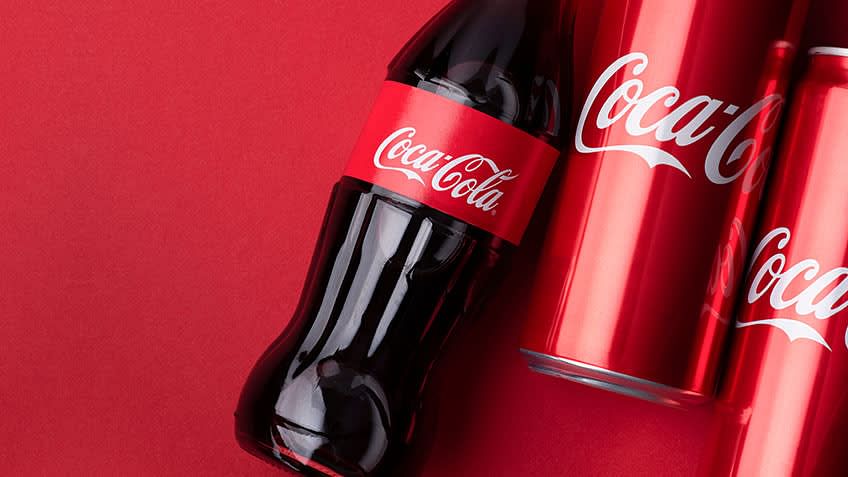
Become an AI-powered Digital Marketing Expert
Coca-cola has colossal brand recognition as it targets every customer in the market. Its perfect marketing segmentation is a major reason behind its success.
- Firstly, the company targets young people between 10 and 35. They use celebrities in their advertisements to attract them and arrange campaigns in universities, schools, and colleges.
- They also target middle-aged and older adults who are diet conscious or diabetic by offering diet coke.
Income and Family Size
It introduces packaging and sizes priced at various levels to increase affordability and target students, middle class, and low-income families and individuals.
Coca-Cola sells its products globally and targets different cultures, customs, and climates. For instance, in America, it is liked by older people too. So, the company targets different segments. It also varies the change accordingly, like the Asian version is sweeter than other countries.
Coca-Cola targets individuals as per their gender. For example, Coca-Cola light is preferred by females, while coke zero and thumbs up are men's favorite due to their strong taste.
Become One of The Highest Paid Digital Marketer
Coca-Cola initially employed an undifferentiated targeting strategy. In recent times, it has started localizing its products for better acceptability. It incorporates two basic marketing channels : Personal and Non-personal.
Personal channels include direct communication with the audience. Non-personal marketing channels include both online and offline media, such as
- Promotion Campaigns
- PR activities
Social Media
Become an ai-powered business analyst.
A uniquely formulated Coca Cola marketing strategy is behind the company's international reach and widespread popularity. The strategy can be broken down into the following:
Product strategy
Coca-cola has approximately 500 products. Its soft drinks are offered globally, and its product strategy includes a marketing mix. Its beverages like Coca-Cola, Minute Maid, Diet Coke, Light, Coca-Cola Life, Coca-Cola Zero, Sprite Fanta, and more are sold in various sizes and packaging. They contribute a significant share and generate enormous profits.
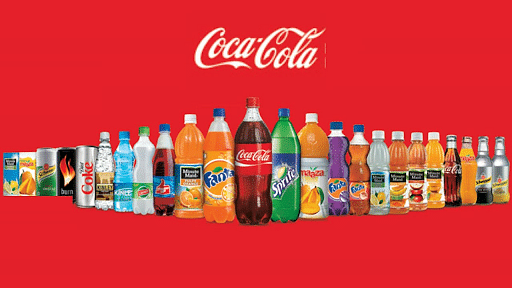
Coca-Cola Products
Master SEO, SEM, Paid Social, Mobile Ads & More
Pricing Strategy
Coca-Cola's price remained fixed for approximately 73 years at five cents. The company had to make its pricing strategy flexible with the increased competition with competitors like Pepsi. It doesn't drop its price significantly, nor does it increase the price unreasonably, as this would lead to consumers doubting the product quality and switching to the alternative.
Place Strategy
Coca-cola has a vast distribution network. It has six operating regions: North America, Latin America, Africa, Europe, the Pacific, and Eurasia. The company's bottling partners manufacture, package, and ship to the agents. The agents then transport the products by road to the stockist, then to distributors, to retailers, and finally to the customer. Coca-Cola also has an extensive reverse supply chain network to collect leftover glass bottles for reuse. Thus, saving costs and resources.
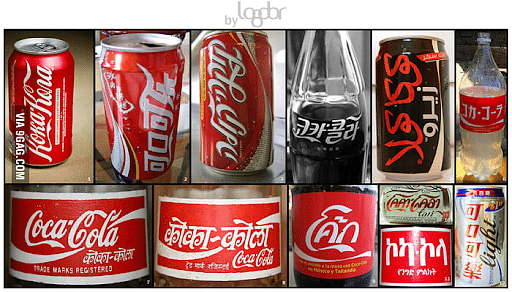
Coca-Cola’s Global Marketing
Promotion Strategy
Coca-Cola employs different promotional and marketing strategies to survive the intense competition in the market. It spends up to $4 million annually to promote its brand , utilizing both traditional and international mediums for advertisements.
Classic Bottle, Font, and Logo
Coca-Cola organized a global contest to design the bottle. The contest winner used the cocoa pod's design, and the company used the same for promoting its shape and logo. Its logo, written in Spencerian script, differentiates it from its competitors. The way Coca-cola uses its logo in its marketing strategy ensures its imprint on consumers' minds.
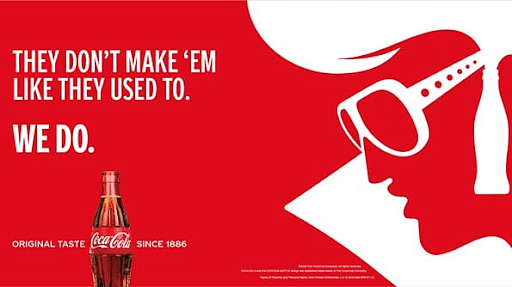
Coca-Cola’s Gripping Advertisements
Localized Positioning
The recent 'Share a coke' campaign, launched in 2018 in almost fifty countries, has been quite a success. The images of celebrities of that region and messages according to the local language and culture of the area target the local market.
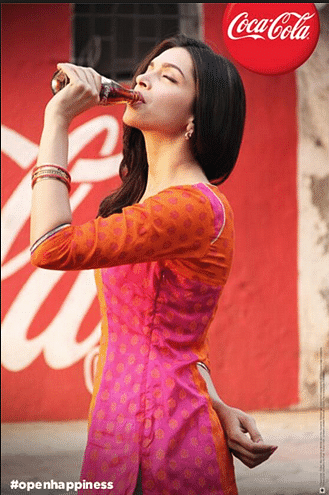
Coca-Cola Advertisement Featuring Celebrities
Sponsorships
The company is a well-recognized brand for its sponsorships, including American Idol, the NASCAR, Olympic Games, and many more. Since the 1928 Olympic Games, Coca-Cola has partnered on each event, helping athletes, officials and fans worldwide.

Coca-Cola as Official Olympics Partner
Learn About the Purdue Digital Marketing Bootcamp
With technological advancement, social media and online communication channels have become the most significant part of the Coca-Cola marketing strategy. It actively uses online digital marketing platforms like Facebook , Twitter, Instagram, YouTube, and Snapchat to post images, videos, and more. The Coca Cola marketing strategy primarily includes SEO , email marketing , content marketing , and video marketing .
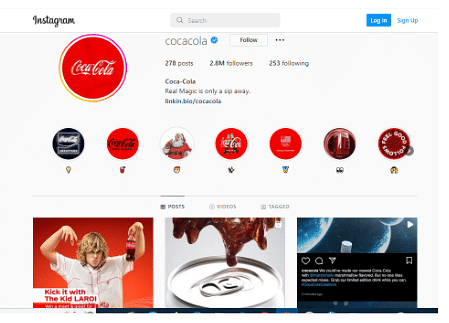
Coca-Cola’s Instagram Posts
Become a millennial Digital Marketer in just 6 months. Enroll now for our IMT Ghaziabad Digital Marketing Program course in collaboration with Purdue University!
Become a Certified Marketing Expert in 8 Months
Good marketing strategies build customer loyalty and contribute to a huge market share. Learn how to boost your brand's market value with the Post Graduate Program in Digital Marketing . Upgrade your skill set and fast-track your career with insights from Purdue University experts.
Our Digital Marketing Courses Duration And Fees
Digital Marketing Courses typically range from a few weeks to several months, with fees varying based on program and institution.
Recommended Reads
Digital Marketing Career Guide: A Playbook to Becoming a Digital Marketing Specialist
A Case Study on Netflix Marketing Strategy
12 Powerful Instagram Marketing Strategies To Follow in 2021
Introductory Digital Marketing Guide
A Case Study on Apple Marketing Strategy
A Complete Guide on How to Do Social Media Marketing
Get Affiliated Certifications with Live Class programs
Post graduate program in digital marketing.
- Joint Purdue-Simplilearn Digital Marketer Certificate
- Become eligible to be part of the Purdue University Alumni Association
Post Graduate Program in Business Analysis
- Certificate from Simplilearn in collaboration with Purdue University
- PMP, PMI, PMBOK, CAPM, PgMP, PfMP, ACP, PBA, RMP, SP, and OPM3 are registered marks of the Project Management Institute, Inc.
Connect with us
Coca Cola: The branding strategy that made a difference
Get inspired.
- Flat Design
- Minimalist Design
- Colorful, Bright, and Bold Design
- Infographic-Style Slides in Presentations
- Bold Typography Design

Coca-Cola is a widely known brand name. But, do you know their branding strategy? Learn the background of this iconic brand name and the branding strategies that made it a success. ... read more Coca-Cola is a widely known brand name. But, do you know their branding strategy? Learn the background of this iconic brand name and the branding strategies that made it a success. close
Introduction
Whether you are just daydreaming of one day creating your own brand or are just starting to get your brand out there, or maybe you have already reached your goal with your brand and want to build on your success. Regardless of what level you are at, going back to the basics is always best.
Do You Really Know What Branding Is?
Our definition is: “ Your brand is your promise to your customer.”
In a general sense, your brand is derived from who you are, who you want to be, and who people perceive you to be. All these factors fulfill a certain promise that your ideal customer can understand, like, and trust. The best brands trigger emotion; it’s not always about the product or service.
If you think about it, Nike doesn’t market its product. They market the emotion you get when you purchase their product. You feel empowered, energetic, unstoppable, etc.
So, what’s your emotion?
However, let’s make one thing clear.
A BRAND IS NOT ONLY A LOGO.
The logo represents the brand. The brand creates the experience.
Unlike services or products that have a shelf life, a brand can last forever. A brand is a promise. They are either something to aspire to or something we can outgrow.
Consumers do not just buy products and services from a brand; they buy the brand’s image to create better versions of themselves. And at that point, the brand identity becomes part of theirs.
3 Proven Ways Coca-Cola Mastered Its Branding Strategy
Coca-Cola didn’t become a global brand overnight, and they have made their share of marketing mistakes. However, its success offers a lot of insight into businesses looking to build a solid and successful brand.
1. Consistency is King

Coming up with fresh marketing campaigns is of vital importance. However, within these different marketing campaigns, one clear, consistent message is always apparent. In the case of Coca-Cola, their brand is built on the idea of “enjoying a coke.” It is the one emotion you can count on to appear in any marketing material, even as the product range changes and adapts to emerging trends. The company has maintained this script for branding by featuring happy people smiling throughout their content marketing efforts.
2. Brand Over Product
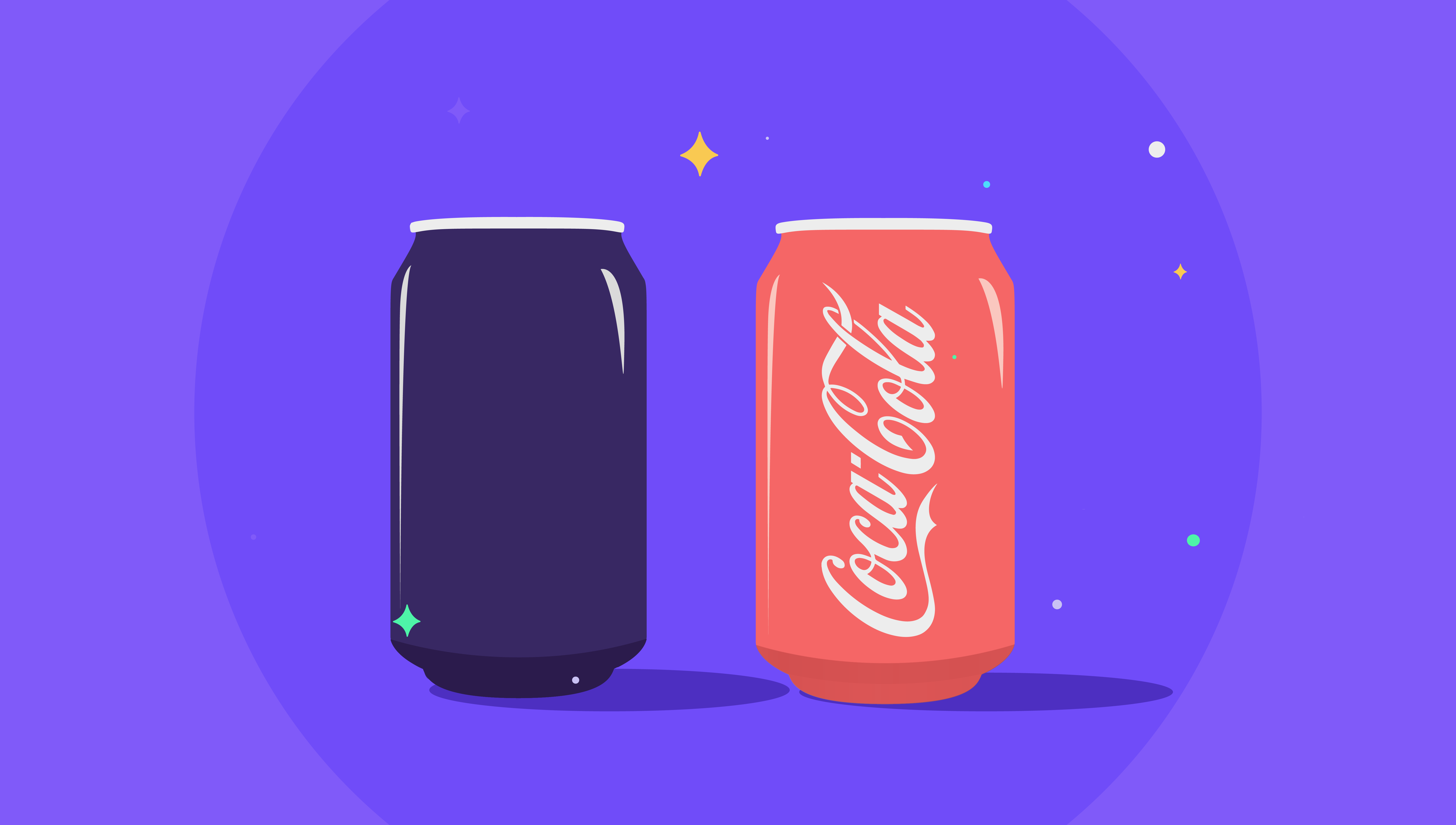
“One of the most successful ways in which Coca-Cola has marketed itself is that it puts the focus on the brand rather than its product. Coke is described as something that brings family and friends together, encourages sharing, and brings happiness, rather than just a soda.”
Research highlights how beneficial this brand strategy is for global brands that have a variety of products (and services) and use different packaging for different countries. Instead of going for a complicated marketing plan that focuses on each product, Coca-Cola sells the lifestyle, the emotion, and the association of the brand that people can relate to. It ensures that the brand is universal and understood across all cultures and languages. What better concept to translate than the concept of happiness?
We understand that not all companies operate on a global scale like Coke, but they can still consider selling their brand as an experience rather than a product. Not only will this make your content creation and marketing efforts more focused, but it also ties into consistency.
3. Remain Relevant

Consistency does not walk this road alone; relevance is its companion. Both go hand in hand. Otherwise, Coca-Cola wouldn’t have been able to keep it up for over 100 years.
“While Coke is built around the same positive experience as it was upon conception, it also remains modern and topical, making the most of popular culture to remain relevant.”
This is the best explanation of what Coca-Cola does to ensure consistency and relevance throughout its marketing:
“However, the brand doesn’t simply take a popular subject and replicate it; Coke’s success comes from putting its own spin on a topic while still maintaining the idea that it’s all about sharing and happiness. Not only this, but it uses relevant trends from each of the countries it is present in, understanding that what is relevant for one culture may not be for others.”
The Importance of Branding in the 21st Century
This quote sums up our approach when it comes to branding in today’s world:
“No one cares about your brand. It is not loved. It is not important. It is not invited anywhere but to your company picnic. That is, unless you can make the brand relevant to people’s lives . To the way they understand things… No one cares about your brand unless you find a way to speak to why you care about it.”
Scott Goodson, Author of Uprising and Forbes Columnist
Over time, the concept of branding and the perception held by marketers have changed. Earlier, it was used solely to differentiate the product or service from others in the market. While that remains one of the most important pillars in today’s oversaturated markets, branding adds a set of personality traits to the products that are automatically positioned in the marketing according to what position the brand occupies in the minds of the target audience.
Again, it’s no longer just about the product. It’s about the experience, the identity, and the association.
Prezlab’s Promise When it Comes to Branding

Prezlab is not your usual design agency . We care about telling your story through visual content. Your brand is your story. What better way to tell a story than visually?
From logo design to visual identity development, we help businesses elevate their visual identities and brand strategies to help them achieve their business goals while effectively speaking to their audiences.
Kicking this subject off with the basics, we decided to use this opportunity to explain to you how each service that we provide can help elevate your brand, one design element at a time.
Let’s begin with a short preview of what we offer, and then throughout the article, we will take you deeper into our design world:
1. PPT Design:
Presentations are our core specialty, and we have been creating visually stunning presentations for our clients for their top conferences, achievements, product reveals, and deliverables for their clients and partners.
2. Books and Report design:
Inline. Online. Bottom line. We craft your brand’s books and reports from cover to cover and ensure 100% smooth flow and coverage of key information.
3. Social Media Management:
Strategies, content, and designs that are up-to-date and result-driven will make your social media stand out and deliver your marketing results.
We understand the pressure of standing out when it comes to an online presence. Whether your business is offline, online, B2B, or B2C, our visual production capabilities keep your brand up-to-date with the latest trends and developments.
4. Digital Marketing:
Finding the right tactic to help your business grow and excel depends on the kind of approach we take.
We encompass a wide range of digital marketing strategies that form the backbone of a comprehensive digital approach to generating more leads for your business
5. Infographics Design:
Visualizing data that converts and content that leaves an impact while getting the right message across is the basis of infographic design . That is what we do.
6. Motion Graphics:
We don’t just tell your story. We show it by creating an easier connection between your business and users.
We create videos that drive results and boost your ROI.
Our video services help marketers and businesses cut through the noise and boost marketing results and strategies.
In a matter of minutes or even seconds, we help you highlight your services and products, drive awareness, and educate your audience with our top-class animations and experienced voice-over artists.
7. Web and App Development:
We develop high-performing and intuitive web and app solutions that support business processes and serve users globally.
At Prezlab, we’re all about incorporating creative storytelling into several forms, whether in presentation design, digital web design, or branding. You can learn more through the button below, and reach out to us to discuss any inspiring ideas you want to see brought to life!
Learn more about Prezlab’s branding services in Dubai and across the GCC.
Recommended for you..

05 March 2024
The Pyramid Principle: The game-changing communication tool

12 March 2024
Persuasive storytelling for consulting presentations

27 December 2023
8 Presentation design trends you should know about for 2024

The Science of Successful Branding: Case Studies and Insights
Successful branding can influence consumer perceptions, build trust, and drive long-term customer loyalty.
Branding is a powerful force in the world of business. It's the art and science of creating a distinctive identity for a product, service, or company. Successful branding can influence consumer perceptions, build trust, and drive long-term customer loyalty. In this article, we will explore the science behind successful branding , exploring key principles and sharing case studies highlighting the strategies and insights that have propelled some of the world's most iconic brands to success.

Branding as an Emotional Connection
At its core, branding is about creating an emotional connection between a brand and its audience. It's not just about logos, colors, or slogans; it's about how a brand makes people feel. Successful brands understand that emotions play a crucial role in consumer decision-making. They tap into these emotions to create a bond that goes beyond the functional benefits of a product or service.
Case Study: Apple Inc.
One of the most iconic examples of emotional branding is Apple Inc. Apple's brand is synonymous with innovation, creativity, and a sense of belonging. They have mastered the art of making their customers feel like part of a community, appealing to their desire for uniqueness and self-expression. Apple's design aesthetic, sleek product packaging, and marketing campaigns all contribute to the emotional connection that has made Apple a global brand leader.
Consistency is Key
Consistency is a fundamental principle in successful branding. A brand should present a unified and coherent image across all touchpoints, from its website to its packaging and advertising. This consistency builds recognition and trust over time.
Case Study: Coca-Cola
Coca-Cola, one of the world's most recognizable brands, has maintained a consistent image for over a century. The red and white color scheme, the classic contour bottle, and the timeless "Enjoy Coca-Cola" slogan have remained largely unchanged, fostering a sense of nostalgia and reliability. This consistency has allowed Coca-Cola to establish a strong emotional connection with its customers, making it a global symbol of happiness and refreshment.
Understanding the Target Audience
A deep understanding of the target audience is essential for successful branding. Brands need to know who their customers are, what they value, and what problems they need to solve. This knowledge informs branding strategies, ensuring that a brand's message resonates with its audience.
Case Study: Nike
Nike's "Just Do It" campaign is a testament to understanding its audience. Nike recognized that its target demographic, athletes and sports enthusiasts, sought motivation and inspiration. The campaign's message, paired with powerful imagery of athletes overcoming challenges, spoke directly to this audience. The result? A brand that not only sells athletic gear but also motivates people to pursue their dreams and passions.
Storytelling: Creating a Brand Narrative
Storytelling is a powerful tool in branding. A compelling brand narrative can engage consumers on a deeper level, allowing them to connect with the brand's values and purpose.
Case Study: Patagonia
Outdoor clothing company Patagonia has embraced a brand narrative that goes beyond selling outdoor gear. They've positioned themselves as a brand that cares about the environment, sustainability, and social responsibility. Their "Worn Wear" campaign, which encourages customers to buy used Patagonia clothing and repair their old items, reinforces their commitment to reducing waste and protecting the planet. By weaving this narrative into their branding, Patagonia has attracted environmentally conscious consumers who resonate with their values.

Adaptation and Innovation
Brands must evolve and adapt to changing market dynamics, consumer preferences, and emerging trends. Stagnation can lead to irrelevance.
Case Study: Amazon
Amazon started as an online bookstore but rapidly evolved into a global e-commerce and tech giant. Their commitment to innovation demonstrated through products like the Kindle e-reader, Amazon Web Services (AWS), and Amazon Echo, has allowed them to stay at the forefront of industry trends. Amazon's willingness to adapt and expand has made it a brand synonymous with convenience and innovation in the digital age.
Cultural Relevance
Brands that understand and embrace cultural relevance can connect with their audience on a deeper level. They tap into what's happening in the world and leverage it to create meaningful messages.
Case Study: Dove
Dove's "Real Beauty" campaign challenged traditional beauty standards and focused on promoting self-esteem and body positivity. By addressing a cultural shift towards acceptance and inclusivity, Dove resonated with consumers seeking authenticity and empowerment. This cultural relevance not only boosted brand loyalty but also led to societal change.
Customer Experience and Feedback
Brands must prioritize the customer experience and actively seek feedback. This helps brands improve their products, services, and messaging based on real-world insights.
Case Study: Zappos
Zappos, an online shoe and clothing retailer, places customer experience at the forefront of its branding. Their commitment to delivering exceptional customer service, including a 365-day return policy and 24/7 customer support, has turned customers into brand advocates. By actively seeking and responding to customer feedback, Zappos continuously refines its approach, resulting in a loyal customer base.
Consistency in Branding
Successful branding requires consistency across various touchpoints. This includes the visual elements of branding , such as logos and color schemes, but it also extends to the tone of voice, messaging, and the overall brand experience.
Case Study: Starbucks
Starbucks has mastered the art of consistent branding. Their green mermaid logo, cozy store ambiance, and the promise of a personalized coffee experience have been replicated worldwide. Customers can step into any Starbucks location, whether in Seattle or Shanghai and expect the same comforting atmosphere and quality coffee.
Sustainability and Responsibility
In an increasingly environmentally conscious world, brands that prioritize sustainability and social responsibility have a competitive edge.
Case Study: Unilever
Unilever, the consumer goods giant, has made sustainability a core part of its branding strategy. With brands like Ben & Jerry's and Dove, Unilever focuses on sustainable sourcing, ethical practices, and reducing its environmental impact. Their commitment to positive social and environmental change resonates with consumers who prioritize responsible consumption.

Adaptation to Digital Channels
In the digital age, brands must adapt to new marketing channels, such as social media, online advertising, and influencer partnerships.
Case Study: Airbnb
Airbnb disrupted the traditional hospitality industry by creating a platform that connects travelers with unique accommodations. They've harnessed the power of digital marketing and social media to reach a global audience, while user-generated content and reviews provide social
proof. Airbnb's success demonstrates the importance of adapting to digital channels and embracing the sharing economy.
The Role of Trust
Trust is the cornerstone of successful branding. Brands that consistently deliver on their promises and provide high-quality products and services build trust, which, in turn, leads to brand loyalty.
Case Study: Toyota
Toyota has established trust by consistently delivering reliable and durable vehicles. Over the years, their commitment to quality and innovation has earned the trust of millions of customers worldwide. This trust has not only resulted in brand loyalty but has also positioned Toyota as a leader in the automotive industry.
Authenticity in Branding
Authenticity is an increasingly vital aspect of successful branding. Consumers are drawn to brands that are genuine and transparent in their communication and actions.
Case Study: Pat McGrath Labs
Pat McGrath Labs, a cosmetics brand, stands out for its authenticity. Founder Pat McGrath, a renowned makeup artist, leveraged her personal brand and expertise to create a cosmetics line known for its quality and inclusivity. Her direct involvement and genuine passion for her products have created a cult following among makeup enthusiasts.
Embracing Change and Innovation
The world constantly changes , and brands that embrace change and innovation stay relevant. This includes adopting new technologies, exploring new markets, and seeking out opportunities for growth.
Case Study: Netflix
Netflix began as a DVD rental service but transitioned into a streaming platform, revolutionizing the entertainment industry. Their commitment to creating original content and adapting to consumer preferences has made them a household name, even as the media landscape continually evolves.
The science of successful branding is a dynamic and multifaceted field. It involves understanding the emotions and needs of the target audience, maintaining consistency, telling compelling stories , adapting to change, and prioritizing customer experience. The case studies provided, from Apple and Coca-Cola to Nike and Amazon, demonstrate how these principles have been applied in diverse ways to achieve remarkable success. Successful branding is not just about creating a logo; it's about creating an enduring and emotionally resonant identity that stands the test of time. It's about forging connections that transcend transactions and lead to lasting brand loyalty.
You Should Know
ThoughtLab is a dynamic and innovative full-service creative agency renowned for its exceptional branding prowess and relentless commitment to thinking outside the box. With a team of visionary creatives, strategists, Web3, and marketing experts, plus decades of superior website design, ThoughtLab consistently delivers groundbreaking solutions that redefine the boundaries of branding and design. They understand that breaking away from convention and embracing bold, unique ideas is vital in today's fast-paced and competitive landscape.
ThoughtLab's approach involves immersing themselves in their client's businesses, understanding their values and aspirations, and crafting tailor-made branding experiences that resonate deeply with the target audience. Their track record of success stands as a testament to their ability to push creative boundaries, captivate audiences, and ensure their client's brands stand out amidst the noise. With a focus on innovation and a passion for excellence, ThoughtLab continues to be at the forefront of revolutionizing the world of branding and marketing. Contact ThoughtLab today.
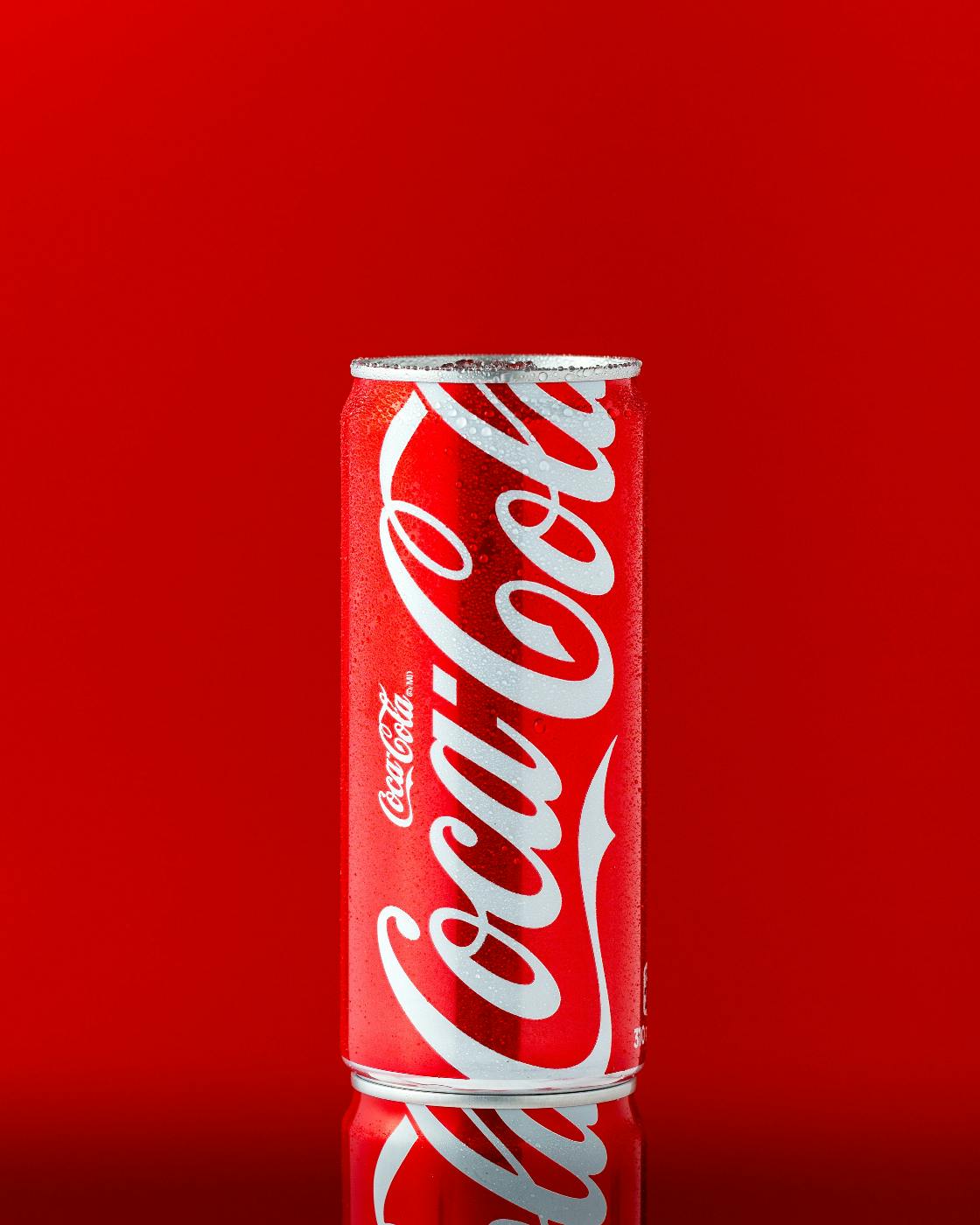
Brand Equity: Understanding and Enhancing Your Brand’s Value

Case Study Of Coca-Cola: What Led To Its Success?
Aashita Singh
Updated on: August 23, 2023
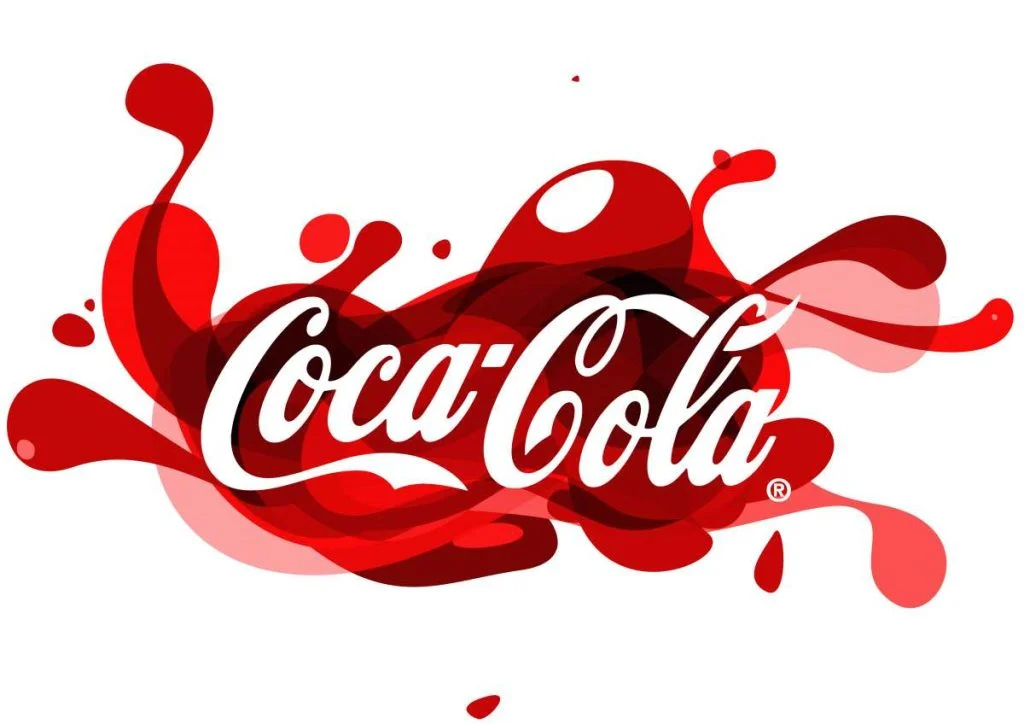
In a world brimming with countless beverages, one name stands tall – Coca-Cola. This fizzy elixir has captured the hearts and palates of billions around the globe, becoming a symbol of refreshment, happiness, and, of course, capitalism. The story of Coca-Cola is not just a tale of sweet bubbles, it’s a narrative of resilience, innovation, and the ability to adapt to the ever-changing tastes of consumers. So let’s pop the top and delve into the remarkable case study of Coca-Cola and what led to its success, and the hurdles it has faced.

Coca-Cola’s Profile:
The year was 1886, and the place was Atlanta, Georgia, where the Coca-Cola saga begins with Dr. John S. Pemberton , a pharmacist with a penchant for experimentation. In the heart of his laboratory, he mixed together a curious blend of coca leaf extract and kola nut, creating a syrupy concoction that he believed had medicinal properties. This brew, initially intended as a patent medicine to soothe headaches and fatigue. But, later on it was mixed with carbonated water to create a fizzy drink. It was first sold at Jacob’s Pharmacy on May 8, 1886.
It was Frank M. Robinson , Dr. Pemberton’s bookkeeper, who gave the concoction its iconic name. He played a pivotal role in the brand’s early history by suggesting the name Coca-Cola and designing the now-famous logo.
- He believed that “Coca-Cola” conveyed a sense of euphony and captured the drink’s two main ingredients.
- He even penned the flowing script of the Coca-Cola logo that remains an indelible part of the brand’s identity.
Coca-Cola Case Study to Rise to Prominence:
Despite Pemberton’s vision, financial difficulties led to the sale of Coca-Cola formula in 1887 for a mere $2,300.
Its key points:
- Asa Griggs Candler , a visionary businessman, acquired the rights to Coca-Cola and embarked on a mission to make it a national sensation.
- His aggressive marketing tactics and bold advertising campaigns set the stage for Coca-Cola’s expansion.
- In 1894, Candler incorporated The Coca-Cola Company and pushed it for widespread distribution.
- Soon, the beverage was available in every U.S state, solidifying its position as an American favorite.
- Its sales increased by a phenomenal percentage because of Candler efforts.
- The evolution of Coca-Cola would not be complete without mentioning the groundbreaking contour bottle, introduced in 1915.
- It is said to be the stroke of genius – the contour bottle.
- Designed to be distinctively recognizable even in the dark or shattered into pieces.
- This bottle not only protected the secret formula but also became a symbol of Coca-Cola’s commitment to quality.
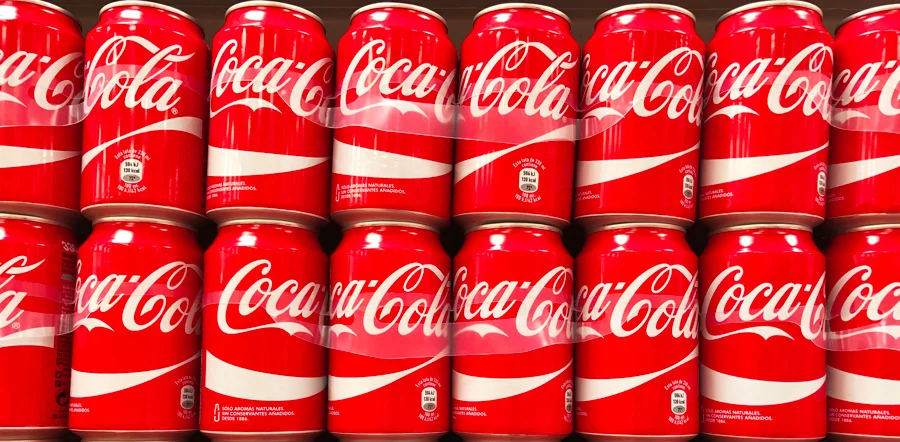
- This curvaceous bottle not only protected the secret formula of the brand itself.
- This distinctive packaging contributed to Coca-Cola’s worldwide recognition.
NOTE: We have detailed article about various functions of packaging ! Do check that out!!
In 1919, Ernest Woodruff bought up the company. Thereafter, Ernest’s sons continued to run the company until they transformed it into an international brand. The company was officially listed on the New York stock exchange in 1919 under the symbol KO.
Coca-Cola’s study to International Expansion:
- With success at home! Coca-Cola set its sights on global domination. During World War II, the company provided American troops with Coca-Cola, using slogans like “The pause that refreshes” to boost morale.
- After the war, international expansion continued, with bottling plants established worldwide.
- The introduction of Coca-Cola during the war created its demand in the international market.
- After that, Coca-Cola began establishing its partnerships with distributors and bottling companies all around the world.
- At present, the company operates and works in more than 200 countries and territories.
- Coca-Cola was launched in India in 1956, with the slogan “Refresh Yourself”.
Some key points of Coca-Cola Case Study:
- The company brand value was estimated at $97.9 billion in 2022.
- The brand logo can be recognized by 93% of the global population.
- For advertisement the company has used $ 4 billion annually for advertising, between the years 2015 to 2021, except for the year 2020 (due to pandemic).
- The company is recorded to have 225 bottling partners and 900 bottling plants globally.
- The brand employs around 700,000 employees.
- The company is recorded to have the same price between the years 1856-1959, at 5 cents.
- Offers beverage options of beverage to more than 200 brands to consumers worldwide.
- Partners with 24 million retail customer outlets.
- Company has a profile that includes $ 21 million brands.
- In 2022, Coca-Cola was the most valuable brand in the non-alcoholic area globally at $ 35.4 billion
Who Owns Coca-Cola?
There are various shareholders holding shares in the company.
Coco-Cola is a public listed company.
But the topmost are – Berkshire Hathaway, The Vanguard Group, BlackRock. However, the largest share of the brand company is said to be of Warren Buffett.
- Vanguard holding 8.16%
- Berkshire holding 9.25%
- BlackRock holding 4.58%
- Warren Buffett holding 9.30%
NOTE: You can our other success stories of business like Ola Case Study !
Coca-Cola’s Growth Strategy:
In the competitive landscape of the global beverage industry, Coca-Cola has managed to maintain its position as a market leader for over a century. let’s see one another part of Case Study of Coca-Cola-
Ever wonder how it has achieved such remarkable and enduring growth?
Let’s delve into Case Study of Coca-Cola’s growth strategy:
- Product Diversification: One of Coca-Cola’s core strategies for growth is product diversification. While Coca-Cola classic remains the flagship product, the company has expanded its portfolio to cater to changing consumer preferences. This includes offerings like Diet Coke, Coca-Cola Zero Sugar, and an array of flavored and non-carbonated beverages such as water, juices, and teas.
- Developed market focus: Coca-Cola has identified the importance of growing developing markets. Coco-Cola’s 70% of all beverages which are commercialized are being consumed in the developed world as compared to the developing world which is 30%.
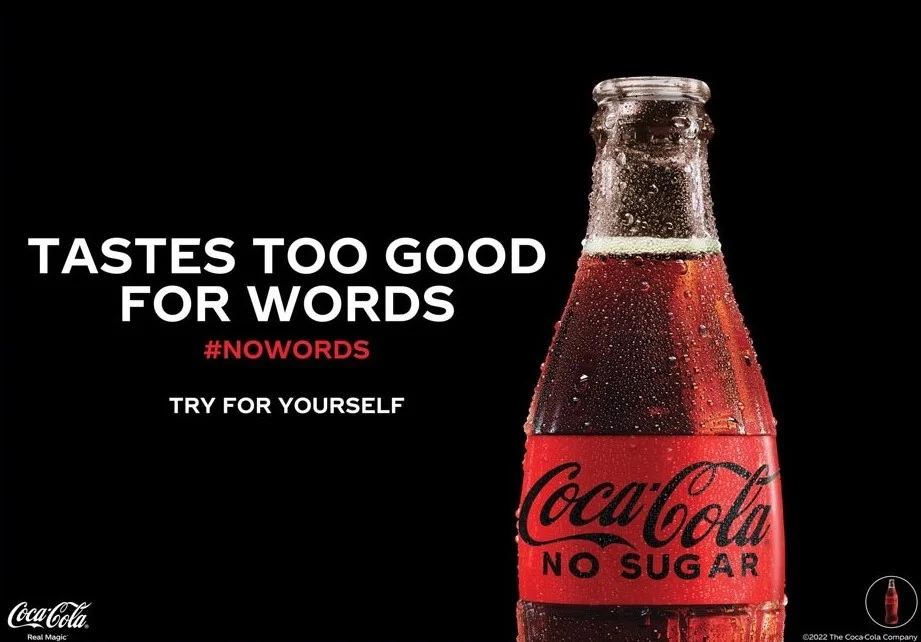
- Global Expansion: Coca-Cola’s global reach is a testament to its growth strategy. With operations in over 200 countries, the company has successfully expanded its footprint worldwide. It tailors its product to local tastes and preferences, ensuring relevance in diverse markets. Local partnerships and distribution networks are key components of this strategy, allowing Coca-Cola to penetrate even the most remote corners of the globe.
- Innovation and New markets: innovation is at the heart of Coca-Cola’s growth strategy. The company continually invests in research and development to create new beverages and packaging solutions. An example of this is the introduction of smaller-sized cans and bottles to address consumer health concerns about portion control and health.
- Branding and Marketing: Coca-Cola’s branding and marketing efforts are legendary. The company consistently runs high-impact advertising campaigns, often featuring celebrities and memorable slogans. Its marketing goes beyond mere product promotion, it aims to create emotional connections with consumers. For example, Share Coke Campaign.
- Sustainability and Corporate responsibility: Sustainability has become a vital component of Coca-Cola’s growth strategy. The company realized the importance of environmental and social responsibility. Started taking Initiatives such as reducing water usage, recycling programs, and commitments. Which contributes to their sustainable sourcing of ingredients to its long-term growth plans.
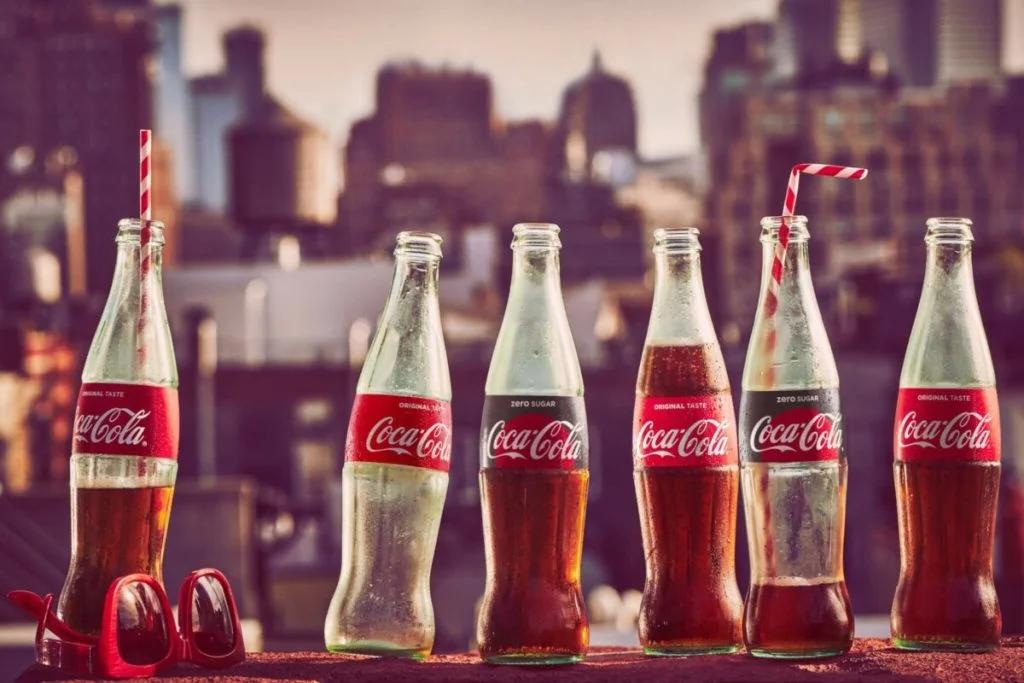
7. Strategic Partnerships: Coca-Cola strategically partners with various organizations and events to enhance its visibility and association with positive experiences. Sponsorships of major sports leagues, music festivals, and cultural events create opportunities for brand exposure and engagement with consumers.
Some memorable marketing campaigns of Coca-Cola that led to its success:
When it comes to marketing mastery, few brands can rival Coca-Cola. Over the years, this iconic beverage company has crafted some of the world’s most memorable and emotionally resonant advertising campaigns.
Some of them are:
- Share a Coke (2011) : It was a stroke of genius. Personalization of packaging was a popular marketing tactic of Coca Cola. It personalized its bottles and cans by printing the common names of individuals. The company encouraged people to find their names on the bottles. Also, it asked people to share the bottle or can of coke with their friends or family members.
- Taste the Feeling (2016) : It featured simple, relatable moments of people enjoying Coca-Cola and emphasized that the drink was for everyone, for every feeling, and for every day. The campaign included coke, diet coke and zero sugar coke.
- Thanda matlab Coca-Cola (2003): Aiming at the idea of refreshing drinks or Thanda, the campaign focuses its attention to local markets to win the people’s trust in the country. They made Coca-Cola and Thanda synonyms of each other.
- Open Happiness: In 2009, Coca-Cola introduced the “Open Happiness” campaign, this optimistic and cheerful message encouraged people to find happiness in the little moments and share them with others. The campaign included a variety of feel-good ads, catchy jingles, and interactive marketing initiatives, inviting consumers to be part of the happiness movement.
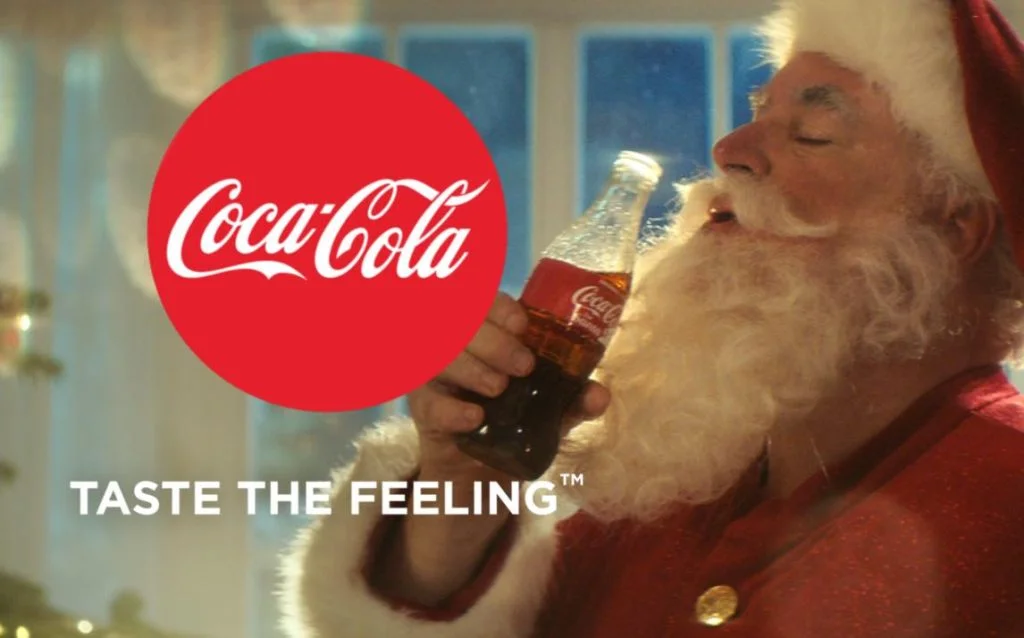
Case Study of Coca-Cola : How Coca-Cola makes money?
Coca-Cola, the world’s most iconic beverage, has a recipe for success that extends far beyond its secret formula. Its ability to generate substantial revenue is a testament to its diverse income streams and strategic business model.
Some of them are :
Core product sales: At its heart, Coca-Cola generates a significant portion of its revenue from the sales of its core products, including Coca-Cola zero sugar, and various flavored variants.
Diversified beverage portfolio: Coca-Cola isn’t just about cola anymore. The company has diversified its product portfolio to include a wide range of beverages, catering to diverse consumer tastes.
Non-Alcoholic ready-to-drink coffee: Coca-Cola has also ventured into the thriving market of non-alcoholic ready-to-drink coffee. With acquisitions like Costa Coffee and brands like Georgia Coffee, it has tapped into the caffeine cravings of consumers worldwide.
Partnerships and Licensing: Coca-Cola earns revenue through partnerships and licensing agreements. For example, it collaborates with other companies to produce co-branded products, like Coca-Cola with coffee, and it licenses its brand for use in various merchandise, from apparel to collectibles.
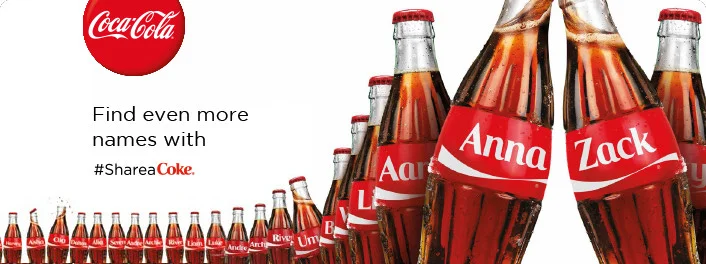
Sponsorships and Marketing Campaigns: Coca-Cola invests heavily in sponsorships of major events, sports leagues, and cultural activities. These partnerships provide brand exposure and promotional opportunities, driving consumer engagement and sales. The company’s marketing campaigns, often featuring celebrities and memorable commercials, also contributes to its revenue.
Challenges to Coca-Cola Success:
Coca-Cola, the behemoth of the beverage industry, is no stranger to challenges, despite its remarkable success. It faced numerous challenges that ranged from the preferences of consumers and concerns related to the environment.
Let’s explore the hurdles this iconic company faces on its path to sustained prosperity.
- Health and Wellness concerns: One of the most significant challenges Coca-Cola faces is the shift in consumer attitudes towards health and wellness. With growing awareness about the health risks associated with excessive sugar consumption, sales of sugary carbonated beverages like Coca-Cola classic have been under pressure.
- Sugar and Obesity: Linked to health concerns is the ongoing controversy surrounding the role of sugary beverages in the obesity epidemic. Coca-Cola, along with other soda manufacturers, has faced legal battles, health advocacy campaigns, and regulatory pressures. Responding to this challenge Coca-Cola has introduced low-calorie and reduced-sugar alternatives and actively participates in public health discussions.
- Changing consumer preferences: The ever-evolving consumer preferences pose a constant challenge. The desire for diverse and unique flavors, healthier options, and transparency in ingredient sourcing requires Coca-Cola to innovate continually.
- Competition in the beverage market: The beverage landscape is highly competitive, with numerous players vying for consumer attention. Coca-Cola competes not only with traditional rivals like PepsiCo but also faces competition from emerging beverage categories like energy drinks, ready-to-drink coffee, and plant-based beverages.
- Supply chain disruptions: Disruptions in the supply chain, whether due to natural disasters, pandemics, or other unforeseen events, can disrupt production and distribution. These disruptions may lead to temporary shortages or increased costs.
- Competition: The most prominent challenger to Coca-Cola’s throne is none other than PepsiCo and ThumbsUp. The rivalry between Coca-Cola and PepsiCo, often referred to as the “Cola Wars” is legendary. PepsiCo’s flagship product, Pepsi, competes head-to-head with Coca-Cola Classic. Both brands engage in intense marketing campaigns and strategic pricing to win the favor of consumers.
Future plans of Coca-Cola :
In a world of evolving tastes, shifting consumer preferences, and increasing environmental consciousness, Coca-Cola, the global beverage behemoth, is setting its sights on the future. Coca-Cola is planning to take a dynamic approach in marketing investment.
Coca-Cola’s future plans are a blend of sustainability, diversification, digital engagement, innovation, and a relentless focus on the consumer. As the world of beverages evolves, Coca-Cola is determined to stay ahead of the curve, refreshing not only the taste buds, but also the expectations for a more sustainable beverage experience.
The future, it seems, is bubbling with excitement for Coca-Cola.
Conclusion :
The Coca-Cola success story is a testament to the power of innovation, branding, and adaptability. It has conquered challenges, embraced change, and remained a symbol of joy for generations. The world may evolve, but the timeless allure of a Coke and a smile endures. By staying true to its core values while embracing change, Coca-Cola continues to fizz its way to the top.
Related Posts:
Contact Info: Axponent Media Pvt Ltd, 706-707 , 7th Floor Tower A , Iris Tech Park, Sector 48, Sohna Road, Gurugram, India, Pin - 122018
© The Business Rule 2024
- Sign In Sign Up
Home / Branding / Evolution of Brands: A Case Study Of Coca-Cola
Evolution of Brands: A Case Study Of Coca-Cola
Coca-Cola has an interesting history that makes a great case study in the evolution of brands. It has grown exponentially and become one of the most recognizable companies in the world. Further, with an iconic product and logo, it has established itself as a part of pop culture too. Moreover, Coca-Cola sells more than 2,800 in 200 countries and is the largest beverage manufacturer in the world.
History of The Coca-Cola Company
The Coca-Cola Company was founded in 1886 by pharmacist John Stith Pemberton from Columbus, Georgia. He invented the original Coca-Cola drink as a medicinal beverage to help in the relief of headaches. Furthermore, Pemberton’s bookkeeper, Frank M. Robinson, is credited with naming the product and creating its logo. He is said to have chosen the name based on its two main ingredients, coca leaves, and kola nuts. He also felt that two ‘Cs’ would look good, and the name sounded like an alliteration. Later, American businessman Asa Griggs Candler purchased the Coca-Cola formula and brand from Pemberton’s heirs. He then founded The Coca-Cola Company formally in Atlanta in 1889. Later, Ernest Woodruff’s Trust Company of Georgia acquired the company in 1919. It has since been a publicly traded company listed on the New York Stock Exchange.
The evolution of Coca Cola
From a medicinal beverage to everyone’s favorite beverage, the evolution of brands for Coca-Cola has been a long process. With many genius ad campaigns, deals, business strategies, and logo evolution, it has managed to grow and deal with competition too. Truly, Coca-Cola makes the most of the evolution of brands in many of the ways talked about below.
Acquisitions:
The Coca-Cola Company has grown its brand through several smart acquisitions over the years. Additionally, these have helped it expand its reach and fight its competition in markets, home, and abroad. Here are some of the brands that it added to its portfolio.
- Minute Maid: Acquired in 1960 for an undisclosed amount.
- Thums Up: The Indian Cola brand, acquired in 1993.
- Costa Coffee: Acquired from £3.9bn. in 2019.
New products:
The Coca-Cola Company has continued to release new products to create a buzz or cater to different buyers. Examples of these are Diet Coke and Coke Zero, two products with less sugar, created to appeal to more health-conscious buyers. Other than this there is Caffeine-Free Coca-Cola for those who want to avoid caffeine. There have also been various flavors of Coke like vanilla, coffee, cherry, and lime.
Logo Evolution of Coca-Cola:
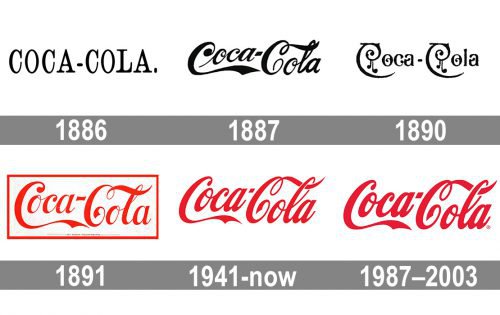
One of the biggest parts of Coca-Cola’s evolution of brands is its logo evolution. Originally created by founder Pemberton’s bookkeeper, Frank M. Robinson, the logo has remained fairly constant since. There have been minor changes and experimentation, but the core logo has become an eternal part of the brand.
Related: Big, Bold, Blue: The Evolution Of The Pepsi Branding
The Beginnings
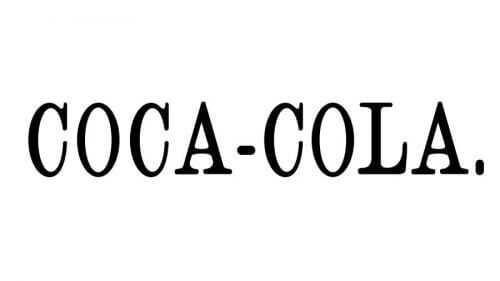
The first known logo is simply ‘Coca-Cola’ written in a serif font and appeared in 1886
Image Credit: The Coca Cola Company .
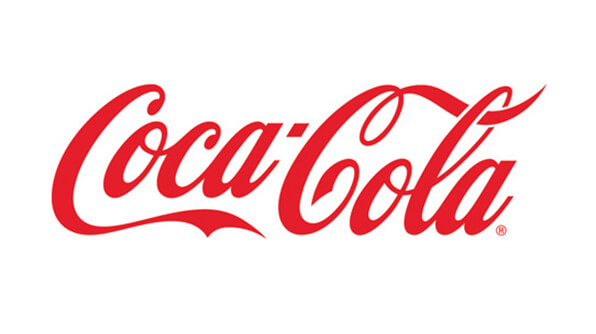
The next logo evolution came soon after in 1887 with Robinson using the flowing Spencerian script instead. In fact, this logo has remained fairly constant ever since and is iconic worldwide.
Image Credit: The Coca Cola Company
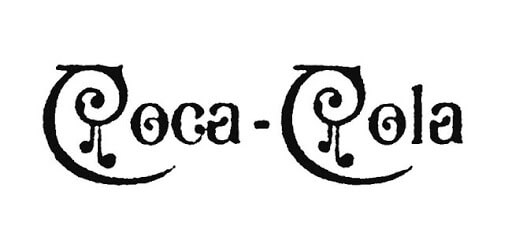
For a single year, between 1890-1891 the Coke logo added extra swirls as a short-lived makeover.
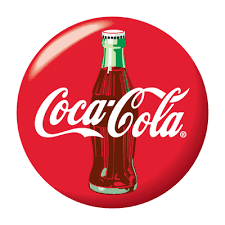
1947 to the 1960s saw the use of ‘The Coca-Cola Red Disc’ that was used to advertise Coca-Cola. Later the discs began to be hung inside businesses as advertising and decoration.
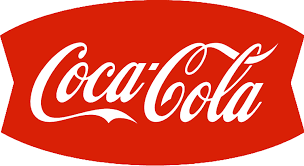
The next chapter in the Coke logo evolution comes in from 1958 to the1960s. This saw the Coke logo move into a fishy or Arciform shape. Also, this was used in marketing, signs, and vending machines.
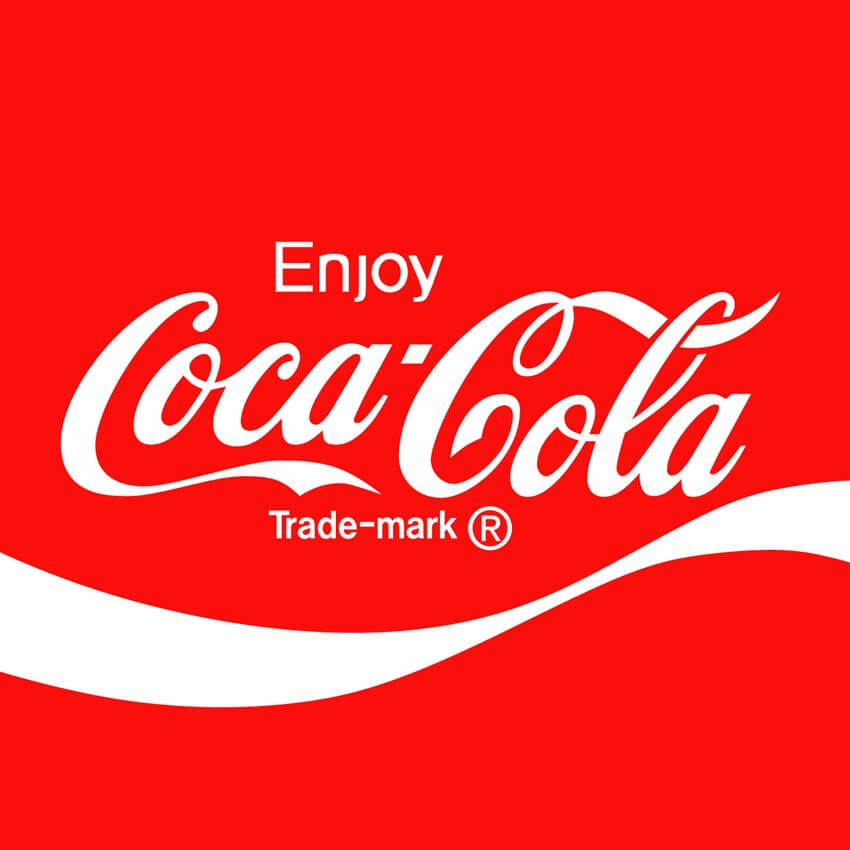
One of the most important logo evolution changes came in 1969. This brought the introduction of the white wave or ‘Dynamic Ribbon Device’, still used today.
In more recent times
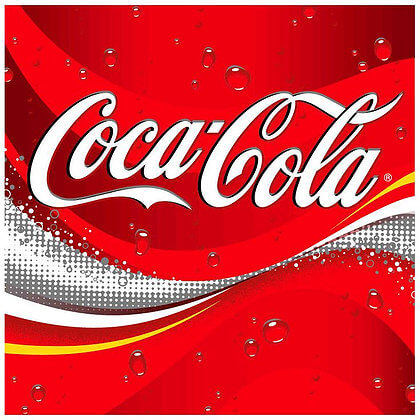
The 2003 ‘Keeping it real’ saw the next Coke logo evolution with an enhancement to the white wave. A yellow accent to the wave and bubbles were added this time.
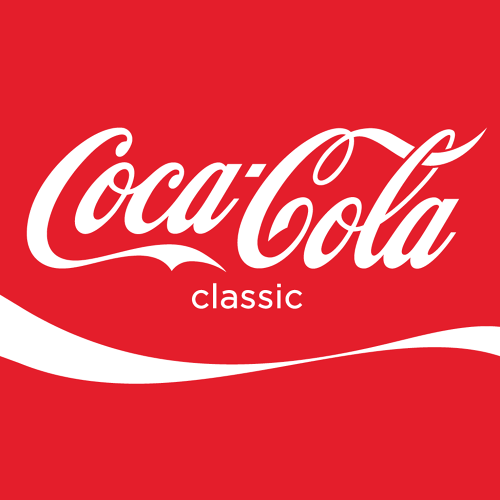
The 2007 logo evolution saw a return to a more classic design. Moreover, the logo was made clean and the previous additions were removed in favor of a single white ribbon.
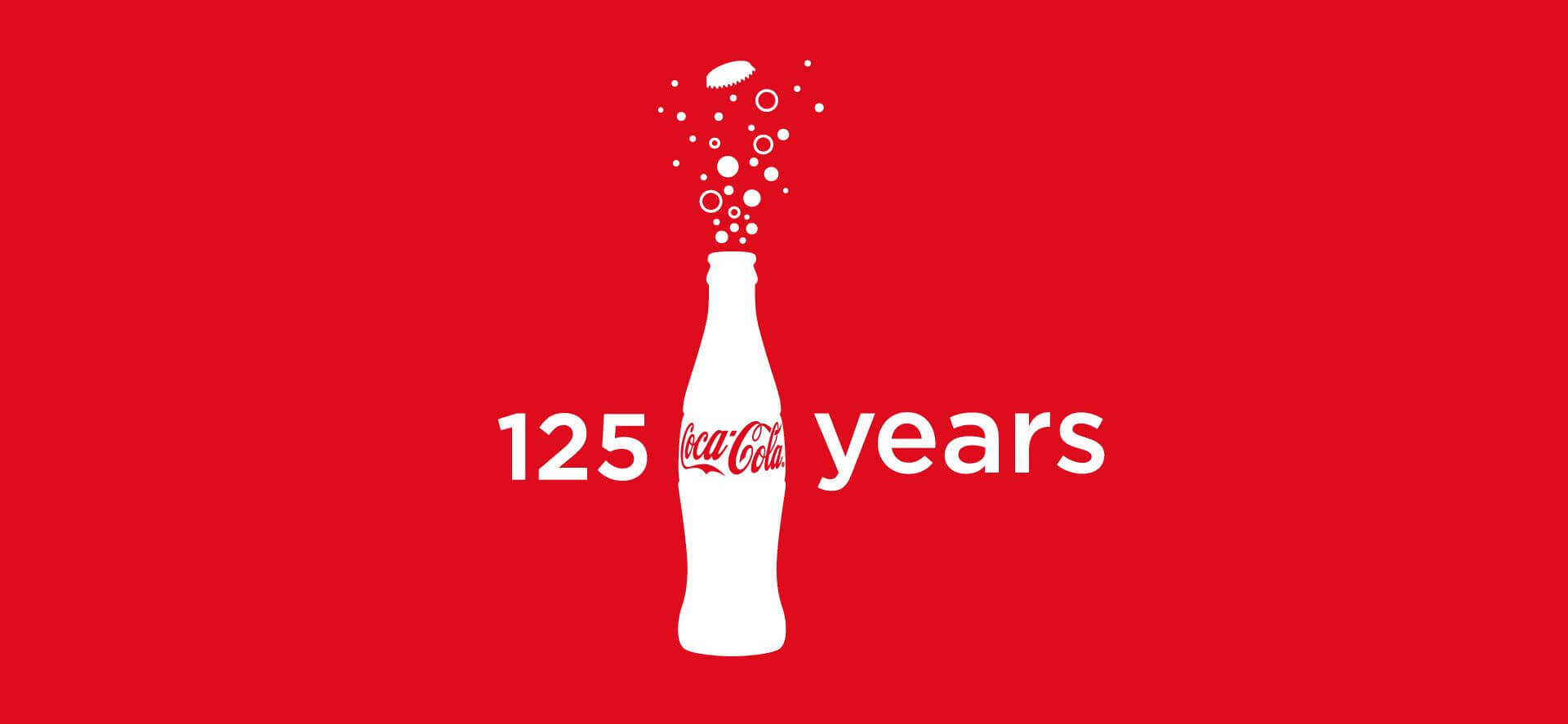
In 2011 the company celebrated ‘125 years of happiness’ and saw a logo evolution with bubbles emerging from a bottle.
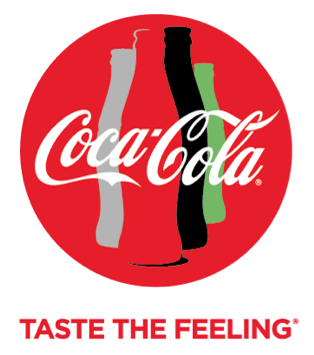
The 2016 ‘Taste the Feeling’ campaign logo evolution saw Coke bring their One Brand strategy to life, combining elements from their various logos.
A clean, identifiable, and iconic logo has helped The Coca-Cola Company grow globally and become instantly recognizable. While its logo remains fairly constant, it shows how even minor changes make an impact. Hence, the brand was able to keep up with the times and keep its logo constant yet looking fresh over the years. So, if you are ready to create your own logo then ,
Head To Simplified To Get Started Designing!

20 Design Jargons to Know | Part 1
20 design terms every non-designer should know | part 2, you may also like.

10 Best AI Marketing Tools for Transformative Brand Marketing
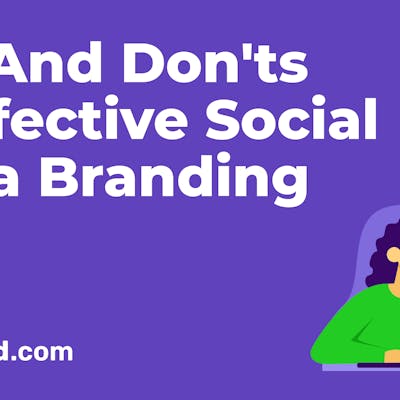
14 Do’s and Don’ts of Effective Social Media Branding
7 high-paying career opportunities in branding in 2024, 19 restaurant logos to inspire your next design | simplified, leading ladies: meet the game-changing female founders of the decade, branding 101: how to develop an effective brand book, importance of branding explained | 7 reasons you need to know, everything you need to know about brand equity for your business pt. 1, the ultimate logo design checklist to help your brand stand out, building brand awareness: top secrets that competitors won’t share, a simplified guide to building a strong personal brand, your ultimate guide to youtube branding [dos, don’ts, & free tool inside], unlocking the power of black and yellow in branding, 5 inspiring brand videos ideas to fuel your next campaign, 10 of the best text logo ideas for your next brand campaign in 2024.
Comments are closed.
More in: Branding
10 logo design trends that will help your brand stand out in 2024, 6 ways to build brand loyalty in 2024, 7 value proposition examples to attract customers in 2024, 9 creative branding trends of 2024, utilizing instagram branding to boost your thrift shop’s promotion.

Top 10 Questions To Mention in Your Logo Designing Questionnaire in 2024
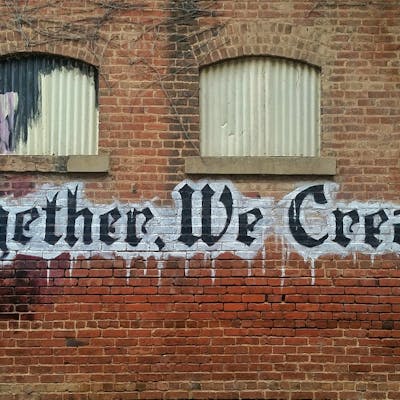
8 Elements That Make A Strong Brand Identity in 2024 + FREE TOOLKIT!

Top 11 Simple Logo Inspiration To Inspire Your Brand In 2024
The 7 essential elements of writing powerful product features, start with simplified it's free forever.
Design, Write, Edit videos, and Publish Content from one app
Sign up now

- Graphic Design
- Video & Animations
- Social Media Planner
- Background Remover
- Magic Resizer
- Animation Maker
- Content Rewriter
- Long Form Writer
- Instagram Reels
- Customer Testimonial
- Convert mov to mp4
- Convert jpg to png
- Instagram Stories
- Facebook Posts
- Linkedin Posts
- Pinterest Pins
- Half Page Ads
- Instagram Ads
- Facebook Feed Ads
- Billboard Ads
- Newsletter Popup
- Shopify Mobile Banner
- Shopify Home Page
- Business Cards
- Explore Static Templates
- YouTube Shorts
- Pinterest Video Pins
- TikTok Videos
- Explore Videos
- Hashtag Generator
- Youtube Video Titles
- Photo Captions
- Amazon Product Features
- Review Responder
- Blog Ideas + Title
- Sentence Expander
- Before After Bridge
- Social Media Quotes
- Meme Generator
- Explore AI Templates
- Google My Business
- Social Media Planning
- Social Media Analytics
- Video Academy
- Help center
- Affiliate Program
Latest Posts
Write for us: how to guest post on the simplified blog, 10 best video hosting sites [free & paid], 25 youtube shorts ideas for your next viral hit, how to create viral youtube shorts: tips from top creators.
Kabinet Tower, Surabaya JIn. Mayjen Yono Soewoyo AK 2 no.27, Surabaya, Indonesia 60256
7 Coca Cola Marketing Strategy 2024 – A Case Study
- January 31, 2024

Coca-Cola , the iconic soft drink brand that has been quenching thirsts for over 120 years, continues to reign supreme as the most consumed soda globally. With an astonishing 1.9 billion servings enjoyed daily in more than 200 countries, Coca Cola marketing strategy has proven to be a force to be reckoned with.
In this article, we will delve into the intricacies of Coca Cola marketing strategy, dissecting its target audience segmentation, marketing channels, product strategy, pricing strategy, and promotion strategy.
We will also explore the key factors that contribute to Coca-Cola’s unparalleled success and examine the unique elements that set its marketing approach apart from its competitors.
Read More : Bath and Body Works Marketing Strategy: A Comprehensive Analysis
Coca-Cola’s Target Audience

Coca-Cola’s enduring popularity can be attributed, in part, to its strategic approach to target audience segmentation. The brand recognizes the importance of appealing to various demographics to maintain its wide consumer base.
A. Age Segmentation
The first key demographic that Coca-Cola targets is the youth, specifically those between the ages of 10 and 35. To capture this demographic, Coca-Cola leverages celebrity endorsements in its advertisements and conducts promotional campaigns within universities, schools, and colleges.
This approach not only helps establish a strong connection with the youth but also cultivates brand loyalty at an early age.
Additionally, Coca-Cola understands the importance of catering to middle-aged and older adults who are health-conscious or suffer from diabetes.
To meet the needs of this demographic, Coca-Cola offers products such as Diet Coke, which provides a lighter, more calorie-conscious option.
B. Income and Family Size
Coca-Cola adopts a diversified pricing strategy to cater to a wide range of consumers based on their income and family size. By offering packaging and sizes with different price points, Coca-Cola ensures affordability for students, middle-class families, low-income individuals, and small families.
This approach not only expands their customer base but also reinforces their commitment to accessibility and inclusivity.
Coca Cola Marketing Strategy

Coca-Cola’s global reach and enduring popularity are the result of a carefully crafted marketing strategy. This strategy encompasses various aspects, including its product strategy, pricing strategy, location strategy, and promotion strategy.
1. Product Strategy
Coca Cola marketing strategy – Coca-Cola boasts an extensive product portfolio, comprising approximately 500 distinct products. Its range of branded beverages, including Coca-Cola, Minute Maid, Diet Coke, Coca-Cola Light, Coca-Cola Life, Coca-Cola Zero, Sprite, Fanta, and more, are available in a variety of sizes and packaging options.
This wide product range not only allows Coca-Cola to capture a significant market share but also caters to a broad spectrum of consumer preferences and tastes.
2. Pricing Strategy
Coca-Cola’s approach to pricing has undergone substantial changes over the years. Although the company was renowned for maintaining a consistent five-cent price for nearly 73 years, it had to adjust to shifting market conditions and heightened competition.
Coca-Cola now adopts a flexible pricing strategy that strikes a delicate balance, ensuring both affordability and perceived value to customers.
This approach avoids steep price drops that could weaken perceptions of product quality while also avoiding unreasonable price increases that could push consumers toward alternatives.
3. Location Strategy
Coca Cola marketing strategy – Coca-Cola’s wide distribution network extends its reach to every corner of the world. The company is organized into six operating regions: North America, Latin America, Africa, Europe, the Pacific, and Eurasia. Within this framework, Coca-Cola’s bottling partners play a key role in the manufacturing, packaging, and shipping of its products.
This extensive network ensures wide availability to consumers, allowing Coca-Cola to maintain its market presence and meet consumer demand effectively.
Coca-Cola’s commitment to sustainability is evident in its extensive reverse supply chain network, facilitating the collection and reuse of glass bottles.
This sustainable practice not only reduces environmental impact but also contributes to cost efficiency and resource conservation, enhancing the brand’s reputation and global market presence.
4. Promotion Strategy
To thrive in a fiercely competitive market, Coca-Cola deploys a diverse range of promotional and Coca Cola marketing strategy.
The company invests heavily in brand promotion, utilizing a combination of traditional and international advertising channels to effectively reach its target audience.
These strategies not only reinforce Coca-Cola’s brand identity but also help maintain a strong market presence amidst intense competition.
Coca-Cola’s iconic bottle design, font, and logo have played a pivotal role in establishing its distinctive brand identity. The unique bottle shape, inspired by the cocoa pod’s design, has become a focal point in Coca Cola marketing strategy.
The elegant Spencerian script used in its logo sets it apart from its competitors, making it visually appealing and deeply memorable. By maintaining the integrity of its classic bottle, font, and logo, Coca-Cola ensures consistency and reinforces brand recognition.
5. Localized Positioning
Coca Cola marketing strategy – Coca-Cola’s ‘Share a Coke’ campaign, launched in 2018 across nearly fifty countries, has emerged as a resounding success story.
By featuring images of local celebrities and crafting messages that resonate with the local language and culture, this campaign effectively targets and engages with the local market. The personalized approach creates a sense of connection and fosters brand loyalty among consumers.
6. Sponsorships
Coca Cola marketing strategy – Coca-Cola has established a strong reputation for its sponsorship initiatives, partnering with high-profile events such as the Olympic Games, NASCAR, and American Idol.
These sponsorships not only provide support to athletes, officials, and fans on a global scale but also enhance Coca-Cola’s brand visibility and association with prestigious events. By aligning itself with these events, Coca-Cola attracts attention and reinforces its brand presence.
7. Social Media

In line with the ever-evolving technological landscape, social media and online communication channels have assumed paramount importance within Coca Cola marketing strategy.
The company actively utilizes diverse online digital marketing platforms, such as Facebook, Twitter, Instagram, YouTube, and Snapchat, to distribute a wide range of content, including images, videos, and other multimedia.
Key components of Coca Cola marketing strategy in the digital sphere include search engine optimization (SEO), email marketing, content marketing, and video marketing.
By harnessing the power of social media, Coca-Cola connects with consumers, builds brand loyalty, and expands its reach in the digital realm.
Read More : 9 Burger King Marketing Strategy – Case Study
Coca Cola marketing strategy has proven to be a masterstroke in the world of beverages. By understanding its target audience, leveraging a mix of personal and non-personal marketing channels, and implementing a well-rounded marketing strategy, Coca-Cola has cemented its position as the world’s leading soft drink brand.
From its product strategy and pricing strategy to its location strategy and promotion strategy, Coca-Cola’s meticulous approach has allowed it to maintain a strong presence in the global market. With a focus on customer connection and brand loyalty, Coca-Cola continues to captivate consumers worldwide, refreshing and delighting them one sip at a time.
Gerard Jovian Brand
Related posts.

Gucci Marketing Strategy : A Comprehensive Analysis
- February 24, 2024

How Ferrari Marketing Strategy Became a Successful Brand
- February 23, 2024

Unleashing the Power of Fenty Beauty Marketing Strategy
- February 22, 2024
Trending now

Marketing Research
40 case studies in branding.
[Apple: Innovation and Design as Brand Identity]
[Nike: Building a Global Brand Through Storytelling and Innovation]
[Tesla: Revolutionizing the Automotive Industry Through Innovation and Sustainability]
[Amazon: Transforming Retail and Beyond]
[Zoom: Connecting the World Through Video Communications]
[Beyond Meat: A Plant-Based Revolution]
[TikTok: A Dance with Global Success]
[Coca-Cola: Quenching the World’s Thirst for Over a Century]
[Netflix: Redefining the Future of Entertainment]
[Airbnb: Disrupting the Hospitality Industry]
[Starbucks: Brewing Success Through Innovation and Responsibility]
[The Walt Disney Company: A Kingdom of Creativity and Innovation]
[McDonald’s: Serving Success with a Side of Innovation]
[Dove (Unilever): Crafting Beauty and Confidence]
[IKEA: A Symphony of Design, Affordability, and Sustainability]
[LEGO: Building Blocks of Innovation and Success]
[Slack: Revolutionizing Workplace Communication]
[Patagonia: A Case Study in Sustainable Business Practices]
[Spotify: Transitioning from music sales to subscription streaming]
[Warby Parker: Disrupting the traditional eyewear market with an online-first approach]
[Allbirds: A Case Study in Sustainable Footwear Innovation]
40.1 Apple : Innovation and Design as Brand Identity
- Introduction:
Apple Inc., known for its revolutionary technology and design, has built its brand on innovation and a unique user experience. What began as a garage startup in 1976 has become one of the world’s most valuable companies. Let’s explore how Apple achieved this success.
- Background:
Founding and Early Years: Founded by Steve Jobs, Steve Wozniak, and Ronald Wayne, Apple started as a computer manufacturer. The launch of the Apple I computer in 1976 marked the company’s debut, and the subsequent Apple II became a significant success.
Rise to Prominence: With the introduction of the Macintosh in 1984, Apple emphasized graphical user interface, leading the way in user-friendly computing. The iPod, iPhone, iPad, and MacBook line have since become iconic products.
- Product Development: Regularly updating products to include the latest technology.
- Software Ecosystem: Creating a seamless software environment that ties different Apple products together.
- Aesthetic Appeal: Sleek and modern design across all products.
- User Experience: Emphasizing intuitive interfaces.
- Apple Ecosystem: The interoperability of products encourages customers to stay within the Apple brand.
- Customer Service: Apple’s customer support, including the Genius Bar in Apple Stores, provides personalized service.
- Store Design: Apple Stores are known for their minimalist design and layout.
- In-Store Experience: Offering hands-on experience with products and one-on-one customer service.
- High Pricing Strategy: Apple’s premium pricing limits accessibility for many consumers.
- Dependence on Key Products: A significant reliance on the iPhone, which generates a large portion of revenue.
- Manufacturing Practices: Criticisms regarding working conditions in factories.
- Environmental Concerns: Issues related to recycling and waste management.
- Cultural Impact and Legacy:
Apple’s marketing has not only sold products but also shaped culture.
Think Different Campaign: This campaign emphasized Apple’s image as a company for creative and unconventional thinkers.
Influence on Music Industry: With the iPod and iTunes, Apple changed how people buy and listen to music.
Smartphone Revolution: The iPhone transformed mobile communication.
- Conclusion:
Apple’s brand is more than just a logo; it’s a symbol of innovation, quality, and a unique customer experience. By consistently focusing on design and innovation, Apple has maintained a strong brand identity that resonates with consumers globally. Its success offers essential insights into how a focus on innovation, design, and customer experience can build a powerful and enduring brand. The company’s challenges and criticisms also provide a nuanced understanding of the complexities of operating at the forefront of technology.
- Further Exploration:
Apple’s Advertising: Analyzing various Apple advertising campaigns over the years.
Competitor Analysis: Understanding how Apple’s branding strategies compare with competitors like Samsung, Google, and Microsoft.
Future Outlook: Speculating on Apple’s future in an ever-changing technology landscape.
This extended case study provides a comprehensive view of Apple’s branding, suitable for students who want to delve deeply into branding’s multifaceted nature. It includes various aspects of branding, marketing, challenges, and impact, allowing for a rich understanding of how a brand can shape not only a company’s success but also influence broader culture and industry trends.
40.2 Nike: Building a Global Brand Through Storytelling and Innovation
Nike, Inc. is a household name synonymous with athleticism, performance, and innovation. Through its creative marketing strategies and commitment to design, Nike has become a leader in the sports apparel industry. This case study will explore Nike’s rise to prominence and the branding strategies that have kept it at the forefront of the sports industry.
- Founding and Early Years: Founded as Blue Ribbon Sports in 1964 by Bill Bowerman and Phil Knight, the company changed its name to Nike, Inc. in 1971. The famous swoosh logo and the “Just Do It” slogan became integral parts of the brand’s identity.
- Growth and Expansion: With an initial focus on running shoes, Nike expanded into various sports, including basketball, soccer, and golf, becoming a multi-sport brand.
- Historical Partnerships: Nike’s collaboration with athletes like Michael Jordan led to the creation of the Air Jordan line.
- Global Ambassadors: Associating with top athletes like Serena Williams, Cristiano Ronaldo, and LeBron James.
- Emotional Connection: Creating ads that resonate emotionally with consumers, such as the “Find Your Greatness” campaign.
- Social Commentary: Engaging in cultural conversations, like the Colin Kaepernick campaign.
- Technological Advancements: Such as Nike Air cushioning technology and Flyknit fabric.
- Customization: Allowing consumers to personalize products through the NIKEiD platform.
- Nike Run Clubs: Building a community around the brand through running clubs and apps.
- Sustainability Initiatives: Such as the “Move to Zero” campaign focusing on reducing environmental impact.
- Market Competition: Competition from brands like Adidas and Under Armour.
- Pricing Strategies: Balancing premium pricing with accessibility for a broader audience.
- Labor Practices: Historical criticisms regarding factory working conditions.
- Sustainability Challenges: Managing environmental impacts across the supply chain.
Nike’s influence goes beyond sports apparel.
Influence on Streetwear: Collaborations with designers like Virgil Abloh have made Nike relevant in fashion circles.
Promotion of Women’s Sports: Marketing campaigns focusing on female athletes.
Global Reach: Establishing a presence in various global markets and sports.
Nike’s brand success lies in its ability to intertwine sports, culture, and personal aspiration. Its collaborations with athletes, investment in storytelling, and commitment to innovation have made it a leader in the sports apparel industry. The challenges and criticisms it has faced provide insight into the complexities of maintaining a global brand. Understanding Nike’s branding strategies offers an exciting exploration into how a brand can connect with consumers on multiple levels and across diverse markets.
Analyzing Advertising Campaigns: Students may explore various campaigns to understand how Nike connects with different demographics.
Competitor Analysis: Comparing Nike’s strategies with competitors to understand market dynamics.
Future of Sports Branding: Speculating on the future of branding in the sports industry and how Nike may continue to innovate.
This comprehensive case study provides a deep understanding of Nike’s branding strategies and allows students to appreciate the multifaceted nature of branding in the modern market. The connections between sports, culture, innovation, and marketing weave together to create a compelling story that offers valuable insights for anyone interested in branding, marketing, or the sports industry.
40.3 Tesla: Revolutionizing the Automotive Industry Through Innovation and Sustainability
Tesla, Inc. is not just a car manufacturer; it’s a technology company with a mission to accelerate the world’s transition to sustainable energy. Founded by a group of engineers, including Elon Musk, who became the public face of the company, Tesla has become a symbol of innovation and environmental responsibility. This case study explores how Tesla achieved this status.
- Founding and Early Years: Founded in 2003 by Martin Eberhard and Marc Tarpenning, and later joined by Elon Musk, JB Straubel, and Ian Wright, Tesla started with a vision to create electric cars that didn’t compromise on performance.
- Road to Success: The launch of the Tesla Roadster in 2008 proved that electric cars could be both stylish and powerful. Subsequent models, including the Model S, Model X, Model 3, and Model Y, diversified the product line.
- Autopilot: Developing self-driving technology.
- Battery Technology: Pioneering advancements in battery efficiency and lifespan.
- Clean Energy Products: Including solar panels and the Powerwall for energy storage.
- Sustainable Manufacturing: Efforts to minimize environmental impact in production.
- Online Sales: Bypassing traditional dealerships, selling directly to consumers online.
- Customer Experience: Creating unique showrooms and offering test drives.
- Elon Musk’s Twitter Presence: Utilizing social media to promote and defend the brand.
- Product Launches: Hosting grand events to unveil new products.
- Production Challenges: Meeting demand and managing quality control.
- Market Competition: Growing competition from traditional automakers entering the EV market.
- Labor Practices: Controversies related to factory conditions.
- Autopilot Safety Concerns: Debates over the safety of Tesla’s self-driving technology.
Changing Automotive Industry: Pushing the entire automotive industry towards electric vehicles.
Energy Conversation: Shaping dialogues about renewable energy and climate change.
Stock Market Phenomenon: Tesla’s unique position in the stock market as a technology/automotive company.
Tesla’s brand represents a fusion of technology, sustainability, and luxury. Through innovative products, a focus on environmental responsibility, and disruptive sales models, Tesla has not only built a successful brand but has also changed the landscape of the automotive industry. Analyzing Tesla’s strategies, challenges, and impacts provides valuable insights into how a brand can be a catalyst for industry-wide change.
Comparative Analysis: Understanding how Tesla’s branding strategies differ from traditional automotive brands.
Future of Mobility: Speculating on the future of electric vehicles, autonomous driving, and Tesla’s role in shaping that future.
Global Expansion: Exploring Tesla’s efforts to expand into various global markets, such as China and Europe.
40.4 Amazon: Transforming Retail and Beyond
Amazon, founded by Jeff Bezos in 1994, started as an online bookstore and quickly expanded into a vast e-commerce platform that sells virtually everything. Beyond retail, Amazon has also entered cloud computing, entertainment, and even healthcare. This case study will explore Amazon’s diverse business activities and how they’ve contributed to its colossal success.
- Early Years: Started in a garage, focusing on books, before expanding into other categories.
- Global Expansion: Rapid growth into international markets and diversified product offerings.
- Customer Experience: One-click ordering, personalized recommendations, and fast shipping.
- Amazon Prime: Subscription model offering free shipping, video streaming, and more.
- Amazon Marketplace: Allowing third-party sellers to reach Amazon’s vast customer base.
- Amazon Web Services (AWS): A leading provider of cloud computing services.
- Voice Technology: Introduction of Alexa and Echo smart speakers.
- Amazon Studios: Producing and distributing original content.
- Twitch Acquisition: Engaging the gaming community.
- Whole Foods Acquisition: Entering the brick-and-mortar retail space.
- Amazon Pharmacy: Expanding into the healthcare sector.
- Market Power: Criticisms related to monopolistic practices.
- Tax Practices: Scrutiny over tax strategies and contributions.
- Working Conditions: Concerns over conditions in warehouses and treatment of employees.
- Environmental Impact: Criticisms related to packaging and carbon footprint.
- Changing Retail Landscape: Influencing consumer expectations and competitors’ strategies.
- Innovation Leader: Setting standards in technology, logistics, and customer service.
Amazon’s success story is a testament to innovation, diversification, and relentless focus on customer experience. By continuously expanding into new areas, Amazon has not only transformed retail but also various other industries. Examining Amazon’s strategies, challenges, and cultural impact provides a deep understanding of modern business dynamics and the role of branding in shaping industry landscapes.
Competitive Analysis: Understanding Amazon’s position among global tech giants.
Future Projections: Exploring potential new markets and technologies for Amazon.
Regulatory Landscape: Analyzing potential legal and regulatory challenges.
This extensive case study offers students a multifaceted exploration of one of the world’s most impactful brands. From e-commerce to entertainment, Amazon’s influence is felt across multiple sectors. Understanding its success and challenges provides insights into innovation, strategy, ethics, and the complex dynamics of modern business environments.
40.5 Zoom: Connecting the World Through Video Communications
Zoom Video Communications, known simply as Zoom, played a pivotal role in connecting people during a time of global upheaval. Founded by Eric Yuan in 2011, Zoom quickly rose to prominence as a leading platform for video conferencing, webinars, and collaboration. This case study explores Zoom’s exponential growth, the strategies that propelled it, and the challenges it faced along the way.
- Founding Vision: Eric Yuan, a former Cisco executive, founded Zoom with a mission to make video communication frictionless and reliable.
- Early Growth: Despite entering a competitive market, Zoom differentiated itself through ease of use and robust performance.
- Ease of Use: Simple interface, quick setup, and no user account required for joining meetings.
- Quality and Reliability: Consistent video and audio quality across various devices and internet connections.
- Business and Enterprise Solutions: Offering scalable solutions for organizations of all sizes.
- Education Sector: Customized features for virtual classrooms and administrative meetings.
- Healthcare Integration: Compliance with healthcare regulations for telemedicine use.
- Localization: Tailoring offerings to different regions and languages.
- Strategic Partnerships: Collaborating with hardware vendors and integrators for seamless user experience.
- Free Access for Schools: Providing free access to educational institutions during lockdowns.
- Scaling Infrastructure: Rapidly expanding server capacity to handle surging demand.
- Security Enhancements: Addressing early security concerns with significant updates and transparency.
- “Zoombombing” Incidents: Unwanted intrusions into meetings raised questions about security.
- Data Privacy Concerns: Scrutiny over encryption and data handling practices.
- Competing Platforms: Navigating competition from established players like Microsoft and new entrants like Google.
- Sustaining Growth: Challenges in maintaining growth rates as restrictions lift and in-person meetings resume.
- Changing Work Culture: Enabling remote work, hybrid models, and global collaboration.
- Social Connections: Facilitating social interactions, virtual family gatherings, and online events.
- Redefining Communication: Setting new standards for video communication and online engagement.
Zoom’s journey is a compelling study in understanding customer needs, agile adaptation, and effective scaling. From a startup competing against tech giants to becoming a household name, Zoom’s story offers valuable lessons in innovation, strategic planning, crisis management, and ethical considerations. Analyzing Zoom’s branding, growth strategies, challenges, and cultural impact provides rich insights into the dynamics of technology-driven market disruption and the responsibilities that come with rapid success.
Competitive Landscape Analysis: Understanding Zoom’s position in a fast-evolving market.
Ethical and Regulatory Considerations: Analyzing Zoom’s response to security and privacy concerns.
Long-term Strategy and Sustainability: Evaluating Zoom’s plans to sustain growth and diversify offerings.
40.6 Beyond Meat: A Plant-Based Revolution
Beyond Meat has become a synonym for the plant-based food movement, leading the way in creating meat alternatives that cater to a growing global demand for sustainable and ethical eating. This case study explores the company’s journey, its innovative products, market strategies, and the broader impact on the food industry.
- Founding Vision: Established by Ethan Brown in 2009, Beyond Meat aimed to address environmental, health, and ethical concerns related to animal agriculture.
- Product Innovation: The development of plant-based meat substitutes that mimic the taste, texture, and appearance of traditional meat.
- Not Just for Vegetarians: Positioning products to appeal to meat-eaters looking to reduce meat consumption.
- Retail and Food Service Partnerships: Collaborations with supermarkets, fast-food chains, and restaurants.
- Celebrity Endorsements: Engaging well-known advocates of plant-based diets, such as Bill Gates and Leonardo DiCaprio.
- Sustainability Messaging: Emphasizing the environmental and health benefits of plant-based foods.
- Adaptation to Local Tastes: Developing products tailored to various global markets and cuisines.
- Regulatory Compliance: Navigating complex food regulations in different countries.
- Rising Competitors: Facing competition from both traditional food companies and new entrants in the plant-based sector.
- Product Differentiation: Striving to stand out in an increasingly crowded market.
- Taste and Texture Expectations: Meeting consumer expectations for flavors and textures similar to traditional meat.
- Price Barriers: Addressing price competitiveness with animal-based products.
- Transparency in Ingredients: Providing clear information about ingredients and processing methods.
- Life Cycle Analysis: Assessing the full environmental impact of products, from production to consumption.
- Changing Consumer Habits: Influencing a shift in dietary preferences towards plant-based options.
- Industry Collaboration: Collaborations with traditional meat producers and food service providers.
- Impact on Animal Agriculture: Contributing to debates about the sustainability and ethics of conventional meat production.
Beyond Meat’s story represents a transformative moment in the food industry, reflecting a broader cultural shift towards sustainability and conscious consumption. By analyzing Beyond Meat’s product innovation, market strategies, challenges, and cultural impact, students can gain insights into how a company can both lead and adapt to changing consumer values and industry dynamics. This case encourages critical thinking about innovation, branding, competition, ethics, and the interplay between business and societal needs.
Comparative Analysis with Competitors: Examining strategies and approaches of other players in the plant-based food market.
Consumer Behavior Study: Investigating consumer attitudes towards plant-based alternatives.
Sustainability Assessment: Conducting a comprehensive analysis of the sustainability aspects of plant-based foods.
40.7 TikTok: A Dance with Global Success
TikTok, a social media app developed by Chinese tech company ByteDance, has quickly become a sensation, particularly among younger users. This case study examines TikTok’s rapid growth, innovative content delivery, competition, and the complex regulatory landscape it navigates.
- Launch and Growth: TikTok was launched in 2016 and merged with Musical.ly in 2018 to expand its reach in the U.S. market.
- Algorithm Magic: TikTok’s unique algorithm offers personalized content, leading to higher engagement and user retention.
- Short Video Format: Users create engaging 15-second videos with a wide array of editing tools.
- Personalized Feed: The “For You Page” algorithm provides a customized content feed, enhancing user experience.
- Hashtag Challenges: Promoting user-generated content through viral challenges.
- Collaborations and Duets: Enabling collaboration between users to foster community.
- Music and Dance Focus: Strong emphasis on music and dance-related content.
- Influencer Partnerships: Collaborating with youth influencers to drive adoption.
- Local Content Adaptation: Encouraging content that resonates with local cultures and trends.
- Strategic Advertising: Utilizing in-app advertising and partnerships with brands.
- Data Security Issues: Ongoing debates over data privacy and national security.
- Regulatory Scrutiny: Challenges related to compliance with international regulations.
- Competing for Attention: A battle with platforms like Instagram, Snapchat, and YouTube.
- Intellectual Property Concerns: Issues related to copyright and content ownership.
- Democratizing Content Creation: Empowering individuals to become content creators.
- Cultural Influence: Fostering global cultural exchange and trends.
TikTok’s story is a fascinating example of how a social media platform can become a global phenomenon through innovative technology, strategic targeting, community engagement, and adaptability to local cultures. This case allows students to explore various aspects of social media business, including algorithms, user engagement, competition, regulation, and cultural impact.
Algorithm Analysis: Delve into how TikTok’s algorithm works and compare it with other platforms.
Regulatory Compliance Study: Investigate TikTok’s compliance with different countries’ regulatory frameworks.
Cultural Impact Research: Explore how TikTok influences and reflects cultural trends across the globe.
40.8 Coca-Cola: Quenching the World’s Thirst for Over a Century
Coca-Cola, founded in 1886, has grown to become one of the world’s leading beverage companies. This case study explores Coca-Cola’s brand legacy, marketing innovations, product diversity, sustainability initiatives, and the challenges and opportunities in an ever-changing global beverage market.
- Founding and Early Years: From a pharmacy concoction to a global brand.
- Iconic Advertising Campaigns: A look at some of Coca-Cola’s most memorable marketing efforts.
- Logo and Packaging: The evolution of Coca-Cola’s iconic logo and bottle design.
- Sponsorships and Partnerships: Coca-Cola’s association with sports events, entertainment, and charities.
- Local Market Adaptation: Customizing products and campaigns to fit regional tastes and cultures.
- Digital Engagement: Leveraging social media and technology for customer engagement.
- Beverage Portfolio: Introduction to Coca-Cola’s diverse product line, including soft drinks, water, and juices.
- Health-Conscious Offerings: Response to changing consumer preferences towards healthier options.
- Water Stewardship: Initiatives to reduce water usage and support community water projects.
- Recycling and Packaging: Commitment to reducing plastic waste through recycling and innovative packaging.
- Market Competition: An overview of competitors like PepsiCo and changing consumer tastes.
- Health and Regulatory Scrutiny: Challenges related to sugar content and obesity concerns.
- Emerging Markets: Strategies and challenges in entering and thriving in new markets.
- Economic Sensitivities: How global economic fluctuations affect sales and operations.
Coca-Cola’s story offers an inspiring journey into the world of branding, marketing, innovation, and corporate responsibility. The brand’s ability to adapt, innovate, and remain socially responsible provides valuable insights for anyone interested in business, marketing, and sustainability.
Marketing Analysis: Investigate how Coca-Cola has maintained its brand appeal over time.
Sustainability Evaluation: Examine Coca-Cola’s efforts in promoting environmental stewardship.
Global Business Study: Analyze Coca-Cola’s strategies in adapting to different cultures and markets.
This student version of the Coca-Cola case study serves as an engaging educational resource for courses related to business, marketing, branding, sustainability, and global commerce. Through exploration, discussion, and critical analysis, students can uncover the multifaceted dynamics that have shaped Coca-Cola’s success and its continued relevance in today’s competitive and evolving marketplace. It invites learners to reflect on the power of branding, the importance of innovation, the challenges of global expansion, and the growing significance of corporate social responsibility in modern business.
40.9 Netflix: Redefining the Future of Entertainment
Netflix, founded in 1997, has transformed from a DVD rental service to a global streaming giant. With over 200 million subscribers worldwide, Netflix has redefined the way people consume entertainment. This case study explores Netflix’s growth, innovation, content strategy, and the challenges it faces in a competitive market.
- Founding and Early Growth: From a mail-order DVD service to streaming pioneer.
- Subscription Model: Introduction of the subscription model that revolutionized content consumption.
- Streaming Technology: Development of cutting-edge streaming technology to deliver content seamlessly.
- Personalized Recommendations: Utilization of algorithms to tailor content suggestions to individual viewers.
- Original Content Creation: Investment in exclusive shows and movies to differentiate from competitors.
- Content Licensing: Acquiring rights to popular shows and movies to broaden the content library.
- Localization Strategy: Adapting content to suit diverse cultural tastes and regulatory requirements.
- Emerging Markets Growth: Expanding into developing regions with unique pricing and content strategies.
- Streaming Wars: Competition with other streaming platforms like Amazon Prime, Disney+, and HBO Max.
- Regulatory and Legal Hurdles: Navigating complex international laws and content regulations.
- Content Piracy Concerns: Efforts to combat unauthorized sharing and illegal streaming of content.
Netflix’s story is a testament to innovation, adaptability, and the power of a customer-centric approach. The lessons drawn from Netflix’s success and ongoing challenges provide valuable insights for those interested in technology, media, marketing, and global business strategy.
Technology Analysis: Investigate how Netflix’s technological advancements have shaped its success.
Content Strategy Evaluation: Examine how Netflix’s original content creation has redefined the entertainment industry.
Global Business Study: Analyze Netflix’s strategies for entering and thriving in diverse global markets.
40.10 Airbnb: Disrupting the Hospitality Industry
Airbnb, established in 2008, has emerged as a disruptive force in the global hospitality industry. This platform connects hosts and travelers, providing unique accommodations and experiences. This case study examines Airbnb’s innovation, growth, and the challenges it faces, providing comprehensive insights for students interested in entrepreneurship, technology, law, and global business.
- Founding Story: How an idea to rent air mattresses turned into a revolutionary business concept.
- Peer-to-Peer Model: Airbnb’s model of connecting hosts with travelers and its impact on traditional lodging.
- Platform Design: Exploration of the user-friendly design, including search functionality, booking process, and communication between hosts and guests.
- Trust and Community Building: Methods of establishing trust through reviews, verification processes, host education, community guidelines, and conflict resolution.
- Revenue Model: Understanding Airbnb’s commission-based revenue model, pricing strategies, and value proposition for hosts and guests.
- Global Growth Strategy: Airbnb’s rapid expansion into various cities and countries, including marketing strategies, partnerships, and local engagement.
- Experiences and Diversification: Introduction of Airbnb Experiences, business travel accommodations, and other extensions of the platform.
- Challenges in Scaling: Examination of the obstacles faced during rapid growth, including maintaining quality, customer support, and local adaptation.
- Local Regulations and Compliance: Encounters with legal issues, zoning laws, city ordinances, and ongoing battles with regulators and the traditional hotel industry.
- Impact on Housing Markets: Exploration of criticisms and studies on Airbnb’s effect on local housing prices, availability, gentrification, and neighborhood dynamics.
- Safety and Liability Concerns: Analysis of safety measures, insurance policies, host responsibilities, and incidents that have raised concerns.
- Sustainable Travel Initiatives: Airbnb’s efforts to promote eco-friendly travel practices, partnerships with local communities, and support for responsible hosting.
- Community Outreach and Disaster Response: Airbnb’s involvement in community development and providing emergency accommodations during natural disasters or crises.
- Brand Identity and Positioning: Examination of Airbnb’s brand evolution, advertising campaigns, social media presence, and efforts to differentiate itself from competitors.
- Customer Segmentation and Personalization: Strategies for targeting different customer segments and personalizing the user experience through algorithms and data analysis.
Airbnb’s transformation of the hospitality industry offers an in-depth look into technology-driven disruption, entrepreneurial innovation, community engagement, legal complexities, and social impact. The multifaceted nature of Airbnb’s journey provides a rich context for exploring diverse business concepts.
- Further Exploration and Assignments:
Platform Analysis Project: Students analyze Airbnb’s platform functionality, user experience, and technological innovations.
Regulatory Environment Study: Research and debates on the legal and ethical aspects of Airbnb’s operations in different regions.
Global Strategy Simulation: Group exercise to plan Airbnb’s entry into a new market, considering cultural, legal, and market dynamics.
Social Impact Assessment: Critical evaluation of Airbnb’s social responsibility efforts, community impact, and sustainability initiatives.
40.11 Starbucks: Brewing Success Through Innovation and Responsibility
Starbucks, founded in 1971 in Seattle, Washington, has become a global coffee icon, known for its premium quality coffee, unique store ambiance, and commitment to social responsibility. This case study examines Starbucks’ journey from a single store to an international chain, focusing on its strategic decisions, marketing practices, innovations, and challenges.
- Founding and Early Years: How Starbucks transformed from a single store selling quality coffee beans into a global coffeehouse chain.
- Mission and Vision: An examination of Starbucks’ commitment to inspiring and nurturing the human spirit, one cup at a time.
- Retail Innovation: An exploration of Starbucks’ unique store designs, customer experience, and the introduction of the “third place” concept.
- Product Diversification: Starbucks’ expansion into various products, including specialty beverages, food, packaged products, and even non-coffee items.
- Global Expansion: Strategies and challenges in entering new markets across different continents.
- Brand Building and Positioning: How Starbucks built a strong brand that emphasizes quality, community, and ethical sourcing.
- Loyalty Programs: The impact and success of Starbucks’ rewards program in enhancing customer loyalty and retention.
- Digital Engagement: Utilizing mobile apps, social media, and digital marketing to engage customers.
- Ethical Sourcing: Commitment to sourcing ethically produced coffee through fair trade practices and farmer support.
- Environmental Initiatives: Efforts in reducing waste, conserving energy, and promoting reusable products.
- Community Engagement: Investing in local communities through education, volunteerism, and support for local causes.
- Market Saturation: The challenge of maintaining growth amid increasing competition and market saturation.
- Cultural Sensitivity: Navigating cultural differences in global markets and occasional backlashes.
- Economic Factors: Responding to economic downturns and changes in consumer spending habits.
- Mobile Ordering: Implementing mobile ordering and payment systems to enhance convenience.
- Data Analytics: Leveraging data to personalize marketing and enhance customer experiences.
- Partnerships with Technology Companies: Collaborations to expand reach and offer new products.
Starbucks’ story offers valuable insights into brand building, global expansion, innovation, social responsibility, and resilience in the face of challenges. Its journey from a single store to a global chain showcases the importance of strategic decision-making, adaptability, and commitment to core values.
Supply Chain Analysis: Investigate Starbucks’ complex supply chain and its approach to ensuring quality and ethical practices.
Competitive Landscape Study: Analyze Starbucks’ competitive positioning and the dynamics of the coffeehouse industry.
Crisis Management Review: Examine Starbucks’ response to various challenges and crises over the years.
40.12 The Walt Disney Company: A Kingdom of Creativity and Innovation
The Walt Disney Company, founded in 1923 by Walt and Roy O. Disney, has grown from a small animation studio to a global entertainment conglomerate. This case study delves into Disney’s storied history, business diversification, technological leadership, and strategies that have made it a symbol of creativity and imagination.
- Founding and Early Success: The birth of Mickey Mouse, the creation of the first synchronized sound and full-color cartoons, and the groundbreaking “Snow White and the Seven Dwarfs.”
- Expanding the Magic Kingdom: Disney’s foray into theme parks, beginning with Disneyland in 1955 and followed by a global expansion.
- Diversification: Exploration of Disney’s diversification into various entertainment sectors, including movies, television, theme parks, merchandise, and media networks.
- Content Creation and Distribution: Examination of Disney’s strategies in producing and distributing content through various channels, including streaming services like Disney+.
- Global Expansion: Analysis of Disney’s strategies to enter and thrive in international markets, including China and Europe.
- Brand Building: How Disney built a universally loved brand based on storytelling, characters, and immersive experiences.
- Synergy: Understanding how Disney leverages its characters and stories across multiple business segments.
- Digital Engagement: Exploration of Disney’s digital marketing efforts, social media presence, and engagement with younger audiences.
- Revolutionizing Animation: Disney’s pioneering role in animation technology, including the introduction of CGI.
- Immersive Experiences: The integration of technology in theme parks for personalized and interactive experiences.
- Strategic Acquisitions: Insight into Disney’s acquisitions, including Pixar, Marvel, Lucasfilm, and 21st Century Fox.
- Collaborations and Partnerships: Exploration of Disney’s collaborations with other companies to enhance its product offerings and reach.
- Corporate Social Responsibility (CSR): Disney’s efforts in environmental conservation, community support, and ethical sourcing.
- Content and Cultural Sensitivity: Balancing storytelling with cultural respect and inclusiveness.
- Market Saturation and Competition: Navigating an increasingly competitive media and entertainment landscape.
- Regulatory and Legal Challenges: Adhering to varying regulations across global markets.
- Pandemic Response: Adaptation and response to the COVID-19 pandemic’s impact on various business segments.
The Walt Disney Company’s journey offers a captivating exploration of creativity, innovation, strategic thinking, and adaptability. From pioneering animation to building global theme parks, launching streaming services, and acquiring leading entertainment brands, Disney’s story is a rich lesson in entrepreneurship, marketing, technology, and global business strategies.
Leadership Analysis: Investigate Disney’s leadership strategies and the role of key leaders in shaping the company.
Competitive Landscape Study: Analyze Disney’s competitive positioning and the dynamics of the entertainment industry.
Crisis Management Review: Examine Disney’s response to various challenges, including economic downturns and unexpected crises.
40.13 McDonald’s: Serving Success with a Side of Innovation
McDonald’s is more than just a fast-food chain; it’s a global phenomenon that has shaped the way people eat around the world. Founded in 1940 by Richard and Maurice McDonald, the company has since evolved into a multi-billion-dollar giant with thousands of locations worldwide. This case study examines the key ingredients behind McDonald’s success.
- Founding and Early Growth: A look at McDonald’s beginnings, from a single drive-in to the creation of the Speedee Service System, a precursor to the modern fast-food restaurant.
- Global Expansion: How McDonald’s turned the Golden Arches into an international symbol, adapting to various cultures and tastes.
- Franchising: Exploration of McDonald’s franchising model and how it fueled the company’s rapid growth.
- Menu Innovation: How McDonald’s constantly innovates its menu to meet consumer demands and local preferences.
- Supply Chain Management: Examination of McDonald’s logistical prowess in sourcing and distributing ingredients across the globe.
- Sustainability Efforts: An insight into McDonald’s initiatives to reduce environmental impact and promote sustainable practices.
- Iconic Branding: Understanding how the Golden Arches and characters like Ronald McDonald became global icons.
- Advertising and Promotions: A review of memorable ad campaigns and marketing strategies that resonate with various demographics.
- Customer Experience: How McDonald’s focuses on customer satisfaction through services like McDelivery and the recent digital transformation.
- Digital Ordering and Mobile Apps: Exploration of McDonald’s embrace of technology to enhance customer convenience.
- Smart Restaurants: How technology is changing the in-store experience, from kiosks to AI-powered drive-thrus.
- Health Concerns: Analysis of criticisms regarding the nutritional content of McDonald’s food and the company’s response.
- Labor Practices: Discussion of challenges related to employee wages, benefits, and working conditions.
- Competitive Landscape: Examination of the fast-food market competition and how McDonald’s maintains its edge.
- Adaptation to Changing Consumer Preferences: The shift towards healthier options and how McDonald’s is responding.
- Investments in Technology: Future technological innovations that may shape the McDonald’s experience.
- Sustainability Goals: Long-term objectives in minimizing environmental impact and promoting social responsibility.
McDonald’s journey offers a multifaceted case study in entrepreneurship, innovation, marketing, global expansion, and adaptability. From flipping burgers in a single location to flipping the script on fast food worldwide, the company continues to evolve, facing new challenges and seizing opportunities.
40.14 Dove (Unilever): Crafting Beauty and Confidence
Dove, a personal care brand owned by Unilever, has become synonymous with beauty and self-esteem through its innovative products and socially conscious campaigns. This case study invites you to explore Dove’s journey and its commitment to promoting a more inclusive and positive depiction of beauty.
- Dove’s Inception: A look at the brand’s origins in 1957 with the launch of the Dove Beauty Bar.
- Product Portfolio: Overview of Dove’s wide range of personal care products, including body wash, hair care, and skincare.
- The “Real Beauty” Campaign: Examination of Dove’s groundbreaking campaign that challenged conventional beauty standards.
- Customer Engagement: Insights into Dove’s interaction with customers through social media, events, and community outreach.
- Global Expansion: Strategies behind Dove’s growth into various international markets and adaptation to different cultures.
- Research and Development: A look at how Dove constantly innovates its product line through scientific research and consumer insights.
- Sustainability Initiatives: Understanding Dove’s efforts in reducing environmental impact and promoting ethical sourcing.
- Promoting Self-Esteem: Analysis of Dove’s initiatives to enhance self-esteem, particularly among young women, through education and advertising.
- Partnerships and Collaborations: How Dove collaborates with NGOs, influencers, and other stakeholders to amplify social messages.
- Market Competition: Assessment of the competitive landscape and how Dove differentiates itself.
- Advertising Backlash: Discussion of certain advertising missteps and how the brand managed the fallout.
- Trend Adaptation: Exploration of how Dove aligns with emerging beauty and wellness trends.
- Technology Integration: How Dove leverages technology, including AI and data analytics, for product development and personalized experiences.
- Sustainability Goals: Examination of Dove’s long-term commitment to environmental sustainability and ethical practices.
Dove’s journey presents an engaging case study that goes beyond products and marketing to encompass social values, consumer connection, innovation, and global reach. The brand’s commitment to challenging beauty norms and promoting self-esteem has set it apart in a crowded market.
40.15 IKEA: A Symphony of Design, Affordability, and Sustainability
- Founding and Mission: Founded in Sweden in 1943 by Ingvar Kamprad, IKEA’s mission is to “create a better everyday life for many people.” It emphasizes affordability, design, and functionality.
- Overview of Offerings: IKEA offers a wide range of home furnishings, including furniture, kitchen appliances, decor, and accessories.
- Global Presence: With over 400 stores in 50 countries, IKEA has become a global leader in the home furnishing industry.
- Product Design and Development: IKEA’s products are known for minimalist design, functionality, and ease of assembly. Collaboration with designers worldwide keeps its offerings fresh and innovative.
- Supply Chain and Manufacturing: A well-integrated supply chain with close relationships to over 1,000 suppliers allows IKEA to maintain low costs while ensuring quality and sustainability.
- Retail Experience: The IKEA in-store experience is distinctive with showrooms, self-service warehouses, and in-store restaurants offering Swedish cuisine.
- Pricing Strategy: IKEA’s cost-conscious approach means designing products from the price tag up, ensuring affordability without compromising on quality.
- Digitalization and E-commerce: With a strong online presence, IKEA provides customers with online shopping options, planning tools, and virtual product previews.
- Advertising Campaigns: IKEA uses creative and often humorous advertising to appeal to a broad customer base, focusing on life improvement and solutions.
- Online Engagement: Digital catalogs, apps, and social media keep IKEA’s audience engaged and provide valuable customer insights.
- In-store Promotions: Seasonal displays and in-store events promote new products and encourage customer interaction.
- Brand Identity and Values: IKEA’s brand emphasizes sustainability, inclusiveness, and accessibility.
- Environmental Practices: Commitment to sustainable sourcing, waste reduction, and energy efficiency are core to IKEA’s operations.
- Renewable Energy Projects: IKEA invests in wind and solar energy, aiming to produce as much renewable energy as it consumes in its operations by 2030.
- Social Responsibility: The IKEA Foundation supports initiatives related to children’s education, refugee support, and climate change.
- Sustainable Product Lines: IKEA offers products that promote sustainable living, from energy-efficient appliances to recycled materials.
- Cultural Adaptation: IKEA adapts its product lines and marketing to reflect local tastes, customs, and living conditions.
- Market Entry Strategies: IKEA studies each market carefully, adapting its store format and product selection to local needs.
- Challenges in Different Markets: Navigating regulations, cultural differences, and local competition has posed challenges in some markets.
- Competition and Market Pressures: IKEA faces competition from both traditional furniture stores and online platforms.
- Cultural Missteps: Some global marketing campaigns have been criticized for insensitivity to local cultures.
- Quality Concerns: IKEA’s emphasis on low cost has sometimes led to perceived quality issues.
- Emerging Markets: Expansion into new markets like India and South America presents opportunities and challenges.
- Technological Innovations: IKEA is exploring augmented reality, artificial intelligence, and smart home technologies.
- Sustainability Goals: Commitment to further sustainability through its entire value chain.
- Collaborations and Partnerships: IKEA’s collaboration with designers, tech companies, and even other retailers fuels innovation.
IKEA’s unique blend of design, affordability, sustainability, and global reach has made it a standout brand in the home furnishing industry. The company’s multifaceted approach offers a rich study of modern retail, branding, international business, and corporate responsibility. The complexities and successes of IKEA’s model provide invaluable insights and inspiration for students across various disciplines.
40.16 LEGO: Building Blocks of Innovation and Success
- Founding and History: LEGO was founded in 1932 by Ole Kirk Christiansen in Billund, Denmark. The LEGO brick, as we know it today, was launched in 1958.
- Product Portfolio: Beyond the iconic bricks, LEGO’s products include themed sets, video games, movies, and educational tools.
- Mission and Values: LEGO’s mission is to “Inspire and develop the builders of tomorrow” through creative play and learning.
- Innovation in Design: LEGO constantly innovates its product line, incorporating new themes and licensed partnerships (e.g., Star Wars, Marvel).
- Quality and Precision: The manufacturing process emphasizes precision and quality, ensuring compatibility across generations of LEGO bricks.
- Digital Expansion: LEGO has embraced digital gaming and augmented reality experiences, extending the brand into the digital realm.
- Brand Building: LEGO’s brand revolves around creativity, imagination, learning, and fun.
- Advertising and Promotion: Utilizing various channels, LEGO engages customers through inventive advertising campaigns and social media.
- Community Engagement: LEGO Ideas invites fans to submit and vote on new product ideas. The LEGO community is actively engaged in product development, events, and online forums.
- Retail Experience: LEGO stores offer hands-on experiences with play areas, workshops, and exclusive products.
- Online Shopping: The online store provides an extensive product selection, customization options, and exclusive membership benefits.
- Global Distribution: LEGO products are available in more than 140 countries through various retail channels.
- LEGO Education: Through LEGO Education, the company offers learning solutions that encourage hands-on, playful learning in schools.
- Charitable Activities: The LEGO Foundation supports children’s development and learning through various global initiatives.
- Environmental Sustainability: LEGO is committed to reducing its environmental impact, including the goal to produce all products and packaging with sustainable materials by 2030.
- Market Pressures: Facing competition from both traditional toys and digital games, LEGO has had to continuously innovate and adapt.
- Intellectual Property Issues: LEGO has faced legal challenges around patents and copyrights, particularly concerning the design of its bricks.
- Economic Fluctuations: Economic downturns and shifts in consumer behavior have influenced LEGO’s sales and growth strategies.
- Adaptation to Local Markets: LEGO tailors its marketing and product strategies to different cultures and consumer preferences.
- Challenges in Emerging Markets: Entering new markets such as China has presented both opportunities and challenges, including issues related to counterfeiting.
- Technological Innovation: LEGO continues to explore new technologies, such as 3D printing and artificial intelligence.
- Collaborations and Licensing: Partnerships with entertainment franchises and designers fuel creativity and market reach.
- Focus on Adult Fans: LEGO has been expanding its appeal to adult fans through complex sets and themes that cater to various interests.
LEGO’s journey from a small carpentry shop to a global brand is a study in innovation, adaptability, community engagement, and brand stewardship. Its commitment to quality, creativity, and social responsibility offers a multifaceted case study with insights into product development, marketing, sustainability, global business strategy, and more. The story of LEGO inspires aspiring entrepreneurs, marketers, designers, and leaders to think creatively and act with purpose and integrity.
40.17 Slack: Revolutionizing Workplace Communication
- Founding and Background: Launched in 2013 by Stewart Butterfield, Eric Costello, Cal Henderson, and Serguei Mourachov, Slack has quickly become one of the leading tools for team communication.
- Business Model: Slack offers a freemium model where basic features are free, with paid plans for more functionality.
- Key Features: Slack provides channels, direct messaging, file sharing, integrations with other tools, and more to enhance team communication.
- Innovation and Updates: Continual updates and feature enhancements have kept Slack at the forefront of workplace communication tools.
- User-Centric Design: Slack’s interface is designed for ease of use and collaboration, reducing email overload.
- Target Audience: Primarily targeting businesses, both small and large, Slack has also found usage in communities and other groups.
- Growth Strategies: Referral programs, partnerships, and effective content marketing have contributed to Slack’s rapid adoption.
- Customer Engagement: Slack has utilized community engagement, feedback, and customer support to foster loyalty and improve its product.
- Competitors: Major competitors include Microsoft Teams, Zoom, and others offering communication and collaboration tools.
- Differentiation: Slack’s integrations, customization, and user experience have been key differentiators.
- Security Concerns: As with many digital platforms, security and privacy have been challenges, and Slack has implemented measures to ensure data protection.
- Freemium to Premium: The free version attracts users, while additional features and support drive customers to paid plans.
- Enterprise Solutions: Slack’s Enterprise Grid offers solutions tailored to large organizations, including advanced security and administrative features.
- Localization and Cultural Adaptation: Slack has localized its product for various markets and cultures to drive global adoption.
- Challenges in Emerging Markets: Issues such as local compliance, competition, and connectivity can present challenges in various regions.
- Pandemic Response: The shift to remote work during the COVID-19 pandemic led to a surge in Slack usage, adapting to new work patterns.
- Long-term Trends: Remote and hybrid work trends may shape Slack’s future development and market positioning.
- Strategic Acquisitions: Acquiring companies like Rimeto added capabilities to Slack’s portfolio.
- Partnerships: Collaborations with companies like Google, Salesforce, and others have extended Slack’s functionality.
- Salesforce Acquisition: The pending acquisition by Salesforce as of the cut-off knowledge date may significantly shape Slack’s future direction.
- Continued Innovation: Slack continues to explore new features, integrations, and market opportunities.
Slack’s story offers insights into the fast-paced world of technology startups, product development, global expansion, and market competition. Its response to changing work patterns and its strategic acquisitions and partnerships make it a rich subject for study. The lessons from Slack’s journey are relevant to aspiring entrepreneurs, product managers, marketers, and others interested in technology, innovation, and the future of work.
40.18 Patagonia: A Case Study in Sustainable Business Practices
- Background: Patagonia, founded in 1973 by Yvon Chouinard, is an outdoor clothing and gear retailer known for its commitment to environmental sustainability.
- Mission: “Build the best product, cause no unnecessary harm, use business to inspire and implement solutions to the environmental crisis.”
- Innovation: Patagonia has been a leader in developing sustainable fabrics and materials.
- Quality & Durability: Emphasizing long-lasting products to reduce consumerism.
- Recycling & Repairing: Offering repair services and encouraging recycling of products through programs like “Worn Wear.”
- Transparency: Publicly sharing supply chain information and environmental impacts.
- Activism Marketing: Taking strong stances on environmental and social issues.
- Community Engagement: Collaborating with NGOs and community organizations.
- Supply Chain: Focusing on ethical production, fair labor practices, and organic materials.
- Environmental Activism: Regularly donating to environmental causes and supporting conservation efforts.
- B Corp Certification: Patagonia is a certified B Corporation, aligning profit with purpose.
- Profit vs. Purpose: Balancing strong financial growth with a commitment to environmental and social responsibility.
- Investing in Sustainability: Reinvesting profits in sustainable initiatives and environmental causes.
- Market Competition: Navigating a competitive market while maintaining ethical standards.
- Scale and Growth: Balancing growth and scalability with sustainability commitments.
- Greenwashing Accusations: Managing perceptions and criticisms related to authenticity and impact.
- International Expansion: Adapting sustainable practices across diverse markets and cultures.
- Global Partnerships: Collaborating with global organizations to expand environmental initiatives.
- Employee Engagement: Fostering a workplace culture that aligns with company values.
- Leadership and Governance: Maintaining leadership that embodies the brand’s ethos.
- Influencing Other Brands: Patagonia’s practices have influenced other companies to consider sustainability.
- Industry Collaboration: Working with competitors on common goals such as responsible sourcing.
- Adaptation to Climate Change: Developing strategies to mitigate and adapt to the impacts of climate change.
- New Market Opportunities: Exploring new product lines and markets while adhering to core values.
Patagonia serves as a compelling example of a company that has successfully integrated sustainability, ethical considerations, and environmental activism into every aspect of its business. From innovative product development to bold marketing strategies and influential industry leadership, Patagonia’s case study offers valuable insights for those interested in business ethics, environmental stewardship, social entrepreneurship, and innovative brand management. The brand’s ongoing challenges and successes provide rich material for analysis and reflection on the future of sustainable business practices.
40.19 Spotify: Transitioning from music sales to subscription streaming
- Background: Spotify, founded in 2006 by Daniel Ek and Martin Lorentzon, transformed the way people access and enjoy music.
- Mission: “To unlock the potential of human creativity—by giving a million creative artists the opportunity to live off their art and billions of fans the opportunity to enjoy and be inspired by it.”
- Streaming Model: Spotify’s on-demand streaming model allows users to access millions of songs and podcasts.
- Algorithm & Personalization: The use of algorithms to create personalized playlists and recommendations.
- Freemium Model: Free, ad-supported tier alongside premium subscriptions.
- Revenue Streams: Subscriptions, advertising, and partnerships.
- User Engagement: Innovative playlists like “Discover Weekly” engage users.
- Collaborations: Partnerships with artists, labels, and other brands.
- International Reach: Spotify has expanded to numerous countries, adapting to various markets and regulations.
- Localized Content: Offering content that resonates with local cultures and tastes.
- Market Competitors: Facing competitors like Apple Music, Amazon Music, and YouTube Music.
- Royalty Disputes: Navigating complex relationships with labels, artists, and rights holders.
- Environmental Footprint: Efforts to reduce carbon footprint and promote sustainable practices.
- Supporting Artists: Initiatives to support emerging artists and creatives.
- New Features: Continual innovation in features and user experience.
- Podcasts and Original Content: Investing in podcasts and original content to diversify offerings.
- Technology Investments: Exploring technologies like AI to enhance user experience.
- Changing Consumer Behavior: Transforming the way people consume and interact with music.
- Influence on the Music Industry: Affecting record labels, artists, and music distribution.
Spotify’s rise as a leading music streaming platform offers a multifaceted case study encompassing technology innovation, marketing strategies, global expansion, and industry impact. From navigating complex licensing agreements to crafting personalized user experiences, Spotify’s journey provides valuable insights into digital transformation, competitive strategy, customer engagement, and the future of entertainment. It serves as a valuable example for understanding modern business dynamics in the digital age, including the ongoing challenges and opportunities of operating in a rapidly evolving industry.
40.20 Warby Parker: Disrupting the traditional eyewear market with an online-first approach
- Background: Founded in 2010, Warby Parker aimed to offer designer eyewear at a fraction of the price through a direct-to-consumer model.
- Mission: “To offer designer eyewear at a revolutionary price, while leading the way for socially conscious businesses.”
- Design: In-house design leading to unique and affordable eyewear.
- Home Try-On: A free program allowing customers to try on glasses at home before purchasing.
- Direct-to-Consumer: Selling directly to customers through e-commerce and physical stores, cutting out intermediaries.
- Social Responsibility: “Buy a Pair, Give a Pair” program donates glasses to those in need.
- Digital Marketing: Effective use of social media and content marketing.
- Community Engagement: Building brand loyalty through community events and collaborations.
- Physical Stores: Combining e-commerce with brick-and-mortar stores for an omnichannel experience.
- International Growth: Expanding to Canada and other markets, adapting to local regulations and preferences.
- Traditional Competitors: Competition with traditional eyewear brands and retailers.
- Copycat Brands: Managing competition from similar direct-to-consumer eyewear startups.
- Environmentally Conscious Manufacturing: Commitment to using sustainable materials.
- Carbon Neutrality: Efforts to reduce and offset carbon emissions.
- Virtual Try-On: Use of augmented reality for virtual try-ons via mobile app.
- Telehealth Services: Offering eye exams and prescriptions through telehealth technology.
- Disrupting Traditional Retail: Changing the way people shop for glasses.
- Promoting Social Responsibility: Encouraging other brands to adopt socially responsible practices.
Warby Parker’s innovative approach to eyewear retail has not only disrupted traditional industry practices but also set new standards in customer experience, social responsibility, and sustainability. Through its unique business model, commitment to social causes, and use of technology, Warby Parker has carved out a unique position in the market. The case study of Warby Parker offers valuable insights into how innovative thinking, customer-centric approaches, and ethical business practices can create a strong brand identity and successful business in today’s competitive retail landscape. It’s an exemplary story for understanding modern entrepreneurship, retail strategies, marketing, and social entrepreneurship.
40.21 Allbirds: A Case Study in Sustainable Footwear Innovation
- Background: Allbirds, founded in 2016 by Tim Brown and Joey Zwillinger, aimed to create comfortable and sustainable footwear.
- Mission: “To tread lighter on the planet while making better things people love to wear.”
- Sustainable Materials: Allbirds uses renewable materials like merino wool and eucalyptus fiber.
- Comfort and Design: Combining sustainable materials with comfortable and aesthetically appealing design.
- Direct-to-Consumer: Selling directly to customers to reduce costs and improve accessibility.
- Ethical Sourcing: Ensuring the ethical treatment of animals and workers in the supply chain.
- Storytelling: Emphasizing the brand’s commitment to sustainability and innovative materials.
- Word-of-Mouth: Leveraging satisfied customers as brand advocates.
- International Presence: Expanding into international markets while staying true to the brand’s values.
- Localized Initiatives: Tailoring products and marketing to suit local preferences.
- Market Competitors: Competing with established footwear brands and other sustainable startups.
- Scale and Sustainability: Balancing growth with maintaining eco-friendly practices.
- Carbon Footprint: Measuring and reducing the brand’s carbon footprint.
- Circular Economy: Exploring ways to make footwear more recyclable and sustainable.
- Transparency: Sharing information about the supply chain and material sources.
- Community Engagement: Partnering with organizations for social and environmental causes.
- Research and Development: Continuing to innovate with new materials and product lines.
- Market Expansion: Exploring new markets and consumer segments.
- Changing Consumer Behavior: Influencing the way consumers think about sustainable products.
- Inspiring Competitors: Encouraging other brands to prioritize sustainability.
Allbirds’ unique approach to footwear production, blending innovation, comfort, and sustainability, has positioned it as a leader in the sustainable fashion movement. The Allbirds case study provides a valuable window into the world of sustainable business, marketing, and product innovation. By exploring Allbirds’ strategies and challenges, students can gain insights into how a commitment to ethical practices, environmental consciousness, and customer satisfaction can drive success in today’s competitive market. The case offers lessons for those interested in entrepreneurship, sustainable business practices, and ethical consumerism.
The Brand Hopper
All Brand Stories At One Place
Branding Case Study : Success of Share A Coke Campaign
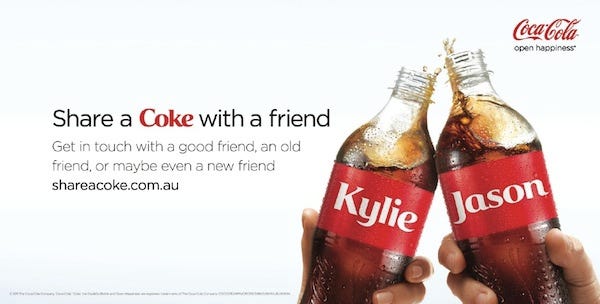
Branding Case Study : Success of Share A Coke Campaign 5 min read
The “Share a Coke” campaign is a globally recognized and highly successful marketing initiative that was first launched by The Coca-Cola Company in Australia in 2011. The campaign aimed to create a more personal and engaging connection between consumers and the Coca-Cola brand by replacing its iconic logo on bottles and cans with popular individual names. The concept behind the campaign was to encourage people to share a Coke with friends, family, and loved ones, thereby fostering a sense of community and happiness.
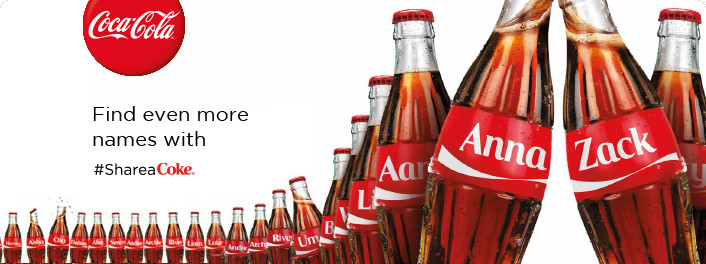
Concept and Objectives : The Share a Coke campaign was born out of the idea that personalization could enhance brand affinity and consumer engagement. The main objectives of the campaign were to:
a. Strengthen the emotional connection between consumers and the Coca-Cola brand.
b. Encourage social sharing and word-of-mouth promotion.
c. Generate buzz and excitement around the brand.
d. Increase sales and consumption of Coca-Cola products.
Research and Preparation : Before launching the campaign, Coca-Cola conducted extensive research to identify the most popular names in each country where the campaign would be implemented. They analyzed data from various sources, including birth records, social media profiles, and public databases, to ensure that the chosen names would resonate with a wide range of consumers.
Implementation: The campaign execution involved several key elements:
a. Customized Packaging : The traditional Coca-Cola logo was replaced on bottles and cans with 150 of the most popular Australian names. This approach made the product feel more personal and encouraged consumers to seek out their own names or the names of loved ones.
b. Digital Integration : A dedicated website and social media channels were created to allow consumers to search for specific names, create virtual Coke cans, and share personalized virtual bottles with friends. This digital integration helped extend the campaign’s reach and fostered user-generated content.
c. Experiential Marketing : Coca-Cola set up kiosks and pop-up events across Australia where consumers could personalize their own Coke bottles with names or phrases of their choice. This interactive experience further strengthened the connection between the brand and its consumers.
d. Integrated Advertising : The campaign was supported by an extensive advertising and marketing campaign that included television commercials, print ads, billboards, and online advertisements. These channels helped spread awareness and created a sense of excitement around the campaign.
Packaging Variations : In addition to individual names, Coca-Cola also introduced other variations in the packaging. Some bottles featured terms like “Bestie,” “Soulmate,” and “BFF,” allowing consumers to share a Coke with their closest friends or loved ones. This broadened the appeal of the campaign beyond just individual names.
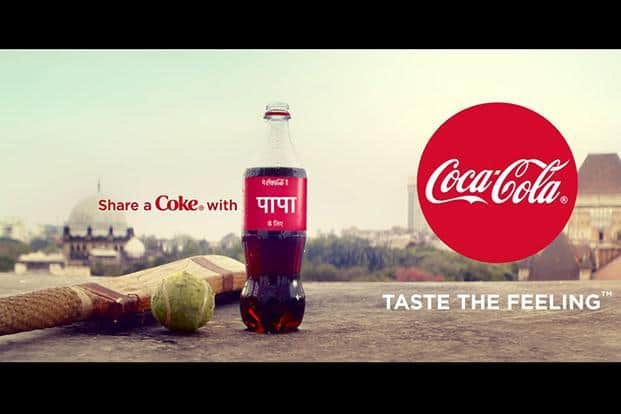
Localization and Expansion : Due to the overwhelming success of the campaign in Australia, Coca-Cola expanded the Share a Coke campaign to other countries. The localized versions of the campaign included translating names into local languages and incorporating culturally relevant names, thereby making the campaign more relatable and inclusive.
Social Media Engagement : One of the defining aspects of the Share a Coke campaign was its social media engagement strategy. Consumers were encouraged to share photos and stories related to the campaign using the hashtag #ShareACoke . This user-generated content not only amplified the reach of the campaign but also created a sense of community among consumers who were excited to see their names on Coke bottles.
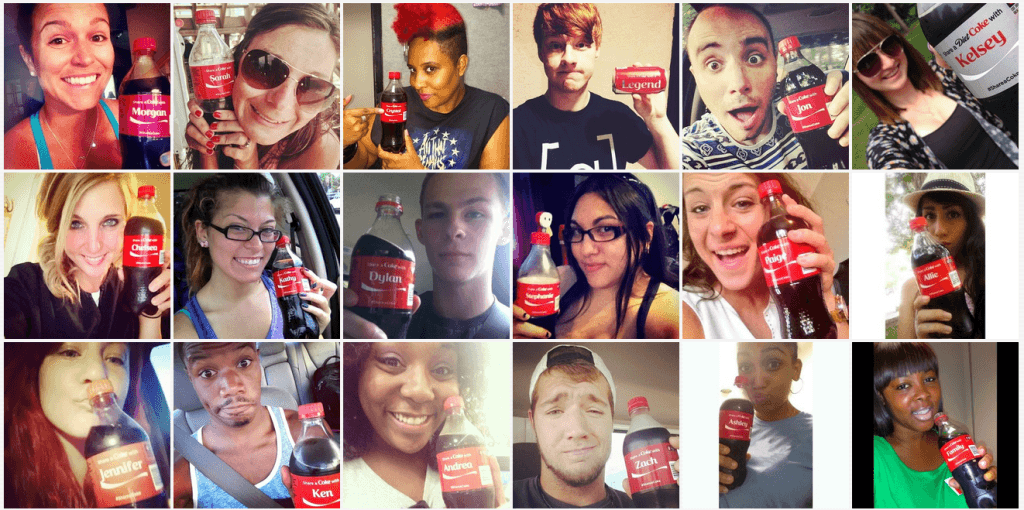
Influencer Partnerships : Coca-Cola collaborated with influential celebrities and social media influencers to promote the campaign. They shared personalized Coke bottles with their followers and encouraged them to participate by sharing their own experiences with the hashtag #ShareACoke. This strategy helped to amplify the reach of the campaign and create a sense of authenticity and endorsement.
Interactive Digital Campaign : The dedicated Share a Coke website allowed consumers to search for their names or the names of others, creating virtual customized Coke bottles that could be shared on social media. This interactive element encouraged consumer participation and engagement. The website also featured a live ticker displaying the most popular names being searched, further fueling interest and curiosity.
Results and Impact : The Share a Coke campaign had a profound impact on Coca-Cola’s brand perception and sales. The campaign generated significant media coverage, with millions of impressions on social media. It resulted in a 7% increase in Coca-Cola consumption in Australia, reversing a decade-long decline in sales. The campaign’s success led to its expansion in over 80 countries, contributing to a 2% global increase in Coke volume sales .
Also Read : US Coca-Cola – Persuading teens to ‘Share a Coke’
Global Impact and Cultural Adaptation : As the campaign expanded globally, Coca-Cola localized it to suit different cultures and languages. They adapted the names and phrases used on the bottles to ensure relevance and inclusivity. For example, in China, where family names come before given names, bottles displayed family names first, followed by given names.
Legacy and Evolution : Since its initial launch, the Share a Coke campaign has evolved and continued to engage consumers worldwide. The campaign has introduced new elements, such as last names, nicknames, and personalized labels for special occasions like weddings and holidays. It has become an annual tradition for Coca-Cola, capturing the imagination and enthusiasm of consumers globally.
Awards and Recognition : The Share a Coke campaign received widespread acclaim and numerous awards in the marketing and advertising industry. It won several prestigious accolades, including the Cannes Lions Grand Prix for Creative Effectiveness, which recognized its significant impact on brand perception and sales.
Limited Editions and Collectibles : To create further excitement and anticipation, Coca-Cola released limited edition bottles and cans featuring unique designs and themes. These special editions included sports teams, holidays, and commemorative events. Collectors and fans eagerly sought out these exclusive items, leading to increased engagement and sales.
In conclusion, the Share a Coke campaign revolutionized the way brands connect with consumers. By personalizing their products and encouraging social sharing, Coca-Cola successfully tapped into the desire for individuality and created a powerful emotional bond with its consumers. The campaign’s blend of personalization, experiential marketing, digital integration, and social media engagement resulted in a marketing phenomenon that continues to resonate with consumers and inspire other brands to create more personalized experiences.
Also Read: The Man Your Man Could Smell Like: A Case Study on Old Spice Branding Campaign
To read more content like this, subscribe to our newsletter

Leave a Reply Cancel reply
Your email address will not be published. Required fields are marked *
Save my name, email, and website in this browser for the next time I comment.
Related Posts
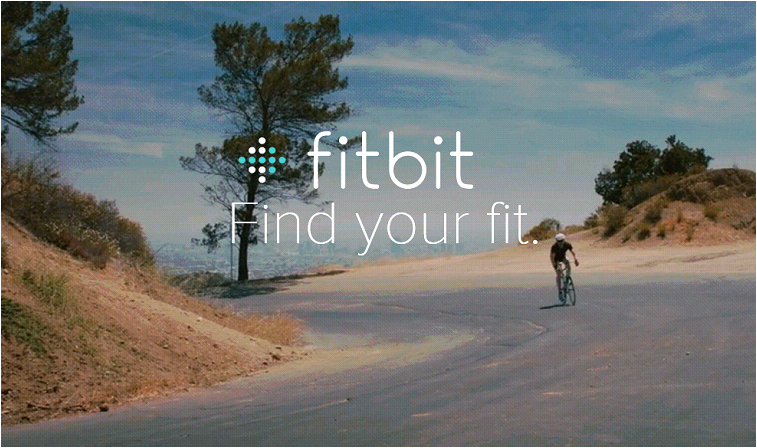
A Case Study on “Fitbit: Find Your Reason” Marketing Campaign
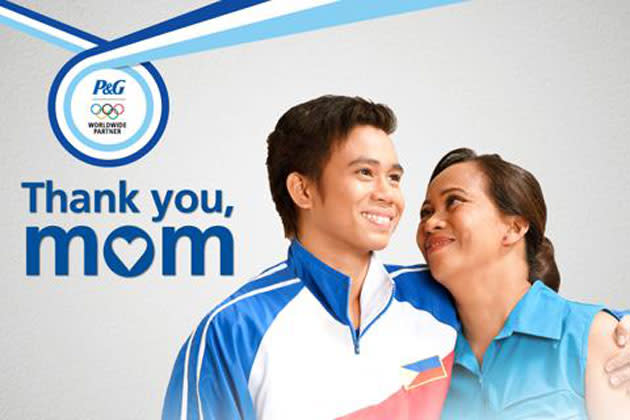
A Case Study on “P&G: Thank You, Mom” Brand Campaign
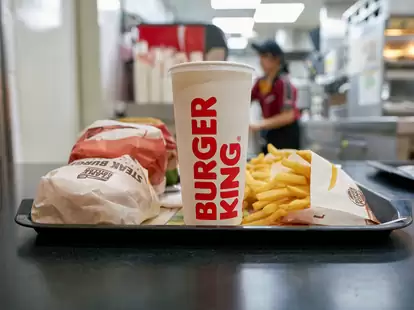
Case Study – Burger King: Subservient Chicken Brand Campaign
Terms and Conditions
Dr. John gradually sold his business in portions and before he died in 1888, Coca-Cola was finally sold to Asa G. Candler.
Starting from 9 servings in a day, now it serves around 1.9 billion drinks per day.
MARKETING STRATEGY OF COCA-COLA
Although every brand has its way of advertising its products, Coca-Cola has been one of the most recognizable brands now for over a century because the company first experiments with the strategy that it plans and then implements. For any strategy they make, customer satisfaction for the company comes first. Let’s discuss the widely used strategies in detail.
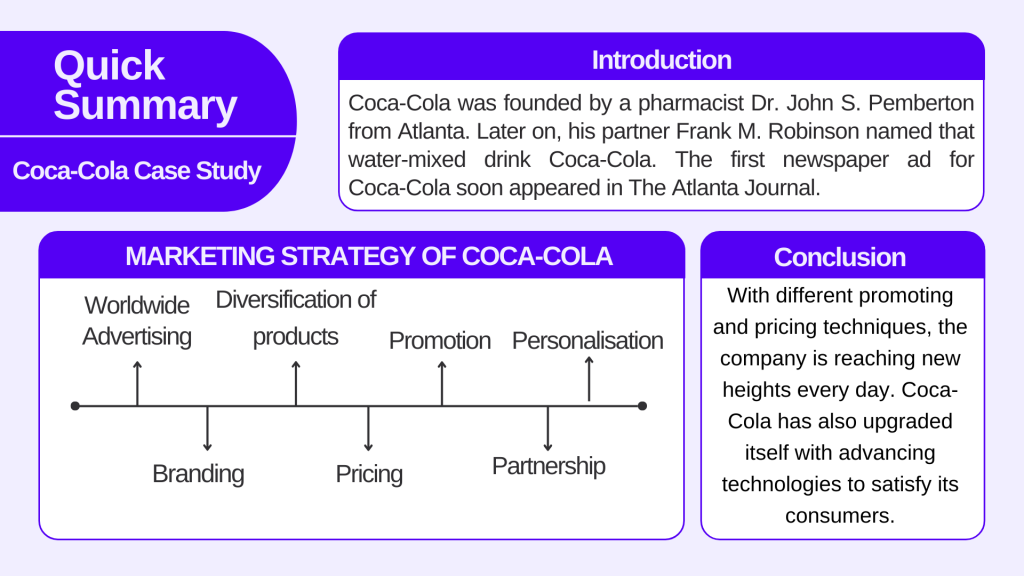
Worldwide Advertising

Coca-Cola every time comes up with a different and creative idea to advertise their product. At first, they analyse their global consumer base and their demands. For example, initially, coca-cola was sold through soda fountains but then two talented minds secured exclusive rights to selling coca cola in bottles. This eventually helped them to leave an imprint in their consumer’s minds since the bottles were sold globally and that too with labelling done in regional language.

Branding generally means how the consumers perceive the product visually i.e., identification of any product when first seen. Seems like Coca-Cola has already mastered the art of branding. The brand needs to maintain the logo that they are using and also update it from time to time as per the consumer’s taste and preferences. Coca-Cola did it so well by trademarking its logo.
Diversification of products
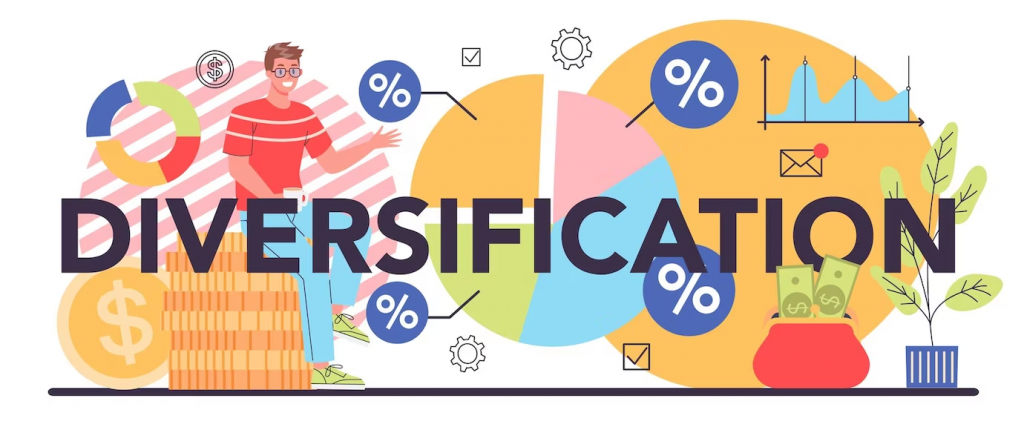
Coca-Cola does not limit itself after inventing one soft drink. They have expanded their bucket of products over the years. Some of the products of Coca-Cola are Sprite, Diet Coke etc. and companies like Maza and Fanta depended on Coca-Cola for their growth.
Pricing

With increasing recognition, more competitors came into the picture. Coca-Cola still kept their products cost-effective and maintained the quality of the product. This helped them in keeping their customers loyal and intact.
Promotion

Coca-Cola promoted its products through different advertising media such as newspapers, radio, television, billboards, banners, and magazine covers. The company also used artistic taglines like “Things go better with coke”.
Partnership

The company used partnerships as brand visibility to increase their market share and consumers. This helped them grow rapidly. Coca-Cola sponsored the Olympics, FIFA, Basketball tournaments and other reality shows such as American Idol. The company also bought various other businesses.
Personalisation

Coca-Cola always tries to connect with customers at a personal level.
Labelling their bottles in regional languages helped them increase their sales. They targeted their audience as per their age groups.
Secret of Coca-Cola’s Success
Before getting to any conclusion, you must know the secret of success for Coca-Cola’s marketing strategies. They follow a rule of 70:20:10 rule. As per this rule, 70% is the total allocation of the marketing budget of the coca-cola into their existing marketing strategies like Google ads and Facebook ads which are currently giving them good results, 20% is the allocation of the total marketing budget to the current trending marketing strategies like promoting their products on Instagram reels, YouTube shorts etc. remaining 10% they allocate into risky yet innovative marketing idea. Chances are likely that this 10% allocation will give them amazing results.
By now you must have an idea of how Coca-Cola has placed itself differently in the market even after facing tough competition from competitors since its establishment. With different promoting and pricing techniques, the company is reaching new heights every day. Coca-Cola has also upgraded itself with advancing technologies to satisfy its consumers.
To conclude the iconic brand COCA-COLA is still in every heart, no matter how many competitors enter the market. Their efforts of “THANDA MATLAB COCA-COLA” are irreplaceable.
FAQs (Frequently Asked Questions)
- When was Coca-Cola founded? Coca-cola was founded in the year 1886.
- Who founded Coca-Cola? Coca-Cola was founded by Atlanta’s John Pemberton.
- Is Coca-Cola an Indian brand? No, Coca-Cola is not an Indian brand. It is a USA-based brand.
- How was Coca-Cola sold in the initial days? Coca-Cola was sold through soda fountains initially.
- How many drinks are served per day now? 1.2 billion drinks of Coca-Cola are served every day now.
Related Posts

Larsen & Toubro Ltd Case Study: Business Model, Financials, KPIs, and SWOT Analysis
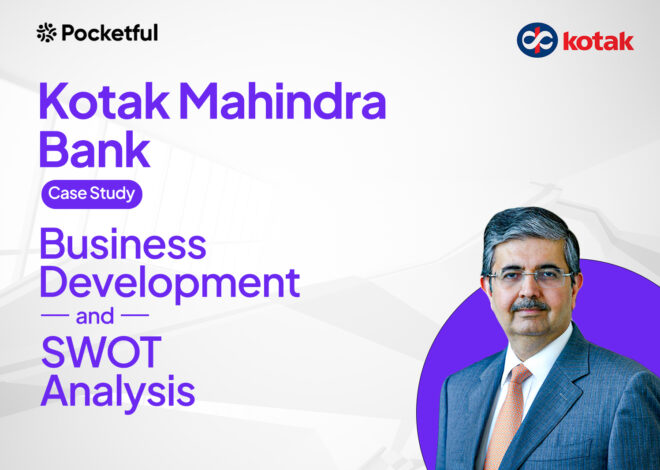
Kotak Mahindra Bank: Business Model and SWOT Analysis

Mahindra & Mahindra Case Study: Products, Financials, KPIs, and SWOT Analysis
We are a concern of pace group. pocketful is an investing platform that helps people be better investors. pocketful unlocks the discoverability of new investment and trading ideas., quick links.
- Open an Account
- Pocketful Web
- Pocketful App
- Investment Tool
- Trading Tool
- Support Portal
- Referral Program
- Calculators
- Stocks Pages
- Government Schemes
- Index Heat Map
- Stock Screener
- Mutual Funds
- Terms & Conditions
- Policies & Procedures
- Privacy Policy
- Press & Media
- Search Menu
- Browse content in Arts and Humanities
- Browse content in Archaeology
- Anglo-Saxon and Medieval Archaeology
- Archaeological Methodology and Techniques
- Archaeology by Region
- Archaeology of Religion
- Archaeology of Trade and Exchange
- Biblical Archaeology
- Contemporary and Public Archaeology
- Environmental Archaeology
- Historical Archaeology
- History and Theory of Archaeology
- Industrial Archaeology
- Landscape Archaeology
- Mortuary Archaeology
- Prehistoric Archaeology
- Underwater Archaeology
- Urban Archaeology
- Zooarchaeology
- Browse content in Architecture
- Architectural Structure and Design
- History of Architecture
- Residential and Domestic Buildings
- Theory of Architecture
- Browse content in Art
- Art Subjects and Themes
- History of Art
- Industrial and Commercial Art
- Theory of Art
- Biographical Studies
- Byzantine Studies
- Browse content in Classical Studies
- Classical History
- Classical Philosophy
- Classical Mythology
- Classical Literature
- Classical Reception
- Classical Art and Architecture
- Classical Oratory and Rhetoric
- Greek and Roman Epigraphy
- Greek and Roman Law
- Greek and Roman Papyrology
- Greek and Roman Archaeology
- Late Antiquity
- Religion in the Ancient World
- Digital Humanities
- Browse content in History
- Colonialism and Imperialism
- Diplomatic History
- Environmental History
- Genealogy, Heraldry, Names, and Honours
- Genocide and Ethnic Cleansing
- Historical Geography
- History by Period
- History of Emotions
- History of Agriculture
- History of Education
- History of Gender and Sexuality
- Industrial History
- Intellectual History
- International History
- Labour History
- Legal and Constitutional History
- Local and Family History
- Maritime History
- Military History
- National Liberation and Post-Colonialism
- Oral History
- Political History
- Public History
- Regional and National History
- Revolutions and Rebellions
- Slavery and Abolition of Slavery
- Social and Cultural History
- Theory, Methods, and Historiography
- Urban History
- World History
- Browse content in Language Teaching and Learning
- Language Learning (Specific Skills)
- Language Teaching Theory and Methods
- Browse content in Linguistics
- Applied Linguistics
- Cognitive Linguistics
- Computational Linguistics
- Forensic Linguistics
- Grammar, Syntax and Morphology
- Historical and Diachronic Linguistics
- History of English
- Language Acquisition
- Language Evolution
- Language Reference
- Language Variation
- Language Families
- Lexicography
- Linguistic Anthropology
- Linguistic Theories
- Linguistic Typology
- Phonetics and Phonology
- Psycholinguistics
- Sociolinguistics
- Translation and Interpretation
- Writing Systems
- Browse content in Literature
- Bibliography
- Children's Literature Studies
- Literary Studies (Asian)
- Literary Studies (European)
- Literary Studies (Eco-criticism)
- Literary Studies (Romanticism)
- Literary Studies (American)
- Literary Studies (Modernism)
- Literary Studies - World
- Literary Studies (1500 to 1800)
- Literary Studies (19th Century)
- Literary Studies (20th Century onwards)
- Literary Studies (African American Literature)
- Literary Studies (British and Irish)
- Literary Studies (Early and Medieval)
- Literary Studies (Fiction, Novelists, and Prose Writers)
- Literary Studies (Gender Studies)
- Literary Studies (Graphic Novels)
- Literary Studies (History of the Book)
- Literary Studies (Plays and Playwrights)
- Literary Studies (Poetry and Poets)
- Literary Studies (Postcolonial Literature)
- Literary Studies (Queer Studies)
- Literary Studies (Science Fiction)
- Literary Studies (Travel Literature)
- Literary Studies (War Literature)
- Literary Studies (Women's Writing)
- Literary Theory and Cultural Studies
- Mythology and Folklore
- Shakespeare Studies and Criticism
- Browse content in Media Studies
- Browse content in Music
- Applied Music
- Dance and Music
- Ethics in Music
- Ethnomusicology
- Gender and Sexuality in Music
- Medicine and Music
- Music Cultures
- Music and Religion
- Music and Media
- Music and Culture
- Music Education and Pedagogy
- Music Theory and Analysis
- Musical Scores, Lyrics, and Libretti
- Musical Structures, Styles, and Techniques
- Musicology and Music History
- Performance Practice and Studies
- Race and Ethnicity in Music
- Sound Studies
- Browse content in Performing Arts
- Browse content in Philosophy
- Aesthetics and Philosophy of Art
- Epistemology
- Feminist Philosophy
- History of Western Philosophy
- Metaphysics
- Moral Philosophy
- Non-Western Philosophy
- Philosophy of Science
- Philosophy of Language
- Philosophy of Mind
- Philosophy of Perception
- Philosophy of Action
- Philosophy of Law
- Philosophy of Religion
- Philosophy of Mathematics and Logic
- Practical Ethics
- Social and Political Philosophy
- Browse content in Religion
- Biblical Studies
- Christianity
- East Asian Religions
- History of Religion
- Judaism and Jewish Studies
- Qumran Studies
- Religion and Education
- Religion and Health
- Religion and Politics
- Religion and Science
- Religion and Law
- Religion and Art, Literature, and Music
- Religious Studies
- Browse content in Society and Culture
- Cookery, Food, and Drink
- Cultural Studies
- Customs and Traditions
- Ethical Issues and Debates
- Hobbies, Games, Arts and Crafts
- Lifestyle, Home, and Garden
- Natural world, Country Life, and Pets
- Popular Beliefs and Controversial Knowledge
- Sports and Outdoor Recreation
- Technology and Society
- Travel and Holiday
- Visual Culture
- Browse content in Law
- Arbitration
- Browse content in Company and Commercial Law
- Commercial Law
- Company Law
- Browse content in Comparative Law
- Systems of Law
- Competition Law
- Browse content in Constitutional and Administrative Law
- Government Powers
- Judicial Review
- Local Government Law
- Military and Defence Law
- Parliamentary and Legislative Practice
- Construction Law
- Contract Law
- Browse content in Criminal Law
- Criminal Procedure
- Criminal Evidence Law
- Sentencing and Punishment
- Employment and Labour Law
- Environment and Energy Law
- Browse content in Financial Law
- Banking Law
- Insolvency Law
- History of Law
- Human Rights and Immigration
- Intellectual Property Law
- Browse content in International Law
- Private International Law and Conflict of Laws
- Public International Law
- IT and Communications Law
- Jurisprudence and Philosophy of Law
- Law and Politics
- Law and Society
- Browse content in Legal System and Practice
- Courts and Procedure
- Legal Skills and Practice
- Primary Sources of Law
- Regulation of Legal Profession
- Medical and Healthcare Law
- Browse content in Policing
- Criminal Investigation and Detection
- Police and Security Services
- Police Procedure and Law
- Police Regional Planning
- Browse content in Property Law
- Personal Property Law
- Study and Revision
- Terrorism and National Security Law
- Browse content in Trusts Law
- Wills and Probate or Succession
- Browse content in Medicine and Health
- Browse content in Allied Health Professions
- Arts Therapies
- Clinical Science
- Dietetics and Nutrition
- Occupational Therapy
- Operating Department Practice
- Physiotherapy
- Radiography
- Speech and Language Therapy
- Browse content in Anaesthetics
- General Anaesthesia
- Neuroanaesthesia
- Browse content in Clinical Medicine
- Acute Medicine
- Cardiovascular Medicine
- Clinical Genetics
- Clinical Pharmacology and Therapeutics
- Dermatology
- Endocrinology and Diabetes
- Gastroenterology
- Genito-urinary Medicine
- Geriatric Medicine
- Infectious Diseases
- Medical Toxicology
- Medical Oncology
- Pain Medicine
- Palliative Medicine
- Rehabilitation Medicine
- Respiratory Medicine and Pulmonology
- Rheumatology
- Sleep Medicine
- Sports and Exercise Medicine
- Clinical Neuroscience
- Community Medical Services
- Critical Care
- Emergency Medicine
- Forensic Medicine
- Haematology
- History of Medicine
- Browse content in Medical Dentistry
- Oral and Maxillofacial Surgery
- Paediatric Dentistry
- Restorative Dentistry and Orthodontics
- Surgical Dentistry
- Browse content in Medical Skills
- Clinical Skills
- Communication Skills
- Nursing Skills
- Surgical Skills
- Medical Ethics
- Medical Statistics and Methodology
- Browse content in Neurology
- Clinical Neurophysiology
- Neuropathology
- Nursing Studies
- Browse content in Obstetrics and Gynaecology
- Gynaecology
- Occupational Medicine
- Ophthalmology
- Otolaryngology (ENT)
- Browse content in Paediatrics
- Neonatology
- Browse content in Pathology
- Chemical Pathology
- Clinical Cytogenetics and Molecular Genetics
- Histopathology
- Medical Microbiology and Virology
- Patient Education and Information
- Browse content in Pharmacology
- Psychopharmacology
- Browse content in Popular Health
- Caring for Others
- Complementary and Alternative Medicine
- Self-help and Personal Development
- Browse content in Preclinical Medicine
- Cell Biology
- Molecular Biology and Genetics
- Reproduction, Growth and Development
- Primary Care
- Professional Development in Medicine
- Browse content in Psychiatry
- Addiction Medicine
- Child and Adolescent Psychiatry
- Forensic Psychiatry
- Learning Disabilities
- Old Age Psychiatry
- Psychotherapy
- Browse content in Public Health and Epidemiology
- Epidemiology
- Public Health
- Browse content in Radiology
- Clinical Radiology
- Interventional Radiology
- Nuclear Medicine
- Radiation Oncology
- Reproductive Medicine
- Browse content in Surgery
- Cardiothoracic Surgery
- Gastro-intestinal and Colorectal Surgery
- General Surgery
- Neurosurgery
- Paediatric Surgery
- Peri-operative Care
- Plastic and Reconstructive Surgery
- Surgical Oncology
- Transplant Surgery
- Trauma and Orthopaedic Surgery
- Vascular Surgery
- Browse content in Science and Mathematics
- Browse content in Biological Sciences
- Aquatic Biology
- Biochemistry
- Bioinformatics and Computational Biology
- Developmental Biology
- Ecology and Conservation
- Evolutionary Biology
- Genetics and Genomics
- Microbiology
- Molecular and Cell Biology
- Natural History
- Plant Sciences and Forestry
- Research Methods in Life Sciences
- Structural Biology
- Systems Biology
- Zoology and Animal Sciences
- Browse content in Chemistry
- Analytical Chemistry
- Computational Chemistry
- Crystallography
- Environmental Chemistry
- Industrial Chemistry
- Inorganic Chemistry
- Materials Chemistry
- Medicinal Chemistry
- Mineralogy and Gems
- Organic Chemistry
- Physical Chemistry
- Polymer Chemistry
- Study and Communication Skills in Chemistry
- Theoretical Chemistry
- Browse content in Computer Science
- Artificial Intelligence
- Computer Architecture and Logic Design
- Game Studies
- Human-Computer Interaction
- Mathematical Theory of Computation
- Programming Languages
- Software Engineering
- Systems Analysis and Design
- Virtual Reality
- Browse content in Computing
- Business Applications
- Computer Security
- Computer Games
- Computer Networking and Communications
- Digital Lifestyle
- Graphical and Digital Media Applications
- Operating Systems
- Browse content in Earth Sciences and Geography
- Atmospheric Sciences
- Environmental Geography
- Geology and the Lithosphere
- Maps and Map-making
- Meteorology and Climatology
- Oceanography and Hydrology
- Palaeontology
- Physical Geography and Topography
- Regional Geography
- Soil Science
- Urban Geography
- Browse content in Engineering and Technology
- Agriculture and Farming
- Biological Engineering
- Civil Engineering, Surveying, and Building
- Electronics and Communications Engineering
- Energy Technology
- Engineering (General)
- Environmental Science, Engineering, and Technology
- History of Engineering and Technology
- Mechanical Engineering and Materials
- Technology of Industrial Chemistry
- Transport Technology and Trades
- Browse content in Environmental Science
- Applied Ecology (Environmental Science)
- Conservation of the Environment (Environmental Science)
- Environmental Sustainability
- Environmentalist Thought and Ideology (Environmental Science)
- Management of Land and Natural Resources (Environmental Science)
- Natural Disasters (Environmental Science)
- Nuclear Issues (Environmental Science)
- Pollution and Threats to the Environment (Environmental Science)
- Social Impact of Environmental Issues (Environmental Science)
- History of Science and Technology
- Browse content in Materials Science
- Ceramics and Glasses
- Composite Materials
- Metals, Alloying, and Corrosion
- Nanotechnology
- Browse content in Mathematics
- Applied Mathematics
- Biomathematics and Statistics
- History of Mathematics
- Mathematical Education
- Mathematical Finance
- Mathematical Analysis
- Numerical and Computational Mathematics
- Probability and Statistics
- Pure Mathematics
- Browse content in Neuroscience
- Cognition and Behavioural Neuroscience
- Development of the Nervous System
- Disorders of the Nervous System
- History of Neuroscience
- Invertebrate Neurobiology
- Molecular and Cellular Systems
- Neuroendocrinology and Autonomic Nervous System
- Neuroscientific Techniques
- Sensory and Motor Systems
- Browse content in Physics
- Astronomy and Astrophysics
- Atomic, Molecular, and Optical Physics
- Biological and Medical Physics
- Classical Mechanics
- Computational Physics
- Condensed Matter Physics
- Electromagnetism, Optics, and Acoustics
- History of Physics
- Mathematical and Statistical Physics
- Measurement Science
- Nuclear Physics
- Particles and Fields
- Plasma Physics
- Quantum Physics
- Relativity and Gravitation
- Semiconductor and Mesoscopic Physics
- Browse content in Psychology
- Affective Sciences
- Clinical Psychology
- Cognitive Psychology
- Cognitive Neuroscience
- Criminal and Forensic Psychology
- Developmental Psychology
- Educational Psychology
- Evolutionary Psychology
- Health Psychology
- History and Systems in Psychology
- Music Psychology
- Neuropsychology
- Organizational Psychology
- Psychological Assessment and Testing
- Psychology of Human-Technology Interaction
- Psychology Professional Development and Training
- Research Methods in Psychology
- Social Psychology
- Browse content in Social Sciences
- Browse content in Anthropology
- Anthropology of Religion
- Human Evolution
- Medical Anthropology
- Physical Anthropology
- Regional Anthropology
- Social and Cultural Anthropology
- Theory and Practice of Anthropology
- Browse content in Business and Management
- Business Strategy
- Business Ethics
- Business History
- Business and Government
- Business and Technology
- Business and the Environment
- Comparative Management
- Corporate Governance
- Corporate Social Responsibility
- Entrepreneurship
- Health Management
- Human Resource Management
- Industrial and Employment Relations
- Industry Studies
- Information and Communication Technologies
- International Business
- Knowledge Management
- Management and Management Techniques
- Operations Management
- Organizational Theory and Behaviour
- Pensions and Pension Management
- Public and Nonprofit Management
- Strategic Management
- Supply Chain Management
- Browse content in Criminology and Criminal Justice
- Criminal Justice
- Criminology
- Forms of Crime
- International and Comparative Criminology
- Youth Violence and Juvenile Justice
- Development Studies
- Browse content in Economics
- Agricultural, Environmental, and Natural Resource Economics
- Asian Economics
- Behavioural Finance
- Behavioural Economics and Neuroeconomics
- Econometrics and Mathematical Economics
- Economic Systems
- Economic History
- Economic Methodology
- Economic Development and Growth
- Financial Markets
- Financial Institutions and Services
- General Economics and Teaching
- Health, Education, and Welfare
- History of Economic Thought
- International Economics
- Labour and Demographic Economics
- Law and Economics
- Macroeconomics and Monetary Economics
- Microeconomics
- Public Economics
- Urban, Rural, and Regional Economics
- Welfare Economics
- Browse content in Education
- Adult Education and Continuous Learning
- Care and Counselling of Students
- Early Childhood and Elementary Education
- Educational Equipment and Technology
- Educational Strategies and Policy
- Higher and Further Education
- Organization and Management of Education
- Philosophy and Theory of Education
- Schools Studies
- Secondary Education
- Teaching of a Specific Subject
- Teaching of Specific Groups and Special Educational Needs
- Teaching Skills and Techniques
- Browse content in Environment
- Applied Ecology (Social Science)
- Climate Change
- Conservation of the Environment (Social Science)
- Environmentalist Thought and Ideology (Social Science)
- Natural Disasters (Environment)
- Social Impact of Environmental Issues (Social Science)
- Browse content in Human Geography
- Cultural Geography
- Economic Geography
- Political Geography
- Browse content in Interdisciplinary Studies
- Communication Studies
- Museums, Libraries, and Information Sciences
- Browse content in Politics
- African Politics
- Asian Politics
- Chinese Politics
- Comparative Politics
- Conflict Politics
- Elections and Electoral Studies
- Environmental Politics
- European Union
- Foreign Policy
- Gender and Politics
- Human Rights and Politics
- Indian Politics
- International Relations
- International Organization (Politics)
- International Political Economy
- Irish Politics
- Latin American Politics
- Middle Eastern Politics
- Political Methodology
- Political Communication
- Political Philosophy
- Political Sociology
- Political Behaviour
- Political Economy
- Political Institutions
- Political Theory
- Politics and Law
- Public Administration
- Public Policy
- Quantitative Political Methodology
- Regional Political Studies
- Russian Politics
- Security Studies
- State and Local Government
- UK Politics
- US Politics
- Browse content in Regional and Area Studies
- African Studies
- Asian Studies
- East Asian Studies
- Japanese Studies
- Latin American Studies
- Middle Eastern Studies
- Native American Studies
- Scottish Studies
- Browse content in Research and Information
- Research Methods
- Browse content in Social Work
- Addictions and Substance Misuse
- Adoption and Fostering
- Care of the Elderly
- Child and Adolescent Social Work
- Couple and Family Social Work
- Developmental and Physical Disabilities Social Work
- Direct Practice and Clinical Social Work
- Emergency Services
- Human Behaviour and the Social Environment
- International and Global Issues in Social Work
- Mental and Behavioural Health
- Social Justice and Human Rights
- Social Policy and Advocacy
- Social Work and Crime and Justice
- Social Work Macro Practice
- Social Work Practice Settings
- Social Work Research and Evidence-based Practice
- Welfare and Benefit Systems
- Browse content in Sociology
- Childhood Studies
- Community Development
- Comparative and Historical Sociology
- Economic Sociology
- Gender and Sexuality
- Gerontology and Ageing
- Health, Illness, and Medicine
- Marriage and the Family
- Migration Studies
- Occupations, Professions, and Work
- Organizations
- Population and Demography
- Race and Ethnicity
- Social Theory
- Social Movements and Social Change
- Social Research and Statistics
- Social Stratification, Inequality, and Mobility
- Sociology of Religion
- Sociology of Education
- Sport and Leisure
- Urban and Rural Studies
- Browse content in Warfare and Defence
- Defence Strategy, Planning, and Research
- Land Forces and Warfare
- Military Administration
- Military Life and Institutions
- Naval Forces and Warfare
- Other Warfare and Defence Issues
- Peace Studies and Conflict Resolution
- Weapons and Equipment

- < Previous chapter
- Next chapter >

16 Coca-Cola: ‘Taste the Controversy’: A Case Study on Marketing Challenges
- Published: June 2022
- Cite Icon Cite
- Permissions Icon Permissions
The not so lucky situations and criticism of the Coca-Cola brand come from its first-ever product. As the history from many sources says, Dr John Smith-Pemberton, Coca-Cola creator, fought in the Civil War, and had some injuries. He made a special formula in order to help him deal with the constant pain in his body: the Pemberton’s French Wine Coca which also had a great taste at the time, had alcohol in it. It quickly became very popular until a vote by the state legislature Atlanta and Fulton County in favour of the national temperance movement. The national temperance movement prohibited the use of alcohol and heavily criticized medicinal wine such as French Wine Coca. Pemberton was forced to drop the wine ingredient in his French Wine Coca. After some further experimenting, he decided on the use of sugar syrup as a substitution for the wine and that is when Coca-Cola was born. He invented many drugs, but none of them ever made any money. So, after a move to Atlanta, Pemberton decided to try his hand in the beverage market. In his time, the soda fountain was rising in popularity as a social gathering spot. Temperance was keeping patrons out of bars, so making a soda-fountain drink just made sense. And this was when Coca-Cola was born.
Signed in as
Institutional accounts.
- GoogleCrawler [DO NOT DELETE]
- Google Scholar Indexing
Personal account
- Sign in with email/username & password
- Get email alerts
- Save searches
- Purchase content
- Activate your purchase/trial code
Institutional access
- Sign in with a library card Sign in with username/password Recommend to your librarian
- Institutional account management
- Get help with access
Access to content on Oxford Academic is often provided through institutional subscriptions and purchases. If you are a member of an institution with an active account, you may be able to access content in one of the following ways:
IP based access
Typically, access is provided across an institutional network to a range of IP addresses. This authentication occurs automatically, and it is not possible to sign out of an IP authenticated account.
Sign in through your institution
Choose this option to get remote access when outside your institution. Shibboleth/Open Athens technology is used to provide single sign-on between your institution’s website and Oxford Academic.
- Click Sign in through your institution.
- Select your institution from the list provided, which will take you to your institution's website to sign in.
- When on the institution site, please use the credentials provided by your institution. Do not use an Oxford Academic personal account.
- Following successful sign in, you will be returned to Oxford Academic.
If your institution is not listed or you cannot sign in to your institution’s website, please contact your librarian or administrator.
Sign in with a library card
Enter your library card number to sign in. If you cannot sign in, please contact your librarian.
Society Members
Society member access to a journal is achieved in one of the following ways:
Sign in through society site
Many societies offer single sign-on between the society website and Oxford Academic. If you see ‘Sign in through society site’ in the sign in pane within a journal:
- Click Sign in through society site.
- When on the society site, please use the credentials provided by that society. Do not use an Oxford Academic personal account.
If you do not have a society account or have forgotten your username or password, please contact your society.
Sign in using a personal account
Some societies use Oxford Academic personal accounts to provide access to their members. See below.
A personal account can be used to get email alerts, save searches, purchase content, and activate subscriptions.
Some societies use Oxford Academic personal accounts to provide access to their members.
Viewing your signed in accounts
Click the account icon in the top right to:
- View your signed in personal account and access account management features.
- View the institutional accounts that are providing access.
Signed in but can't access content
Oxford Academic is home to a wide variety of products. The institutional subscription may not cover the content that you are trying to access. If you believe you should have access to that content, please contact your librarian.
For librarians and administrators, your personal account also provides access to institutional account management. Here you will find options to view and activate subscriptions, manage institutional settings and access options, access usage statistics, and more.
Our books are available by subscription or purchase to libraries and institutions.
- About Oxford Academic
- Publish journals with us
- University press partners
- What we publish
- New features
- Open access
- Rights and permissions
- Accessibility
- Advertising
- Media enquiries
- Oxford University Press
- Oxford Languages
- University of Oxford
Oxford University Press is a department of the University of Oxford. It furthers the University's objective of excellence in research, scholarship, and education by publishing worldwide
- Copyright © 2024 Oxford University Press
- Cookie settings
- Cookie policy
- Privacy policy
- Legal notice
This Feature Is Available To Subscribers Only
Sign In or Create an Account
This PDF is available to Subscribers Only
For full access to this pdf, sign in to an existing account, or purchase an annual subscription.
Research on Emotional Marketing Based on the Case Study of Coca-Cola
- Conference paper
- First Online: 27 September 2022
- Cite this conference paper

- Weichen Gao 7
Part of the book series: Applied Economics and Policy Studies ((AEPS))
Included in the following conference series:
- International Conference on Business and Policy Studies
1438 Accesses
Indeed, due to the rapid advances of the times and the development of the Internet, the way in which marketing is addressed today has changed and consumers have the opportunity to “generate” their own information about products and brands, as well as to spread and share it through copying, browsing and etc. Consumers 'purchasing decisions are more susceptible, as the increase in ways of gaining and generating multitudinous information and some might be deceptive—because of the decreasing cost of sharing, the content and quality of consumer-generated marketing messages are becoming increasingly difficult to control as a result. Emotion acts as one of the factors contributing to changes in behaviors and actions, has been widely studied in the past few decades [ 9 ]. Realistically, the marketing messages that are spread by consumers seem to share a common characteristic of trying to achieve communication by evoking emotional resonance in consumers. We found that emotion will not only help to explore and reveal the relationship between the emotionality of the message content and the sharing behavior but also provides more valuable and relevant suggestions and insights for enterprises to carry out new media marketing, as it distinguishes marketing messages from ordinary messages [ 2 ].
This is a preview of subscription content, log in via an institution to check access.
Access this chapter
- Available as PDF
- Read on any device
- Instant download
- Own it forever
- Available as EPUB and PDF
- Compact, lightweight edition
- Dispatched in 3 to 5 business days
- Free shipping worldwide - see info
- Durable hardcover edition
Tax calculation will be finalised at checkout
Purchases are for personal use only
Institutional subscriptions
Babin, B., Darden, W., University, L., Shreveport, L., Babin, L.: Negative emotions in marketing research. J. Bus. Res. 42 (3), 271–285 (1998). https://www.sciencedirect.com/science/article/pii/S0148296397001240 . Accessed 1 May 2021
Berger, J.: Contagious, pp. 112–146. Simon & Schuster Paperbacks, New York (2016)
Google Scholar
Berger, J., Schwartz, E.: What drives immediate and ongoing word of mouth? J. Market. Res. 48 (5), 869–880 (2011). https://doi.org/10.1509/jmkr.48.5.869 . Accessed 1 May 2021
Berger, J., Milkman, K.: Emotion and virality: what makes online content go viral? GfK Mark. Intell. Rev. 5 (1), 18–23 (2013). https://www.researchgate.net/publication/345698319_Emotion_and_Virality_What_Makes_Online_Content_Go_Viral . Accessed 2 May 2021
Coca-Cola (2016). Share a Coke, Share a Feeling [video]. Accessed 8 May 2021
Coca Cola Cases. https://cocacolabranding.wordpress.com/emotionalbranding-strategy-how-to-apply/ . Accessed 9 May 2021
Consoli, D.: A new concept of marketing: the emotional marketing. BRAND. Broad Res. Account. Negot. Distrib. 1 (1), 1–8 (2010). https://www.edusoft.ro/brain/index.php/brand/article/view/76/170 . Accessed 8 May 2021
Forgas, J., George, J.: Affective influences on judgments and behavior in organizations: an information processing perspective. Organ. Behav. Human Decis. Process. 86 (1), 3–34 (2001). https://www.sciencedirect.com/science/article/pii/S0749597801929711 . Accessed 1 May 2021
Gaur, S., Herjanto, H., Makkar, M.: Review of emotions research in marketing, 2002–2013. J. Retail. Consum. Serv. 21 (6), 917–923 (2014). https://www.sciencedirect.com/science/article/pii/S0969698914001179 . Accessed 1 May 2021
Grundey, D.: Experiential marketing vs. traditional marketing: creating rational and emotional liaisons with consumers. Romanian Econ. J. 11 (29), 133–151 (2008). http://citeseerx.ist.psu.edu/viewdoc/download?doi=10.1.1.190.7028&rep=rep1&type=pdf . Accessed 10 May 2021
Hatfield, E., Cacioppo, J., Rapson, R.: Emotional contagion. Current Direct. Psychol. Sci. 2 (3), 96–100 (1993). https://doi.org/10.1111/1467-8721.ep10770953 . Accessed 4 May 2021
Howard, D., Gengler, C.: Emotional contagion effects on product attitudes. J. Consum. Res. 28 (2), 189–201 (2001). https://academic.oup.com/jcr/article/28/2/189/1899159 . Accessed 4 May 2021
Kissler, J., Herbert, C., Peyk, P., Junghofer, M.: Buzzwords: early cortical responses to emotional words during reading. Psychol. Sci. 18 (6), 475–480 (2007). https://doi.org/10.1111/j.1467-9280.2007.01924.x . Accessed 2 May 2021
Lamelas, J.: Marketing: The Heart and the Brain of Branding, pp.115–124 (2018)
Lang, P., Levin, D., Miller, G., Kozak, M.: Fear behavior, fear imagery, and the psychophysiology of emotion: the problem of affective response integration. J. Abnormal Psychol. 92 (3), 276–306 (1983). https://psycnet.apa.org/record/1983-32159-001 . Accessed 4 May 2021
Liu, J., Li, C., Ji, Y., North, M., Yang, F.: Like it or not: the fortune 500's Facebook strategies to generate users’ electronic word-of-mouth. Comput. Human Behav. 73 , 605–613. https://www.sciencedirect.com/science/article/pii/S0747563217302285?via%3Dihub . Accessed 11 May 2021
O’Shaughnessy, J., O’Shaughnessy, N.: The Marketing Power of Emotion, pp. 1–24. Oxford University Press, Oxford (2003)
Peters, K., Kashima, Y., Clark, A.: Talking about others: emotionality and the dissemination of social information. Eur. J. Soc. Psychol. 39 (2), 207–222 (2009). https://www.researchgate.net/publication/229610591_Talking_about_others_Emotionality_and_the_dissemination_of_social_information . Accessed 5 May 2021
Penz, E., Hogg, M.: The role of mixed emotions in consumer behaviour. Eur. J. Mark. 45 (1/2), 104–132 (2011). https://www.researchgate.net/publication/231520686_The_role_of_mixed_emotions_in_consumer_behaviour_Investigating_ambivalence_in_consumers%27_experiences_of_approach-avoidance_conflicts_in_online_and_offline_settings . Accessed 11 May 2021
Plutchik, R., Kellerman, H.: Emotion: Theory, Research, and Experience: Chapter 14 A Structural Model of Emotion and Personality: Psychoanalytic and Sociobiological Implications. Academic Press, New York (1980)
Podoynitsyna, K., Van der Bij, H., Song, M.: The role of mixed emotions in the risk perception of novice and serial entrepreneurs. Entrepreneursh. Theory Pract. 36 (1), 115–140 (2012). https://doi.org/10.1111/j.1540-6520.2011.00476.x . Accessed 11 May 2021
Hill, R.P., Mazis, M.B.: Measuring emotional responses to advertising. In: Lutz, R.J., Provo, U.T. (eds.) NA - Advances in Consumer Research, vol. 13, pp. 164–169. Association for Consumer Research (1986)
Schachter, S., Singer, J.: Cognitive, social, and physiological determinants of emotional state: erratum. Psychol. Rev. 70 (1), 121–122 (1963). https://psycnet.apa.org/record/1963-06064-001 . Accessed 4 May 2021
Shaver, P., Schwartz, J., Kirson, D., O'Connor, C.: Emotion knowledge: further exploration of a prototype approach. J. Personal. Soc. Psychol. 52 (6), 1061–1086 (1987). https://psycnet.apa.org/record/1987-28161-001 . Accessed 4 May 2021
Taylor, R.: Marketing strategies: gaining a competitive advantage through the use of emotion. Competitiv. Rev. 10 (2), 146–152 (2000). https://doi.org/10.1108/eb046407/full/html . Accessed 7 May 2021
Tracy, J., Randles, D.: Four models of basic emotions: a review of Ekman and Cordaro, Izard, Levenson, and Panksepp and Watt. Emotion Rev. 3 (4), 397–405 (2011). https://doi.org/10.1177/1754073911410747 . Accessed 3 May 2021
Vaish, A., Grossmann, T., Woodward, A.: Not all emotions are created equal: the negativity bias in social-emotional development. Psychol. Bull. 134 (3), 383–403 (2008). https://psycnet.apa.org/record/2008-04614-002?CheckAccess=1 . Accessed 5 May 2021
Zemack-Rugar, Y., Bettman, J., Fitzsimons, G.: The effects of nonconsciously priming emotion concepts on behavior. J. Personal. Soc. Psychol. 93 (6), 927–939 (2007). https://psycnet.apa.org/record/2007-17941-002?CheckAccess=1 . Accessed 5 May 2021
Zhu, H., Zhang, X.: Emotional marketing: How do soft drink bottle ads resonate with audiences? In: Business Cases-Sales & Marketing - Management Edition, pp.78–81 (2018)
Download references
Author information
Authors and affiliations.
University of St Andrews, College Gate, St Andrews, KY16 9AJ, UK
Weichen Gao
You can also search for this author in PubMed Google Scholar
Corresponding author
Correspondence to Weichen Gao .
Editor information
Editors and affiliations.
Department of Postal Management, Beijing University of Posts and Telecommunications, Beijing, China
Xiaolong Li
School of Economics and Management, Beijing University of Posts and Telecommunications, Beijing, China
Chunhui Yuan
Queen Mary University of London, London, UK
Ivoslav Ganchev
Rights and permissions
Reprints and permissions
Copyright information
© 2022 The Author(s), under exclusive license to Springer Nature Singapore Pte Ltd.
About this paper
Cite this paper.
Gao, W. (2022). Research on Emotional Marketing Based on the Case Study of Coca-Cola. In: Li, X., Yuan, C., Ganchev, I. (eds) Proceedings of the 2022 International Conference on Business and Policy Studies. CONF-BPS 2022. Applied Economics and Policy Studies. Springer, Singapore. https://doi.org/10.1007/978-981-19-5727-7_30
Download citation
DOI : https://doi.org/10.1007/978-981-19-5727-7_30
Published : 27 September 2022
Publisher Name : Springer, Singapore
Print ISBN : 978-981-19-5726-0
Online ISBN : 978-981-19-5727-7
eBook Packages : Economics and Finance Economics and Finance (R0)
Share this paper
Anyone you share the following link with will be able to read this content:
Sorry, a shareable link is not currently available for this article.
Provided by the Springer Nature SharedIt content-sharing initiative
- Publish with us
Policies and ethics
- Find a journal
- Track your research
Why Coca-Cola's bold new logo campaign was both uncomfortable and rewarding for the brand
"Loose, twisted, audacious, unofficial."

The Coca-Cola logo is one of the most recognisable designs in the world, but it certainly isn't one of the simplest. While many of the best logos are clean, minimal affairs, the Coca-Cola wordmark is a flowing, cursive delight. Which means it isn't the easiest design to replicate.
In a wholesome new campaign, Coca-Cola is embracing the imperfection of recreated Coca-Cola logos from across the world – and it's even slapping some of the dupes on the cans themselves. (If you're looking for more design inspiration, check out the best cursive fonts .)
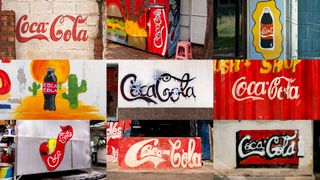
Created with ad agency VML , the "Every Coca-Cola is welcome" campaign has seen the brand adopt impressionistic hand-drawn signs at shops and bars all over the world as its own.
In an interview with Little Black Book , Coca-Cola's global vice president Islam ElDessouky, a self-proclaimed "‘hardcore guideline person", explained how the campaign was both occasionally uncomfortable and ultimately rewarding. "There are two values that are super solid in the brand foundation," he told the publication. "One is inclusion - I think Coca-Cola prides itself on being for everyone... the second value is authenticity."
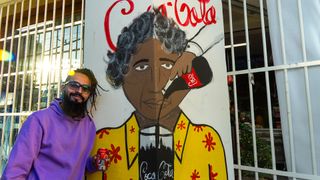
But the campaign doesn't mark a total throwing out of the rulebook. "To be very honest, brands are built on standards, guidelines and consistency.... So yes, we’re very positive and feeling super human and embracing all of those versions that are out there. But at the same time it doesn’t mean that we’re saying ‘bye guidelines, bye consistency, just do as you please, guys’. No, that’s not the case at all. We’ve still got to push for our guidelines, we’ve still got to push for our red colour, for our spencerian, because that’s what defines us. But, at the same time, from a human perspective, we just wanted to embrace those mom-and-pops out there.”
But perhaps the most notable thing is that, while certainly amateur in appearance, these handmade Coca-Cola logos are instantly recognisable. Because as history has proven, even the most iconic logos can be difficult to draw from memory .
Get the Creative Bloq Newsletter
Daily design news, reviews, how-tos and more, as picked by the editors.
Thank you for reading 5 articles this month* Join now for unlimited access
Enjoy your first month for just £1 / $1 / €1
*Read 5 free articles per month without a subscription
Join now for unlimited access
Try first month for just £1 / $1 / €1

Daniel John is Senior News Editor at Creative Bloq. He reports on the worlds of art, design, branding and lifestyle tech (which often translates to tech made by Apple). He joined in 2020 after working in copywriting and digital marketing with brands including ITV, NBC, Channel 4 and more.
Related articles
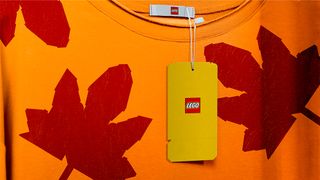

- Customer Experience
- Digital Experience
- Employee Experience
- Partner Experience
- Business Process
- Business Model
- Design Thinking
- Loyalty Strategy
- Value Proposition
- Buyer Persona
Customer Journey
Marketing Automation
- Account Based Marketing
Growth Driven Design
Inbound Marketing
Customer Relationship Management
- eCommerce B2C
- eCommerce B2B
- Adobe Experience Manager
- HubSpot CRM
- Liferay Portal
- Magento Commerce
- Marketo Marketing Automation
- Salesforce CRM
- Tableau Analytics
- Red Hat BPM
- CX Insights
- English - United States

Case study: How does Coca-Cola do it in the digital world?
Coca-Cola is undoubtedly one of the most recognized brands in the world, with a market presence that dates back to its beginnings in 1886 when John Pemberton served the first Coca-Cola. Today, the Coca-Cola Company sells hundreds of beverage brands in more than 200 countries. It is calculated that the average person consumes approximately 275 cans of Coca-Cola annually in the United States alone.
- The digital challenge for Coca-Cola and the "Share a Coke" campaign is a success story.
- The digital challenge for Coca-Cola.

The digital challenge for Coca-Cola
The challenge for companies like Coca-Cola is that their products' brand presence and positioning are no longer the main issues; instead, they look at marketing strategies oriented toward connection, loyalty, and innovation with their consumers. All this is what James Sommerville, VP of Global Design of Coca-Cola Company, commented for Adobe Summit: We are a 130+-year-old brand that has always been in the experience business. An ice-cold Coke, ice, and lemon in a big glass, there's a fizz and a tingle when you drink it, and that's all very sensory, so we still believe in a physical analog world, which is at the heart and soul of our product, but at the same time, we want to transfer and transform our business, to be able to deliver that experience on a digital platform. The important thing for brands today is to listen to the consumer. Coca-Cola sells almost 2 billion servings daily, and one of the goals we would like to achieve is 2 billion daily conversations. Two-way conversations so that we not only provide the perfect beverage at the moment they need it but also digital interaction with the customer. For a company like Coca-Cola that handles large volumes of consumers, regions, products, and channels, it is challenging to have the right platforms to organize communication strategies and effectively serve their customers. Here is where Coca-Cola has developed multiple communication, promotion, and loyalty programs, through digital platforms such as mobile applications, eCommerce B2B / B2C, production of enterprise digital content, and even the creation of the first Coca-Cola flavor in the metaverse. The "Share a Coke" campaign is a case of success.
Let's examine one example to understand how Coca-Cola uses technology to connect with its consumers. Many will remember the "Share a Coke" campaign in which the logo on the can was replaced with famous names, encouraging customers to share a Coke with a friend or family member. This massively successful social marketing campaign underpinned its process with two main elements to achieve the digital rollout.
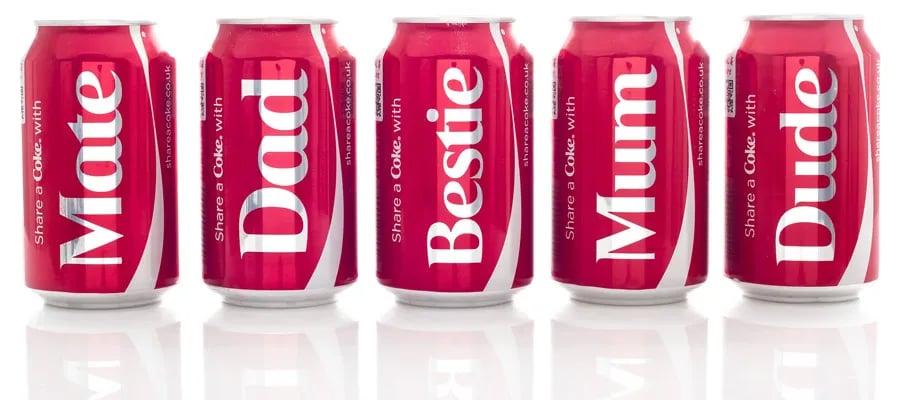
The first element was the Customer Experience Management platform, which is necessary to manage the campaign data:
- Segmentation
- Customer profiling
- Identity management
- AI-powered learning
- Creation of customer experience applications
The Adobe Experience Platform is the foundation that helps companies like Coca-Cola develop a robust foundation for delivering the right experiences to consumers across all channels. >> Case study: Starbucks success with the Inbound Marketing methodology<<

The management of digital assets in this Coca-Cola campaign was also an important task to solve, with crucial aspects such as:
- Personalized and consistent content for each profile
- Content suitable for each channel/profile
- Automation rules to be able to scale with minimum effort
- Ease of creating, distributing, and optimizing experiences on a large scale.
All of this may seem like a Herculean task. Still, it is with the help of specialized platforms that companies like Coca-Cola manage to implement these initiatives and achieve their objectives.
The second element is the Marketing Automation tool, required for a campaign that reached in the beginning alone more than 550 million personalized Coca-Cola, around 340,000 posts on Instagram with the hashtag #shareacoke, and a result by consumers of 96% with positive or neutral feelings towards the campaign.
All this is possible thanks to marketing automation platforms, where Marketo is a fundamental pillar to achieving engagement with customers throughout the customer lifecycle and delighting them to keep them as buyers and brand advocates.
Marketo Engage's always-on marketing principle was able to support Coca-Cola in automating the indispensable aspects of campaigns like this one: >> Main Advantages of Marketo<<
- Audience segmentation : Profiling communications consider behavioral, demographic, and channel data.
- Multichannel personalization : Tailored landing pages with conversion-oriented forms for customers receiving profiled communications from websites, emails, SMS, social networks, and events.
- Customer scoring (lead scoring) : Used this to determine the level of interest of each customer and drive the level of engagement at each stage of the funnel.
- Active marketing activities : Respond on time to a large contact base. Used automation to respond in real-time when a consumer activates a CTA, sending personalized content.
- Performance per campaign : Measuring performance in terms of ROI, revenue, investment, and funnel stage allows us to determine which investments yield the best returns.

Related blog: Case study: Panasonic and its growth with Marketo .
We see how in an increasingly digital world, the challenge for many companies, like Coca-Cola, is how to replicate the physical experience of their products in the digital arena.
Here is where marketing efforts have to lead to the digitization of the experience, where digital processes, strategies, technology, and the consumer as the center of the digital ecosystem must converge.
Finally, the secret ingredient of any digital initiative that Coca-Cola has been developing is innovation in a Customer Experience that moves a consumer thirsty for new and better experiences.
About this blog
Customer Experience Insights is a blog to share ideas, experiences and the vision of how to adopt better Customer Experiences in our organizations. Digital Transformation
Subscribe today
For weekly special offers and new updates!
Recent Posts
Posts by topic.
- Customer Experience (76)
- Strategy (70)
- Methodology (44)

Improve your presence in digital media
Other Blogs
You may be interested.

Optimize your business processes
This article arises after asking the following questions:Who doesn't like to improve? Who doesn't seek optimization in their daily tasks? Is there anyone who doesn't like to reduce costs or save money?
Tableau: Success Stories of Major Companies
Have you ever heard the phrase "Data is the new gold"? You've probably heard it, and it's clear that today, records that seem to be simple information alone actually have a massive impact on companies in terms of money, security, time, value, etc.
Hit a home run with HubSpot's Predictive Lead Score
Imagine that your company and your collaborators are at the center of a baseball stadium in the middle of a game. The stadium is filled with spectators, but most of them barely pay attention or show low interest in what you have to offer. Now, change the...
Customer Commerce Experience
Customer Omnichannel CRM
Customer Portal Experience
Customer Process Automation
Customer Web Experience
Methodologies
Sales Automation
Lead Conversion
Miami, Florida 333 SE 2nd AVE. 33131
New York, New York City 555 Madison AVE, Manhattan 10022
San Rafael de Escazú, Costa Rica Centro Corporativo Plaza Roble, 10203. Teléfono: +506 2201 1450
A deeper look into my life
April 5, 2024
Case Studies and Successful Advertising Campaigns
Blog Post #3
Alongside public relations, I am also currently enrolled in advertising and both courses have touched on case studies and successful advertising campaigns. Campaigns have the power to evoke emotions out of an audience and leave an impact. One campaign in particular that stuck out was the Share-A-Coke campaign. This Coca-Cola campaign is a shining example of how to utilize creativity.
Although this strategy may seem simple, the results were remarkable and it had a lasting impact. Coca-Cola launched this campaign back in 2011 and was aimed at reuniting its consumers with the brand. Sales weren’t doing as they had hoped and their customers weren’t engaged. The strategy is simple but brilliant. Instead of just putting the brand on the bottle, why not make it more personalized? Instead of a boring logo, put people’s names and phrases that people say all the time. Make the bottles more personalized and create a unique touch to the brand. This campaign transformed just an everyday mass-produced product into something that people can bond with. It was genius. As fast as a campaign can promote a brand though, it can also destroy it or destroy a different brand.
There was an instance that I just recently learned about regarding Coke and Cristiano Ronaldo. At a press conference, different bottles were presented to Ronaldo for his refreshments but he chose to take the coke off the table and keep the water. Such small actions such as this created a public relations disaster for the brand. An advertisement I remember is one that was banned years ago and it was made by coke. A boy was trying to get a soda from a vending machine, but he was not able to reach the button for Coke. He spent extra money to buy two cans of Pepsi just to be able to stand on them to reach the Coke button. In conclusion, although these actions were small, they had significant impacts on the brands. Ronaldo’s small action may have cost the brand millions, unintentionally. Coke’s advertisement may have cost Pepsi millions.
These examples serve as valuable lessons that although some campaigns are very successful, some aren’t and some can be easily destroyed.
- Author Info
- Personal Brand
Previous post
Navigating the Digital Frontier: Trends in Advertising
Unveiling the magic: behind the scenes of ad creation.
Administrator
Posts by Cade Hulse
Key elements of effective advertising, navigating ethical waters: advertising ethics and responsibility, the evolution of advertising platforms, comments by cade hulse.
The Intellectual Property Law Blog at Loyola University Chicago
Trademark tale: from a mistaken coca-cola enthusiast to aspiring ip attorney.
Author : Clara Finger Assistant Blogger Loyola University Chicago School of Law, JD 2026
Interviewer: “So, what’s your favorite Coca-Cola product?”
Me: I draw a blank at the simple question, trying to think of any Coca-Cola product in existence. A picture of the classic Coca-Cola can flashes in my mind; the bold cursive letters against the vibrant red background. “Well, it has to be Coca-Cola, of course!”
Interviewer, somewhat skeptical: “The original Coca-Cola?”
Me: “That’s the one! It takes me right back to being a kid on a hot summer day, grilling in the backyard. I would reach for an ice-cold can of Coca-Cola from the cooler. The white lettering against the red background is unmistakable.” Why did I just describe the Coca-Cola logo? She [the interviewer] obviously knows what it looks like.
You want the truth? Was I head over heels for classic Coca-Cola back then? Not really. Did backyard family grills feature Coca-Cola as a regular? Also not the case. In reality, our family leaned towards Sprite (which is still a Coca-Cola product!). But alas, nerves, in their infinite wisdom, decided to stage a hostile takeover of my brain. The image of the logo led me to blurt out “Coca-Cola”–like a magician pulling the wrong rabbit out of a hat.
Despite that, I landed a marketing internship with Reyes Coca-Cola (a bottler and distributor of Coca-Cola brands) as an undergraduate. Little did I know that the popular logo I had imagined in my initial interview would steer me toward a career in Intellectual Property (IP).
The Influence of “Coca-Cola” As a campus marketing intern, I dove into the world of branding. I executed marketing projects and observed how students perceive Coca-Cola products .
As I carried out my marketing initiatives, I discovered that people had an impactful relationship with the Coca-Cola logo. I noticed that regardless of what products or merchandise we offered, the standout feature at every event was the bold red and white “Coca-Cola” logo displayed on either a tablecloth or a backdrop. Students would crowd at our stand like moths to a flame, lured in by the unmistakable script and red backdrop. The purpose of marketing is to generate interest in products, and our team found that the key to initiating this process was to use the Coca-Cola logo to grab the attention of consumers.
Recognizing the influence of the Coca-Cola trademark prompted me to enroll in a trademark law class the following semester. As an undergrad, I had the unique opportunity to enroll in the trademark law class at the University of Minnesota Law School with a dynamic group of law students. It was this course that made the relationship between branding and trademarks click for me.
My First Trademark Law Class (as an undergrad) On the first day of class, I learned the formal definition of a trademark : a unique symbol, word, or design that acts as a source identifier for a good or service. I thought back to the Coca-Cola logo that had come to mind during my interview. The logo is a prime example of a trademark because it’s a unique symbol that helps people connect a product to a specific company (i.e. source identifier).
As consumers, we interact with trademarks on a regular basis. For example, imagine scanning for the familiar red and white Coca-Cola logo in the beverage aisle. We scan for the Coca-Cola logo because it indicates the “real” coke as opposed to something like Whole Foods Cola (pictured above). Naturally, this practice goes far beyond the beverage industry and into the vast landscape of the consumer market.
Think about buying a new computer, for instance. When you see the glowing apple on the back of a laptop, you instantly recognize it as an Apple product. The apple isn’t just a decoration; it’s their trademark, a mark that signals you are getting a genuine Apple computer rather than another brand (e.g. Dell , Microsoft , etc.). I learned in my trademark class that consumer recognition of these logos is important.
As the semester went on, the course covered how to optimally protect trademarks and enforce trademark rights. My view of trademarks transformed from mere symbols to legal assets. After exploiting the Coca-Cola trademark during my internship, it made sense why companies often go to great lengths to establish and protect their trademarks. By the end of the course, I knew a career in IP was something I wanted to pursue because I enjoyed the subject material and could see a lifelong career built on it.
Exploring IP at Loyola In my first semester at Loyola University Chicago School of Law , I joined the IP Law Society . This gave me the opportunity to network with fellow law students and seasoned IP attorneys.
One of my favorite events of this past semester was the “No STEM Degree? No Problem” panel. I was able to learn from IP attorneys without a STEM background about the diverse array of projects they work on. These projects included managing trademark portfolios (protecting and administering trademarks) and litigating patents (a suit over unlawful use of a patent). I also participated in the IP Speed Networking event hosted at Loyola. I connected with 20 IP attorneys and learned about their experiences in different legal settings, including roles in-house and at big law firms.
My enrollment in the IP legal writing section has allowed me to develop my legal writing skills while learning more about IP. Last semester, I wrote a legal memorandum concerning a patented pancake mix.
Lastly, Professor Ho , Loyola’s IP Program Director, has supported me in exploring various career paths in this field. She keeps me informed about valuable networking opportunities and job prospects.
“Coca-Cola” Saved the Day and Led the Way It’s safe to assume that Coca-Cola’s iconic trademark saved the day during my interview. Had I not been able to name even the most obvious Coca-Cola product, the outcome of my job interview likely would have been different. From the marketing internship to enrolling in a trademark law class, I went from viewing a mark with a marketing perspective to a legal one.
As I navigate law school at Loyola, I am excited to explore all the facets of intellectual property.
Clara Finger Assistant Blogger Loyola University School of Law, JD 2026

IMAGES
VIDEO
COMMENTS
Hands-on Brand Strategy Help. Transform your best business thinking into an actionable, shareable, growth-oriented guide. Click below to learn about the Brand Guidebook process. Analysis of Coca Cola's brand strategy, identity, positioning, key messages, tone of voice, brand archetypes, benefits, competitors, and content.
The Coca-Cola logo is a must-have for any brand. It's got a bold red color that makes you feel energized and passionate, and the simple design makes it easy to remember. The curved script of the ...
The consistency in the Coca-Cola brand identity over more than 130 years is a testament to the power of strong visual branding. It underlines the brand's ability to evolve with the times, while staying true to its identity - an element crucial to its widespread recognition and appeal. ... In each case, Coca-Cola took the criticism, learned ...
From the star 'Coca-Cola' drink to Inca Kola in North and South America, Vita in Africa, and Thumbs up in India, The Coca-Cola Company owns a product portfolio of more than 3500 products.With the presence in more than 200 countries and the daily average servings to 1.9 billion people, Coca-Cola Company has been listed as the world's most valuable brand with 94% of the world's ...
February 8, 2023. Coca-Cola has an impressive track record of innovation which has helped propel the company to become one of the most successful brands in history. Through skillful advertising efforts, Coca-Cola is widely recognized as a symbol of American culture through its influence on politics, pop culture, and music around the globe.
Product strategy. Coca-cola has approximately 500 products. Its soft drinks are offered globally, and its product strategy includes a marketing mix. Its beverages like Coca-Cola, Minute Maid, Diet Coke, Light, Coca-Cola Life, Coca-Cola Zero, Sprite Fanta, and more are sold in various sizes and packaging. They contribute a significant share and ...
One of the classic marketing mistakes occurred in April 1985 when Coca-Cola replaced its flagship cola brand with a new formula. The motivation behind the change was primarily a competitive one. Pepsi-Cola's " Pepsi Challenge " promotion had posed a strong challenge to Coke's supremacy over the cola market. Starting initially just in ...
1. Consistency is King. Coming up with fresh marketing campaigns is of vital importance. However, within these different marketing campaigns, one clear, consistent message is always apparent. In the case of Coca-Cola, their brand is built on the idea of "enjoying a coke.".
Introduction: Coca-Cola, one of the world's most iconic beverage brands, has undergone several rebranding initiatives throughout its long history. This case study focuses on a recent rebranding ...
5. Impact of Brand Storytelling on Coca-Cola's Brand Identity. Brand storytelling has played a significant role in shaping Coca-Cola's brand identity. The strategic use of narratives and emotional appeals has had several key impacts on the brand's perception, consumer loyalty, and global consistency.
Case Study: Coca-Cola Coca-Cola, one of the world's most recognizable brands, has maintained a consistent image for over a century. The red and white color scheme, the classic contour bottle, and the timeless "Enjoy Coca-Cola" slogan have remained largely unchanged, fostering a sense of nostalgia and reliability.
The Coca-Cola marketing strategy is an innovative, ever-evolving, multi-pronged strategy that has given the brand its proprietary eponymous status. The potent combination of the Coca Cola ...
The brand personality is infused into the core of what your business projects to consumers. It makes your brand identifiable. Coca-Cola's brand voice is achieved as they approach all of their marketing material with the goal of projecting a persona that is positive and down-to-earth. Their language they use can be classified broadly as light ...
Some key points of Coca-Cola Case Study: The company brand value was estimated at $97.9 billion in 2022. The brand logo can be recognized by 93% of the global population. For advertisement the company has used $ 4 billion annually for advertising, between the years 2015 to 2021, except for the year 2020 (due to pandemic). ...
The objective of this study was to determine the relationship between brand positioning and brand equity; The Coca Cola case study. The research focused on the dimensions of brand equity which ...
1947 to the 1960s saw the use of 'The Coca-Cola Red Disc' that was used to advertise Coca-Cola. Later the discs began to be hung inside businesses as advertising and decoration. The next chapter in the Coke logo evolution comes in from 1958 to the1960s. This saw the Coke logo move into a fishy or Arciform shape.
Marketing 7 Coca Cola Marketing Strategy 2024 - A Case Study. Coca-Cola, the iconic soft drink brand that has been quenching thirsts for over 120 years, continues to reign supreme as the most consumed soda globally. With an astonishing 1.9 billion servings enjoyed daily in more than 200 countries, Coca Cola marketing strategy has proven to be a ...
Coca-Cola, founded in 1886, has grown to become one of the world's leading beverage companies. This case study explores Coca-Cola's brand legacy, marketing innovations, product diversity, sustainability initiatives, and the challenges and opportunities in an ever-changing global beverage market. Background:
The main objectives of the campaign were to: a. Strengthen the emotional connection between consumers and the Coca-Cola brand. b. Encourage social sharing and word-of-mouth promotion. c. Generate buzz and excitement around the brand. d. Increase sales and consumption of Coca-Cola products. Research and Preparation: Before launching the campaign ...
Coca-Cola was founded by a pharmacist Dr. John S. Pemberton from Atlanta. He wanted to make a different-tasting soft drink that could be sold. He made a flavoured syrup and mixed it up with carbonated water. Later on, his partner Frank M. Robinson named that water-mixed drink Coca-Cola.
The not so lucky situations and criticism of the Coca-Cola brand come from its first-ever product. As the history from many sources says, Dr John Smith-Pemberton, Coca-Cola creator, fought in the Civil War, and had some injuries.
In the case of this campaign, as shown in Fig. 1, the words used in the advertisement of Coca-Cola (e.g. hug, share) brought a sense of warmth and happiness to consumers and were able to target a broader audience including children, youth, and adults, thus increasing consumer brand loyalty and enhance the work-of-mouth of Coca-Cola.At the same time, Coca-Cola has worked to develop diverse ...
In an interview with Little Black Book, Coca-Cola's global vice president Islam ElDessouky, a self-proclaimed "'hardcore guideline person", explained how the campaign was both occasionally uncomfortable and ultimately rewarding."There are two values that are super solid in the brand foundation," he told the publication. "One is inclusion - I think Coca-Cola prides itself on being for ...
Coca-Cola is undoubtedly one of the most recognized brands in the world, with a market presence that dates back to its beginnings in 1886 when John Pemberton served the first Coca-Cola. Today, the Coca-Cola Company sells hundreds of beverage brands in more than 200 countries. It is calculated that the average person consumes approximately 275 ...
This Coca-Cola campaign is a shining example of how to utilize creativity. Although this strategy may seem simple, the results were remarkable and it had a lasting impact. Coca-Cola launched this campaign back in 2011 and was aimed at reuniting its consumers with the brand. Sales weren't doing as they had hoped and their customers weren't ...
But alas, nerves, in their infinite wisdom, decided to stage a hostile takeover of my brain. The image of the logo led me to blurt out "Coca-Cola"-like a magician pulling the wrong rabbit out of a hat. Despite that, I landed a marketing internship with Reyes Coca-Cola (a bottler and distributor of Coca-Cola brands) as an undergraduate.
Coca-Cola Case Study Whitney Jones Ottawa University OAD 31863 Professor Rieger February 25th, 2024. Coca-Cola Case Study Coca-Cola is one of the world's most iconic and valuable brands, known for its refreshing beverages and innovative marketing strategies. In the video titled "Liquid and Linked," Coca- Cola highlights eight important ...
Question: Coca Cola Case Study: An Analysis Of Organizational Behavior. Coca Cola Case Study: An Analysis Of Organizational Behavior. Here's the best way to solve it. Powered by Chegg AI. Share Share. The Coca-Cola case study provides an excellent op... View the full answer.